-
Spokane, WA
Spokane, Washington, nestled along the Spokane River in the eastern part of the state, is known for its rich history, vibrant arts scene, and stunning natural surroundings. Named after the Spokane Tribe, 'Children of the Sun' in the Salish language, the city reflects deep indigenous roots and natural beauty.
All pictures and panoramic images are taken with 1/1000s f/5,6 ISO 100/21° f=7,5mm, unless noted otherwise.
🏥 UW
Our journey begins at the University of Washington School of Medicine's Spokane campus, where the first panorama captures the academic heart of the city.
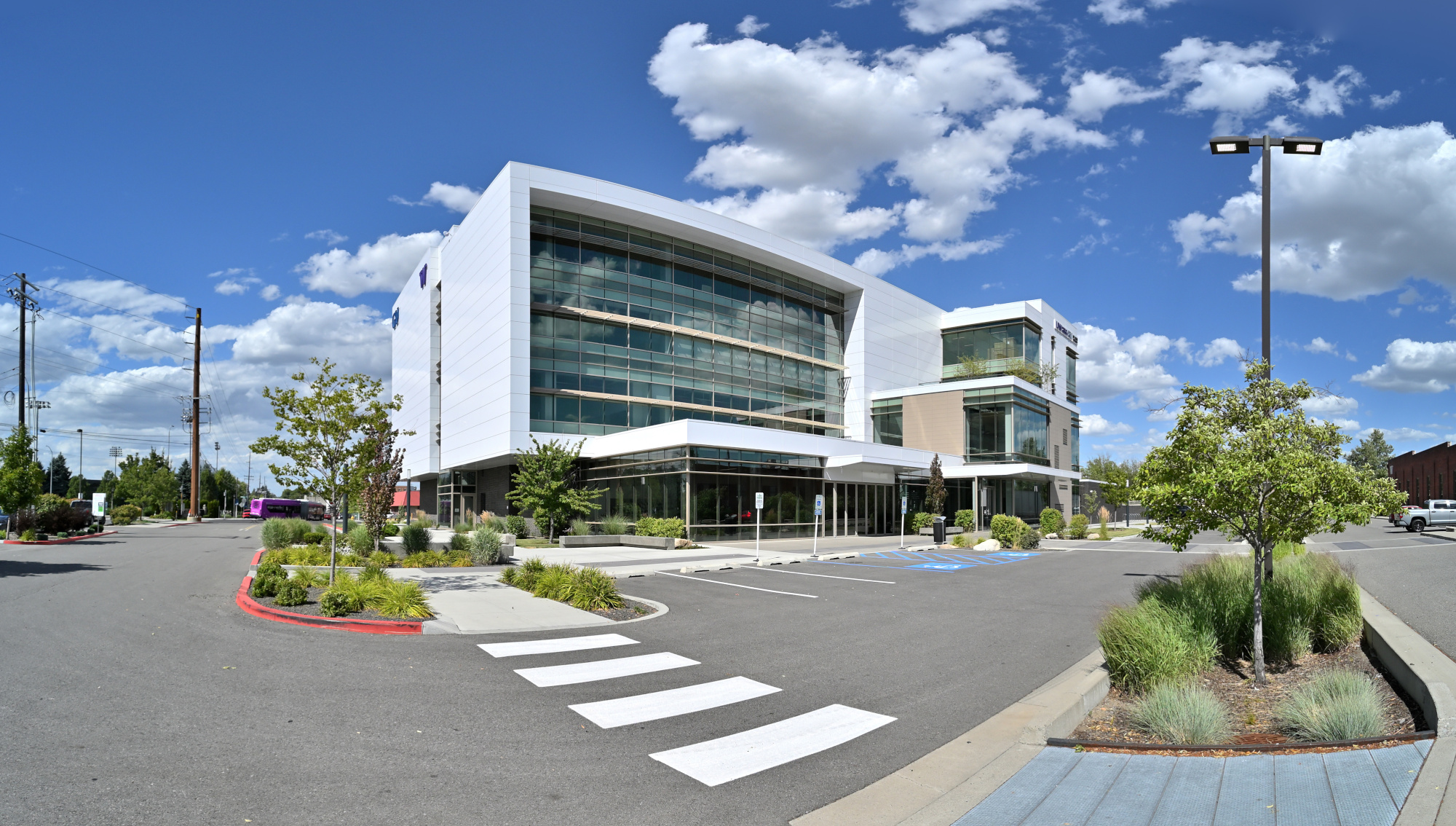


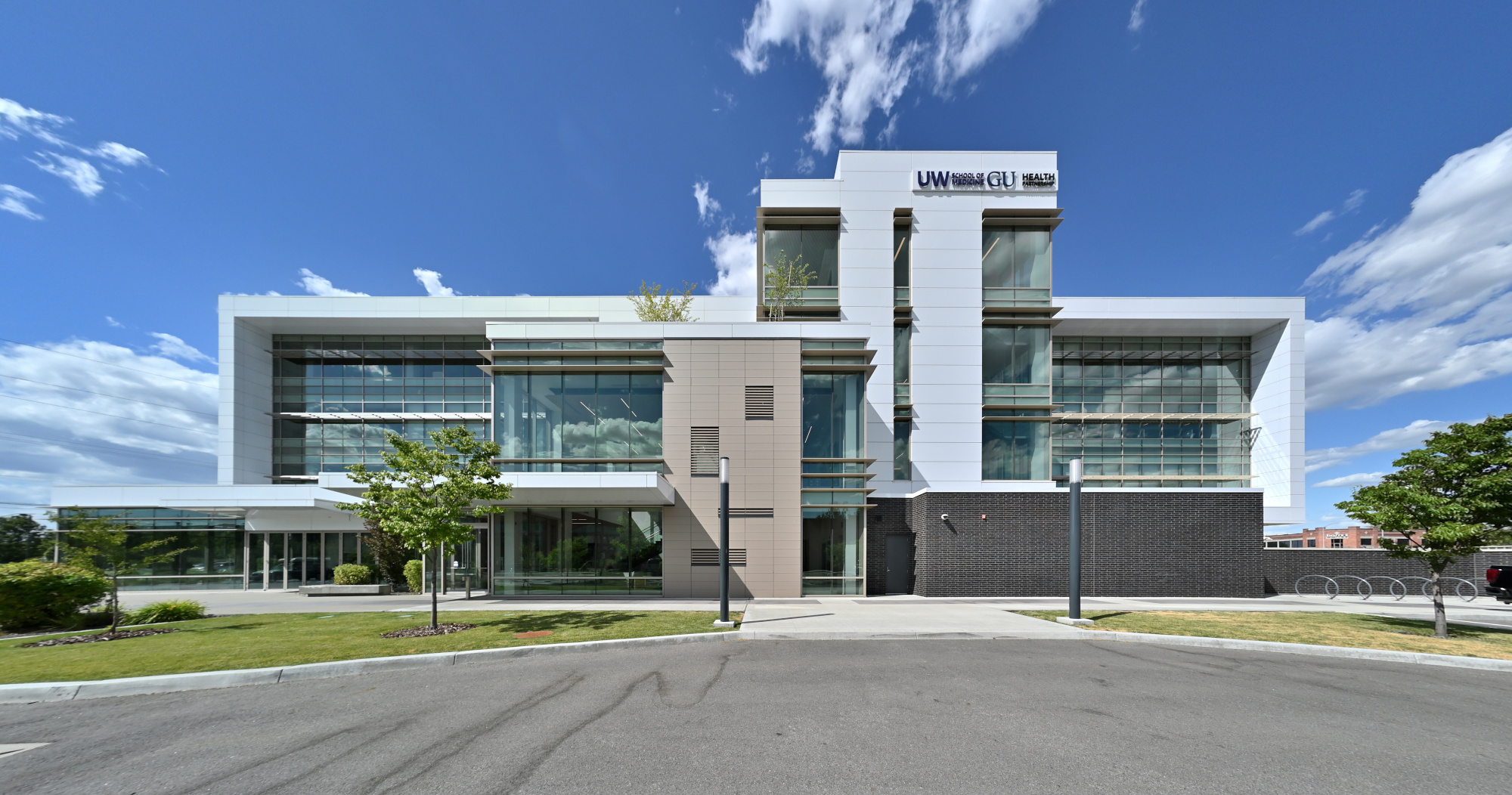

🌳 Riverfront Park
Spokane's green centerpiece, once the site of Expo '74, is now a vibrant public space full of history and movement. Bridges connect the city to Havermale Island, where some panoramas were taken. The view here spans from the upper Spokane Falls to the Pavilion, capturing the park's dynamic blend of nature, architecture, and community life.
The Centennial Sculpture on a cloudy day
And next to it, The Great Northern Clocktower
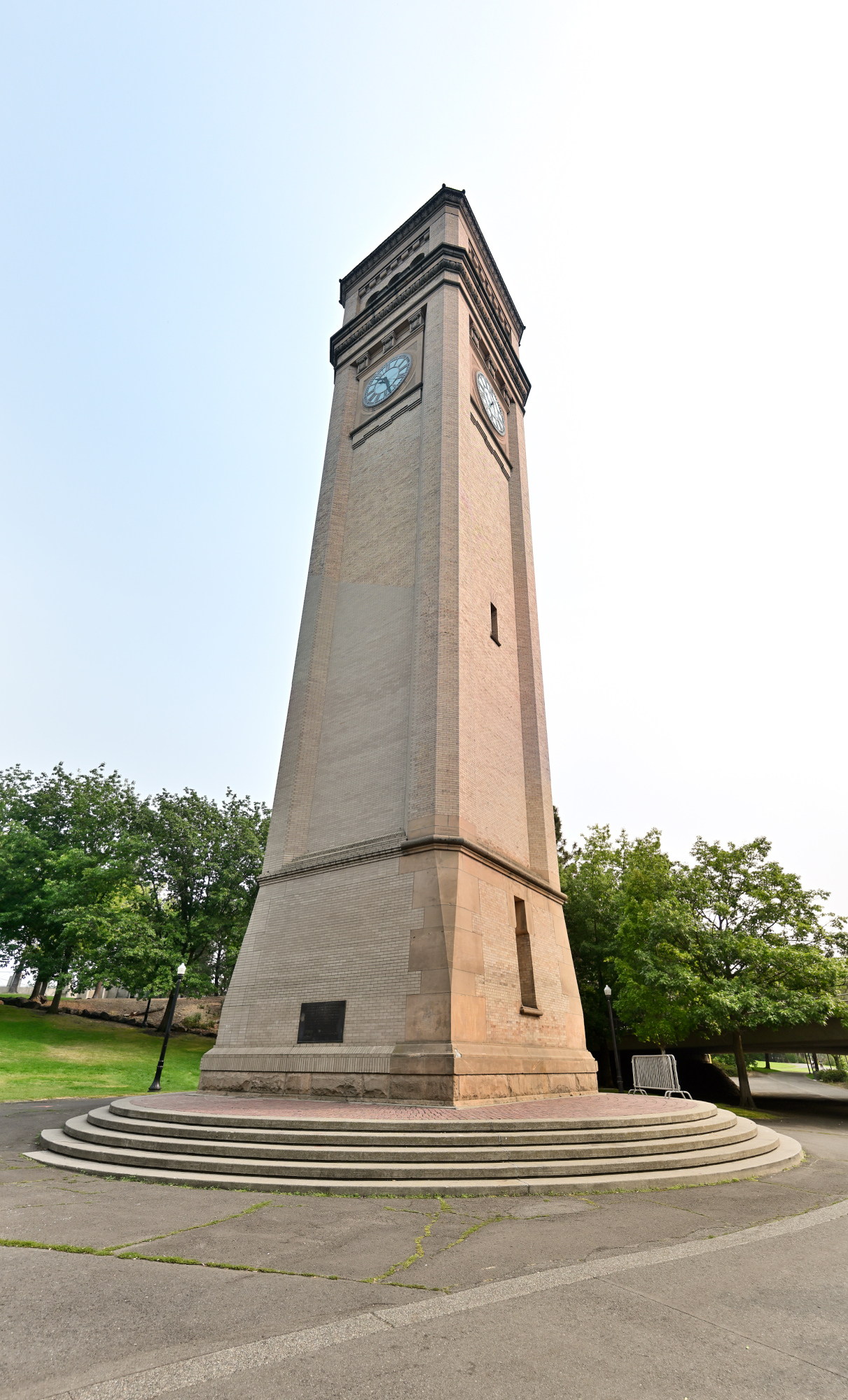
View from a nearby Hotel to the Riverfront Park

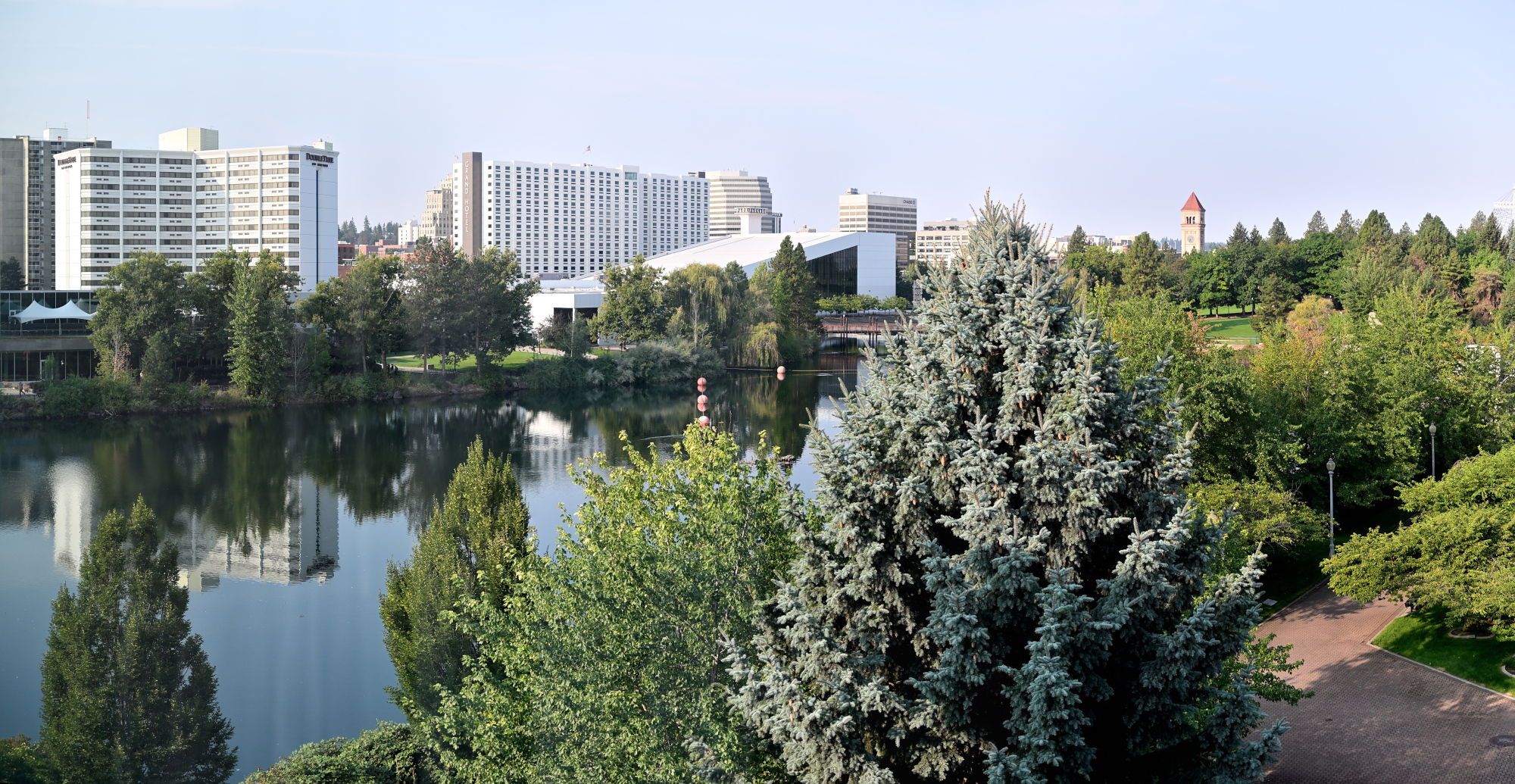
This particular panorama proved trickier than expected. Without a tripod, aligning the frames by hand made it difficult to maintain precise rotation around the nodal point, which is essential for perfect stitching. I even added an extra frame to help with stitching, but small imperfections remain. Still, the result captures the essence of the scene, even if a few pixels had a mind of their own. Sometimes, the story behind the image is part of the image itself.
Interactive Panorama Spokane Pavilion

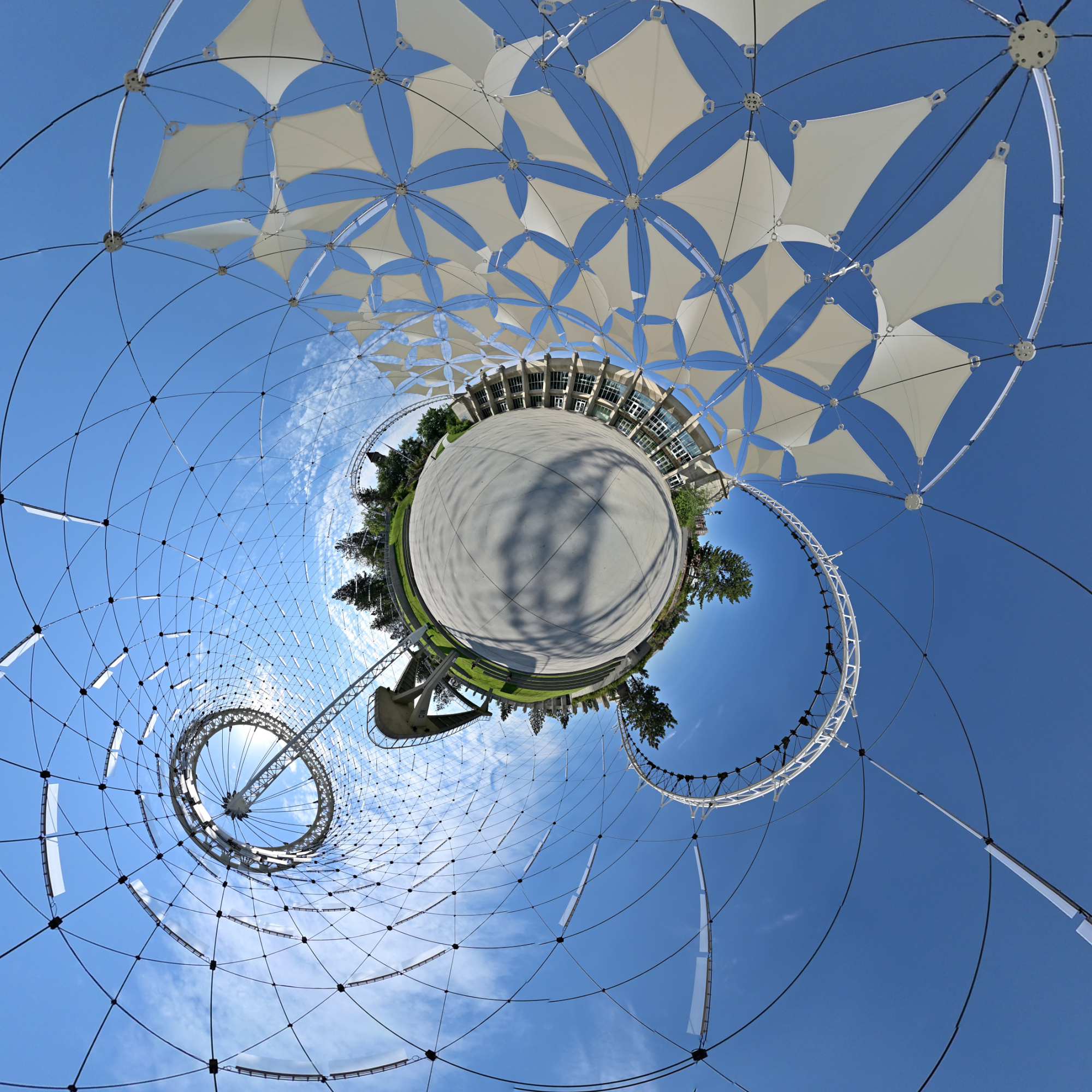
Interactive Panorama King Cole Woodbridge
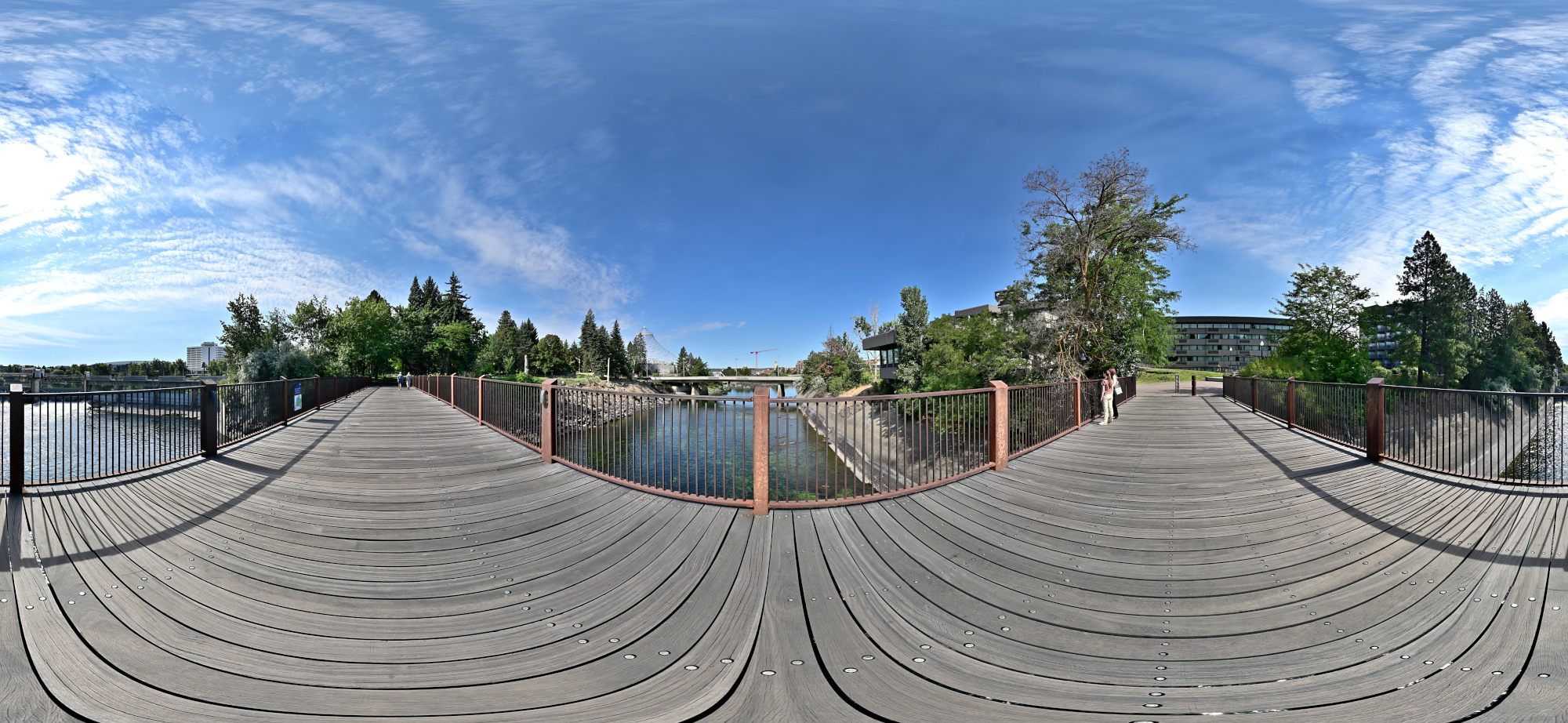
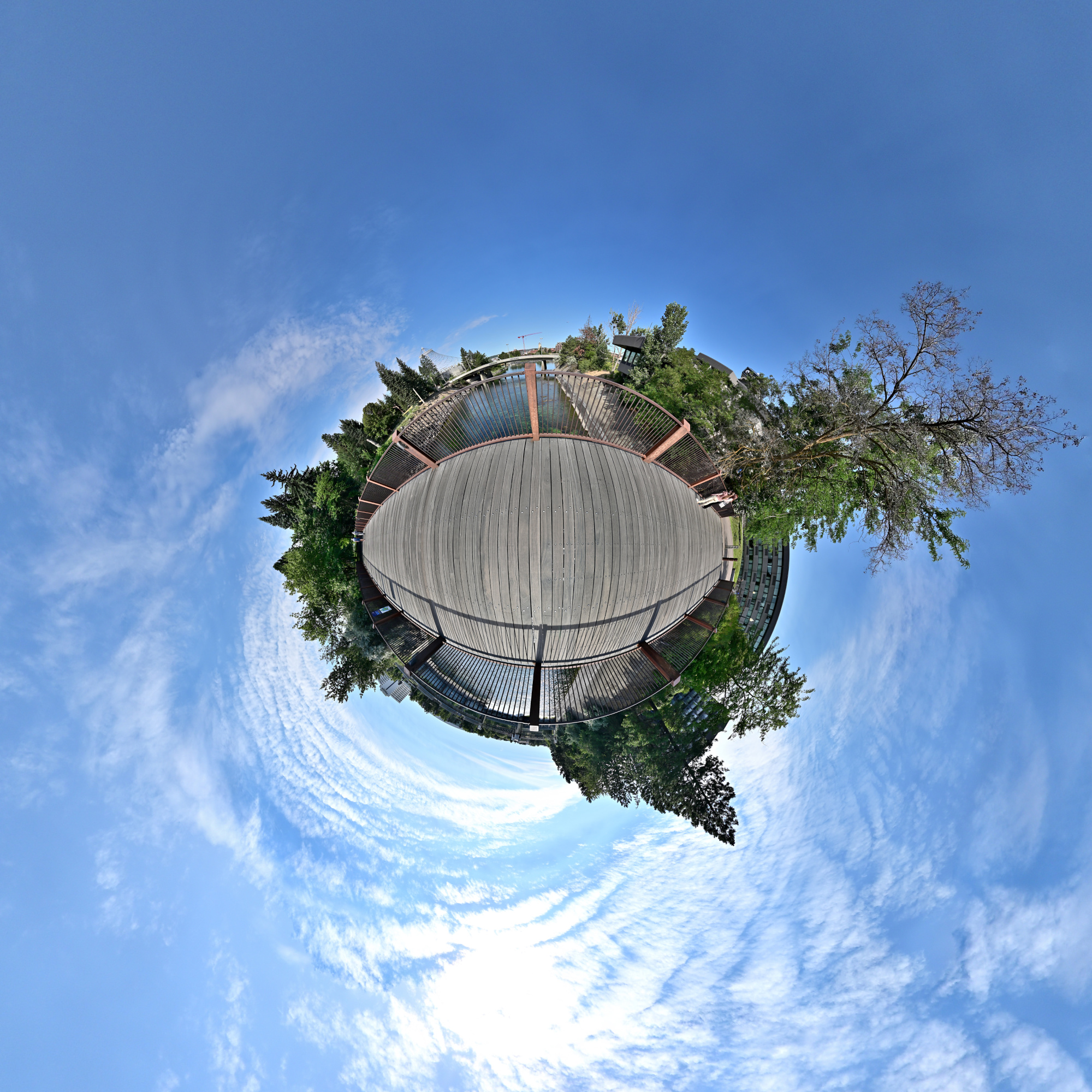
Interactive Panorama Spokane Falls Brücke


🌊 Spokane River
The Spokane River winds through the city, carving its path through stone and story alike. Along its banks, trails, bridges and parks invite exploration. The panoramic images captures the river's flow near one of its quieter bends, where reflections of sky and trees ripple across the surface.
Framed by Steel: A View Through the Bridge
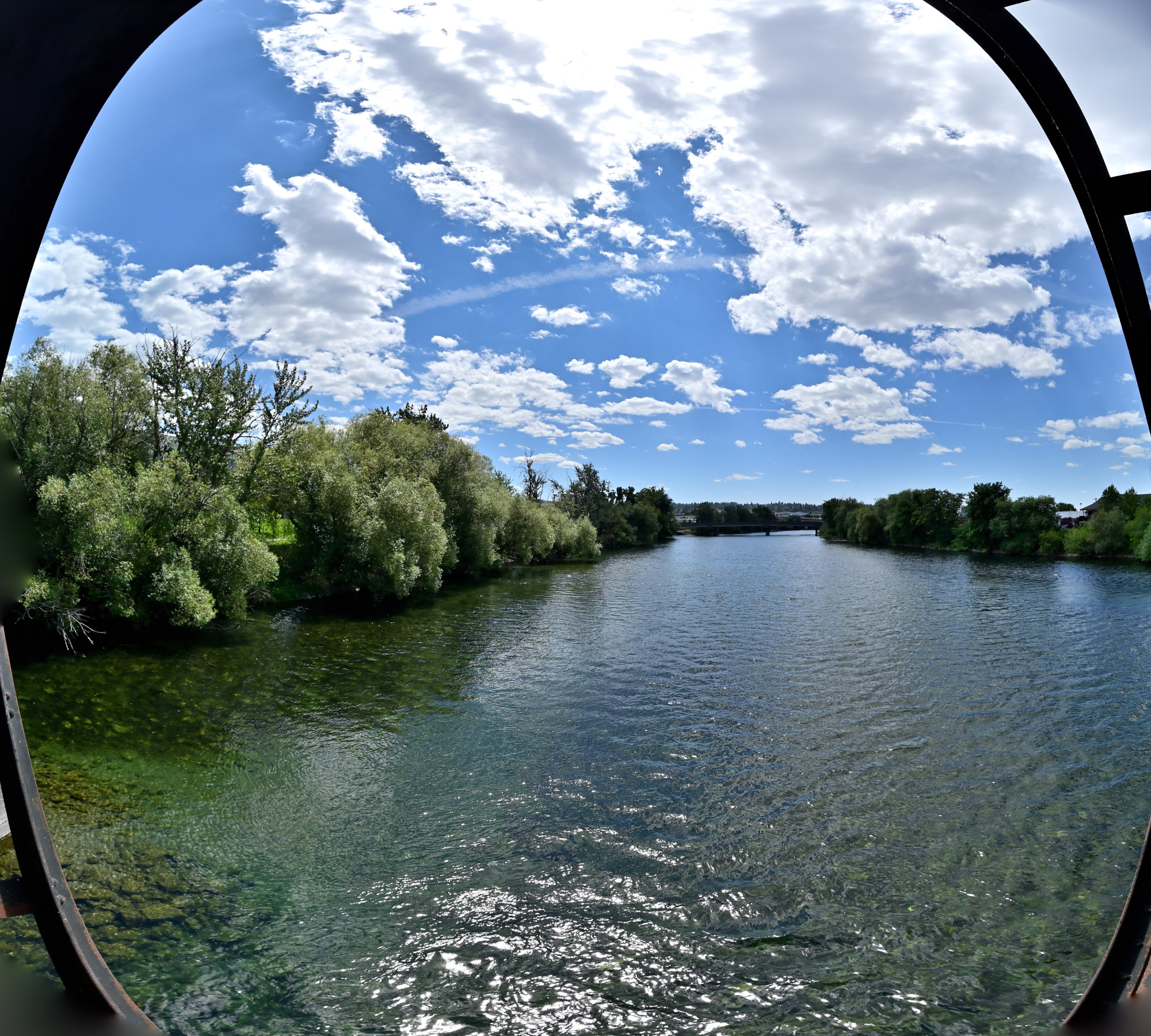
River bend

Sunlit Walk Along the Water

More Pictures Along the Riverside
The World Wide Panorama contribution for the event 'Why'
A single dead tree stands between the walkway and the riverbank. Its bare branches reaching skyward in contrast to the lush greenery around it.
Why did it die? Was it disease, drought, or simply age?
Its presence adds a quiet tension to the scene, a reminder that even in places full of life and movement, stillness and decay have their place too.Interactive Panorama Spokane River
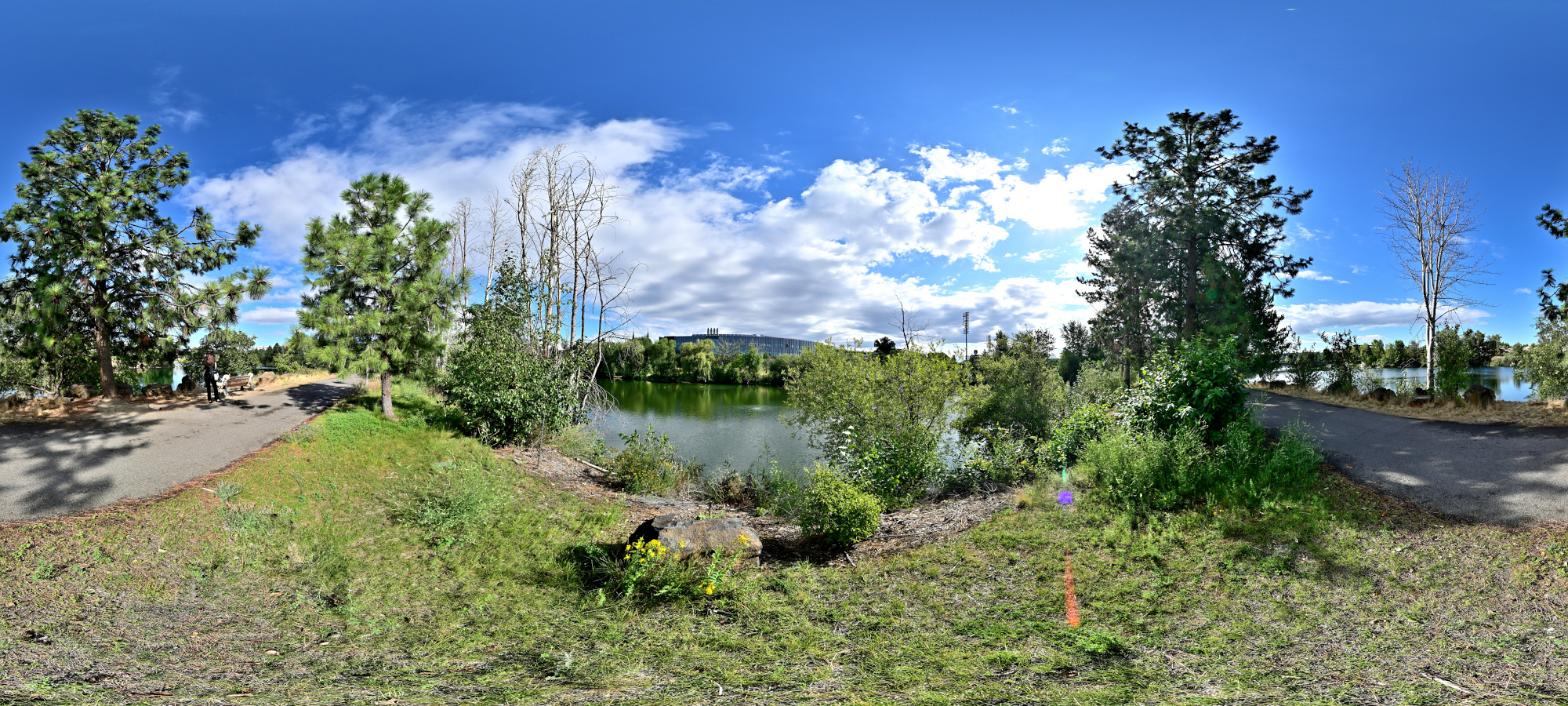

🏢 Apartment Where We Stayed
Spokane offers a wide spectrum of hotel experiences, like a roulette wheel of hospitality. On one end, you've got places like the Ramada by Wyndham, where the décor is "early abandonment", the guests are... let's say colorful, and the rooms come with a complimentary layer of grime. On the other end, there are sleek 4-star hotels that promise luxury but sometimes deliver lukewarm service and Yelp reviews that read like cautionary tales. And in the middle? The classic 3-star American hotel, where breakfast includes a waffle machine, questionable eggs, and the lingering scent of disappointment. Choose wisely, or at least pack your sense of humor.
We were lucky. Tucked into a quiet neighborhood close to the campus, our apartment served as a perfect base for exploring the city. With morning light filtering through the windows and the scent of pine in the air, it offered a peaceful retreat.
Interactive Panorama Apartment 1

Interactive Panorama Apartment 2
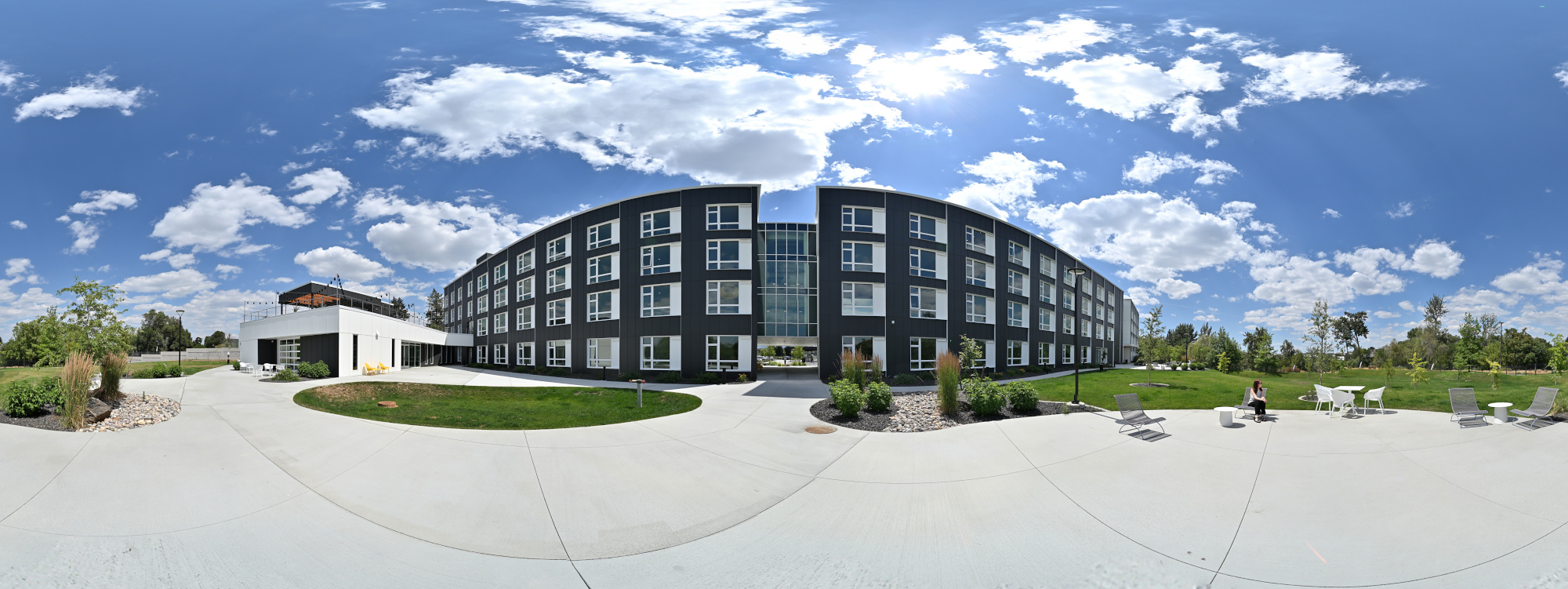
✈️ Airport
Our journey ends where we first arrived, and we leave Spokane behind with memories captured in light and lines. Spokane International Airport welcomes visitors with a mix of regional charm and modern convenience. The terminal's open design and surrounding pine-dotted landscape offer a first glimpse of the Inland Northwest's character.
1/80s f/5,6 ISO 200/24° f=7,5mm
1/80s f/5,6 ISO 160/23° f=7,5mm
The 737 arrives
Taxi-in
Passenger boarding bridge attaches
Start refueling and unloading
The windows facing the airfield are tinted with a subtle blue hue, and be corrected by adjusting the white balance (photos were taken using the sunlight white balance setting).
Forty minutes later, we rolled into Seattle and the Spokane chapter came to a close, pixels packed, panoramas pending, and the last bit of sunlight archived in RAW.
🌥️ Above the Clouds – To Spokane and Back
Every journey begins with a takeoff and ends with a landing — but what happens in between is often the most quietly beautiful. This segment captures both the outbound flight into Spokane and the return above the rugged silhouettes of the Cascade Mountains. From the first lift-off into layered skies to the final descent through fading light, the airborne chapters of this trip offer shifting perspectives: pine forests from above, rivers winding like thoughts, and clouds that blur the boundary between memory and motion.
All images and clips were captured using my Android phone.
SEA - GEG1
Boarding

Taxi out from Seattle
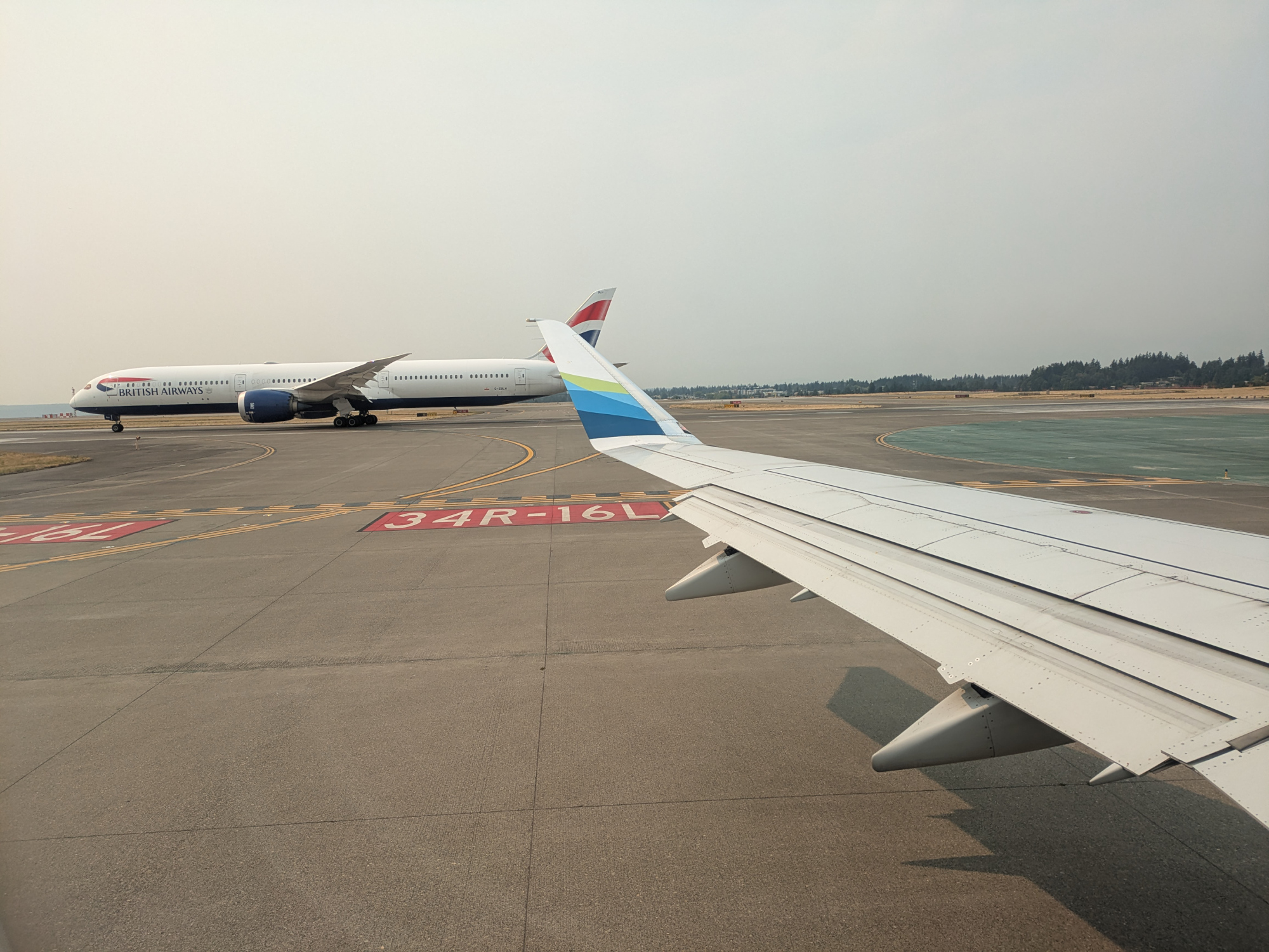
Our turn now, with all the other Bombers lined up for their turn

Takeoff
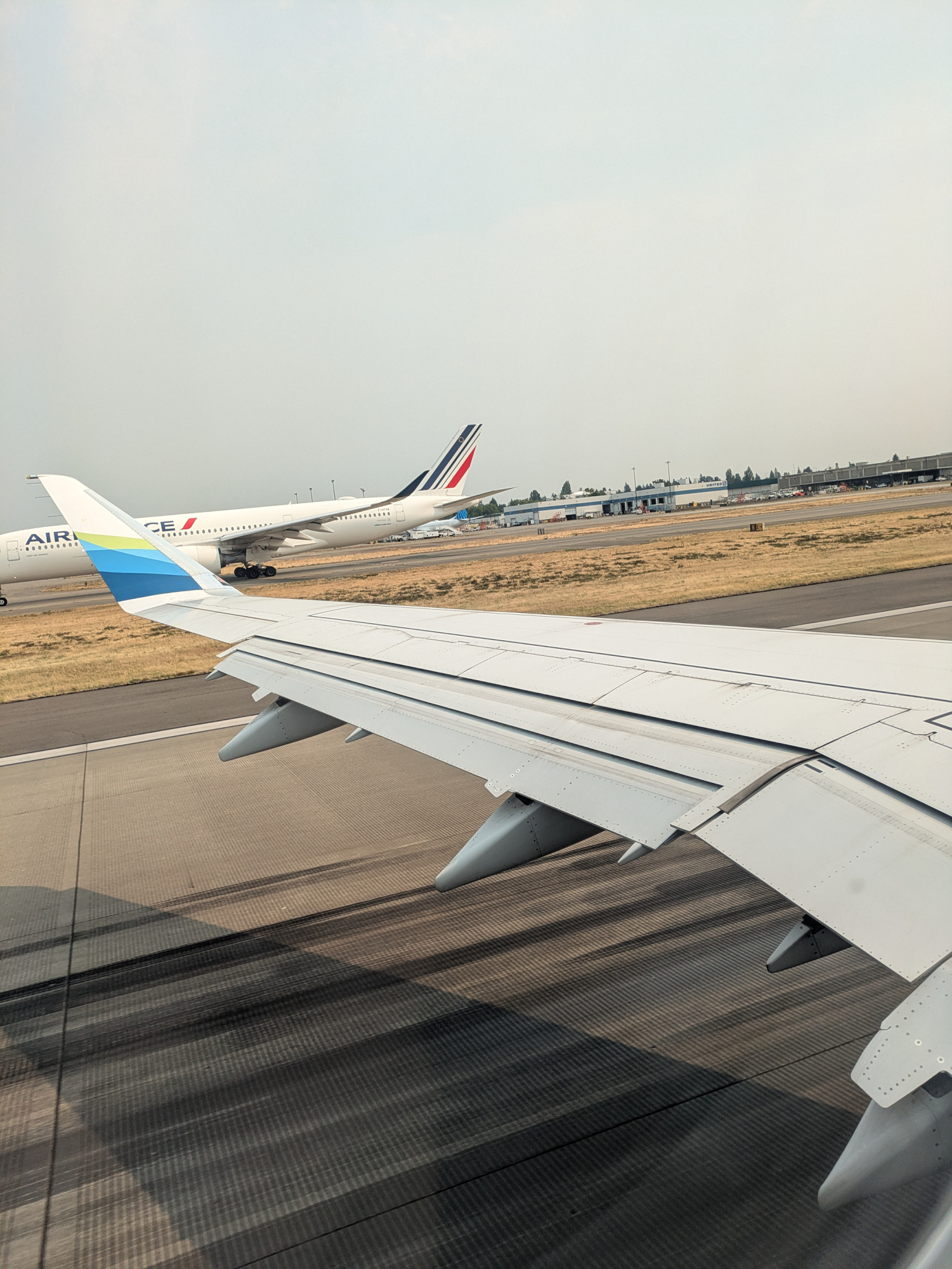
Imagine being stuck in that one for 10 hours. It is just you, sushi, and the slow unraveling of time.
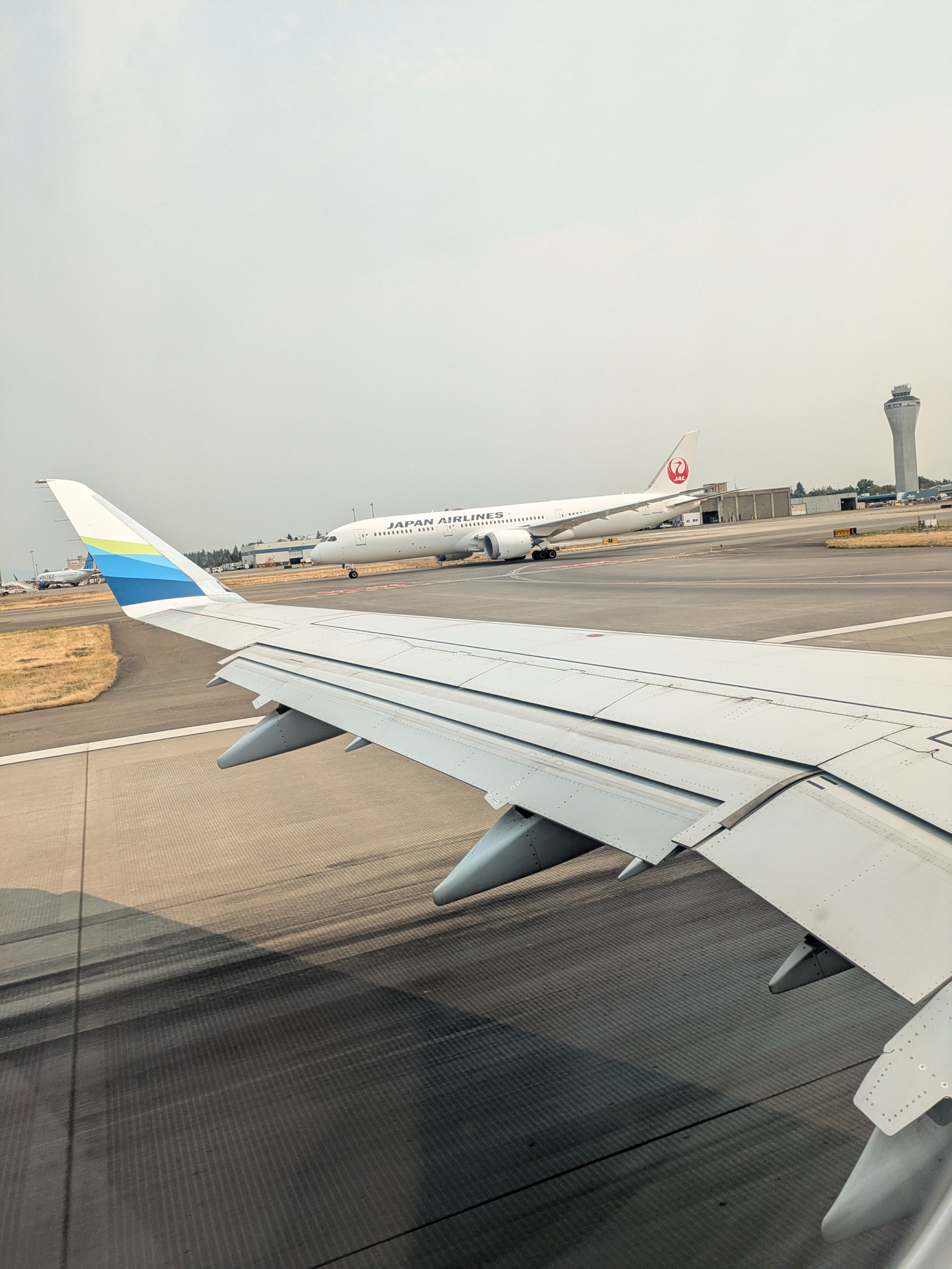
View on the Main Terminal

The South Terminal. The empty spot is S11, where the Frankfurt flight LH491 departs.
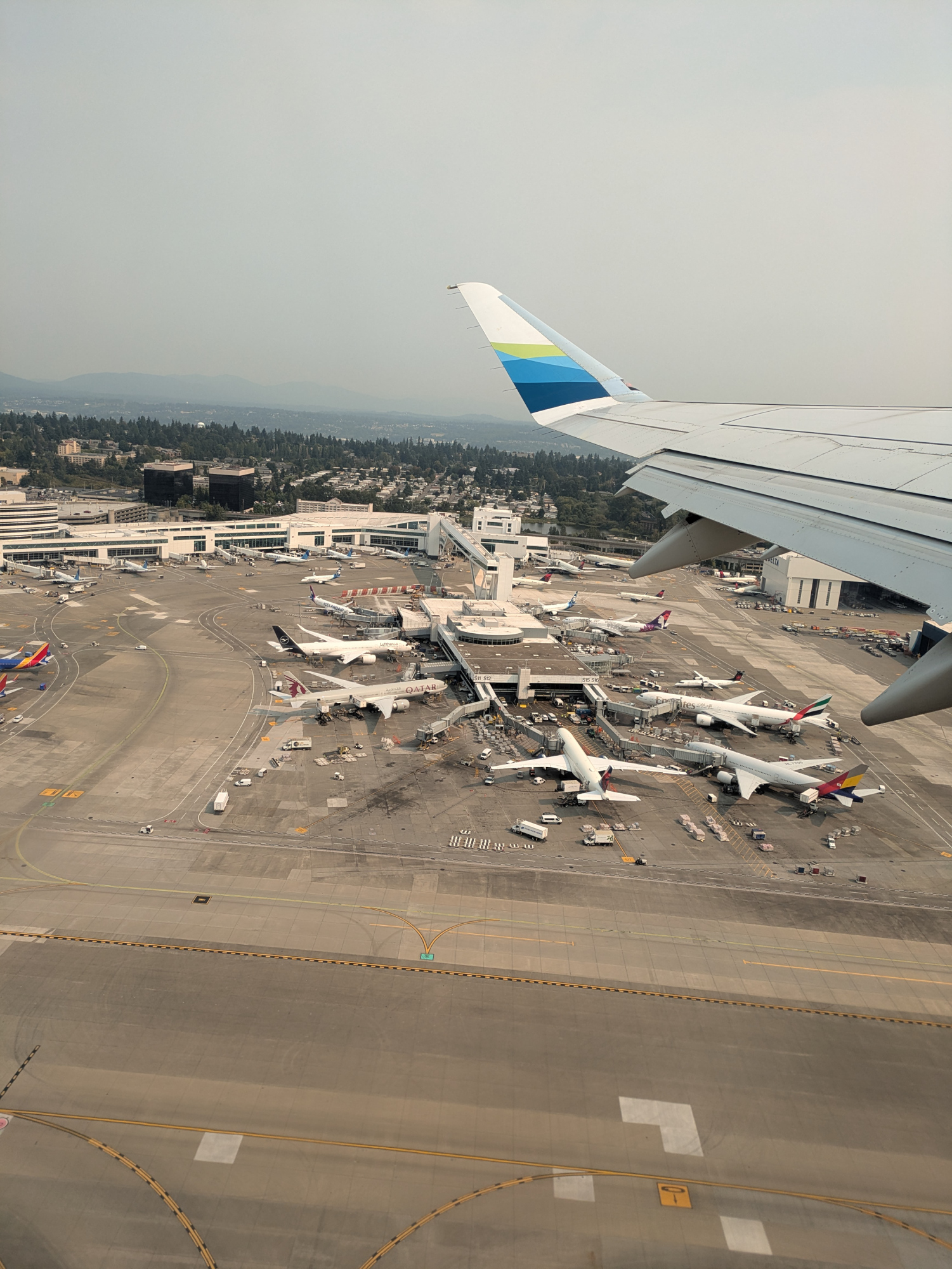
This view shows Steel Lake at the bottom and Lake Dolloff at the top, separated by Interstate 5
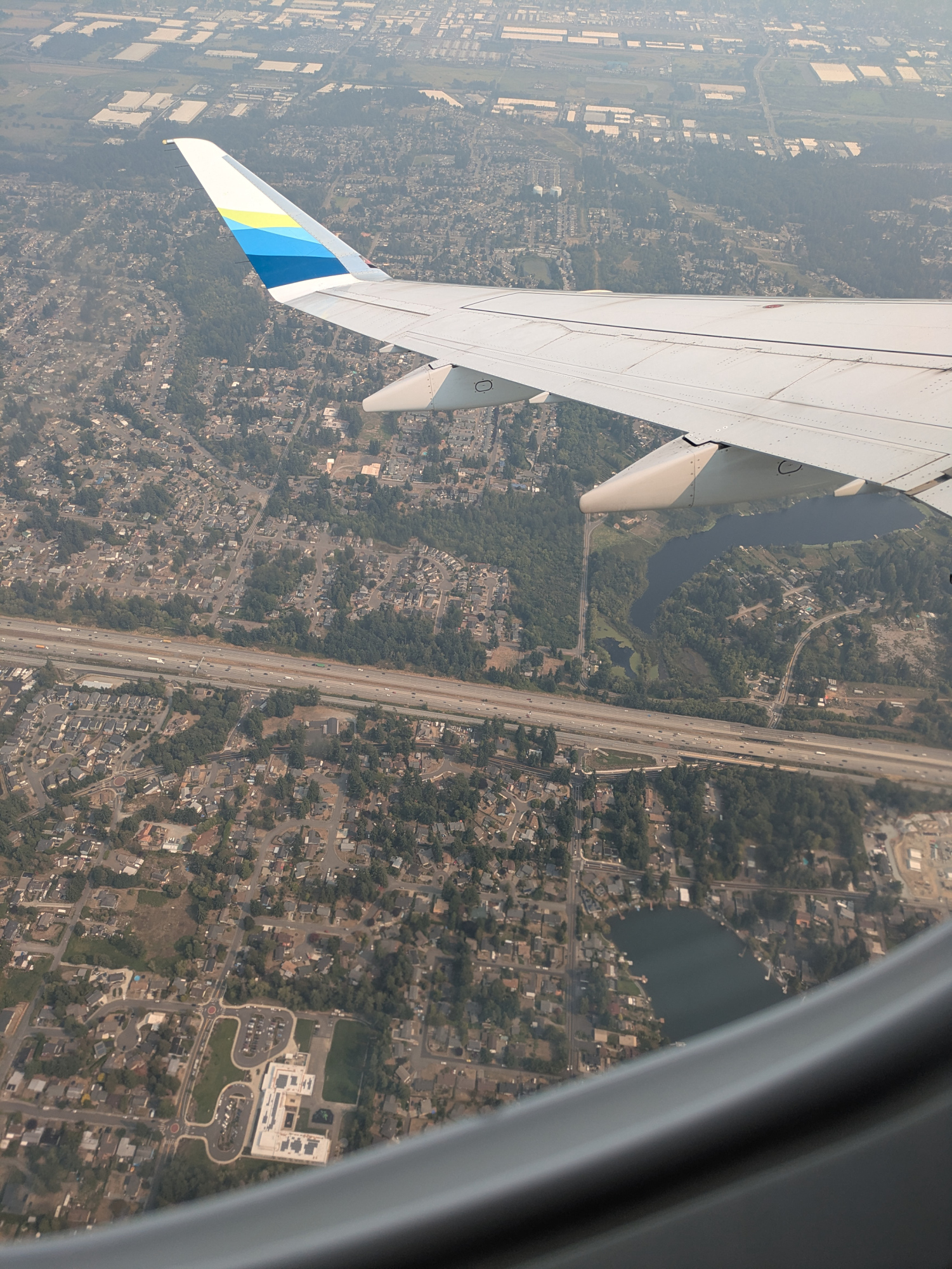
Landing in Spokane
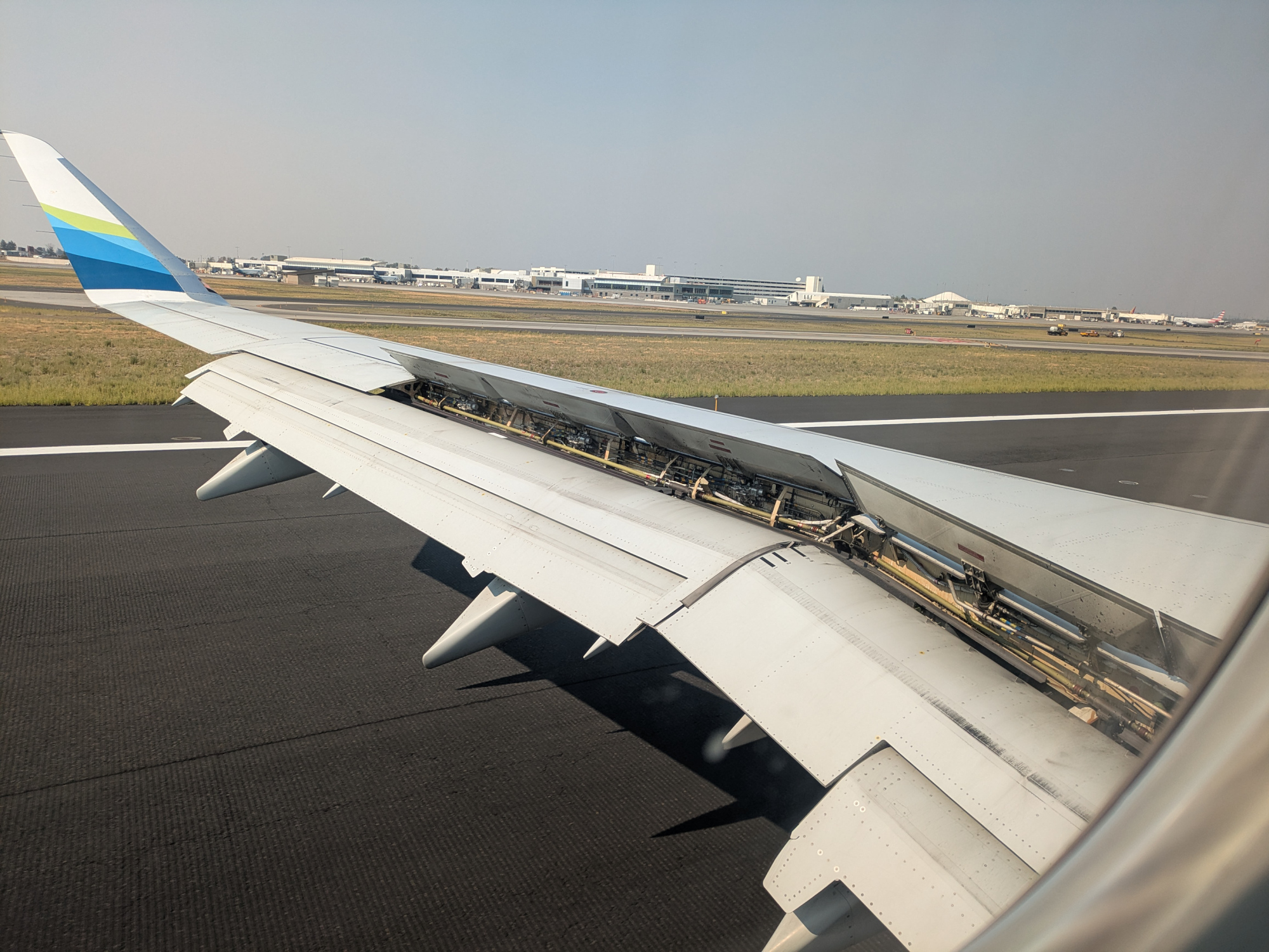
GEG - SEA
Taxi out from Spokane
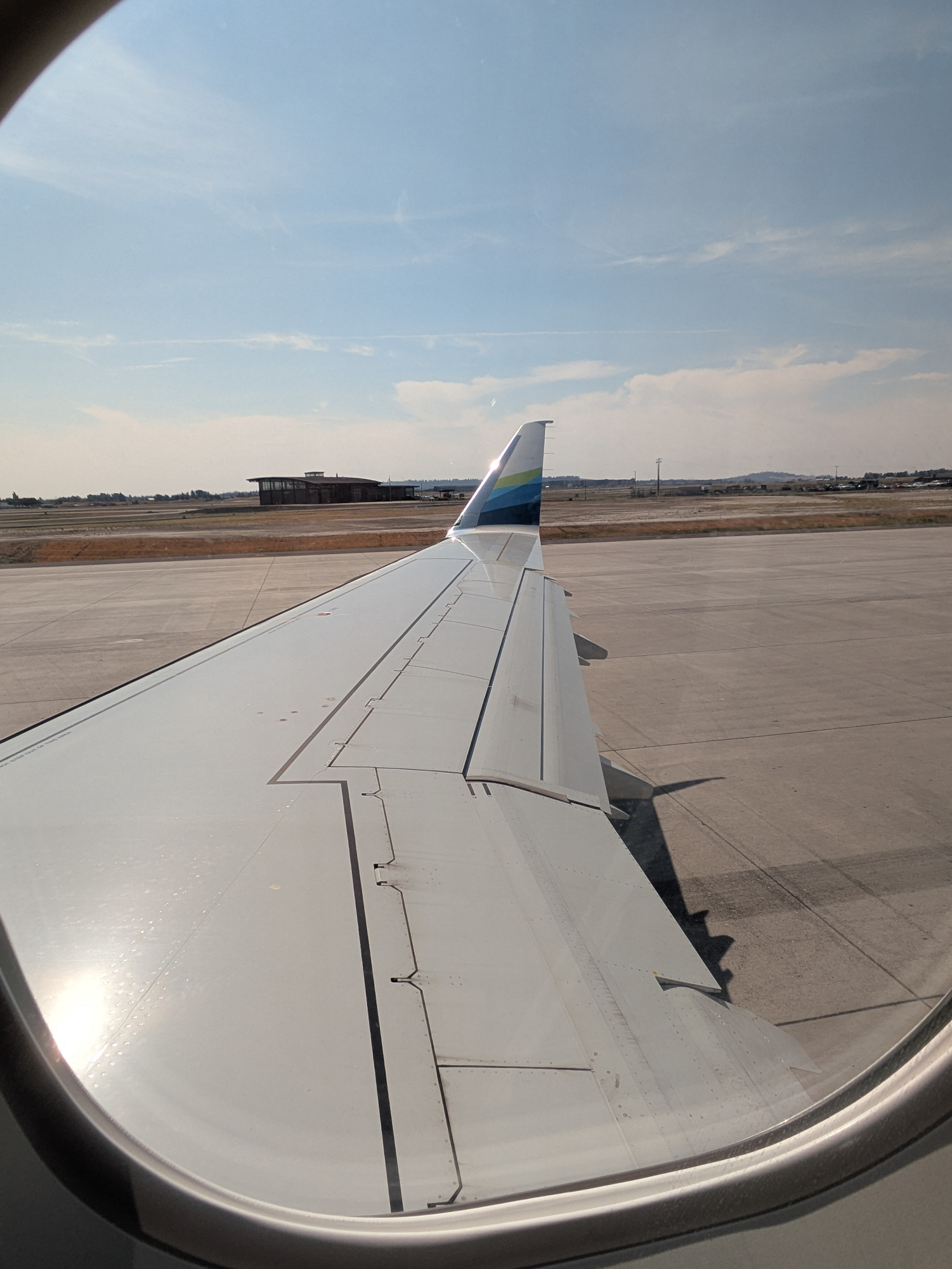
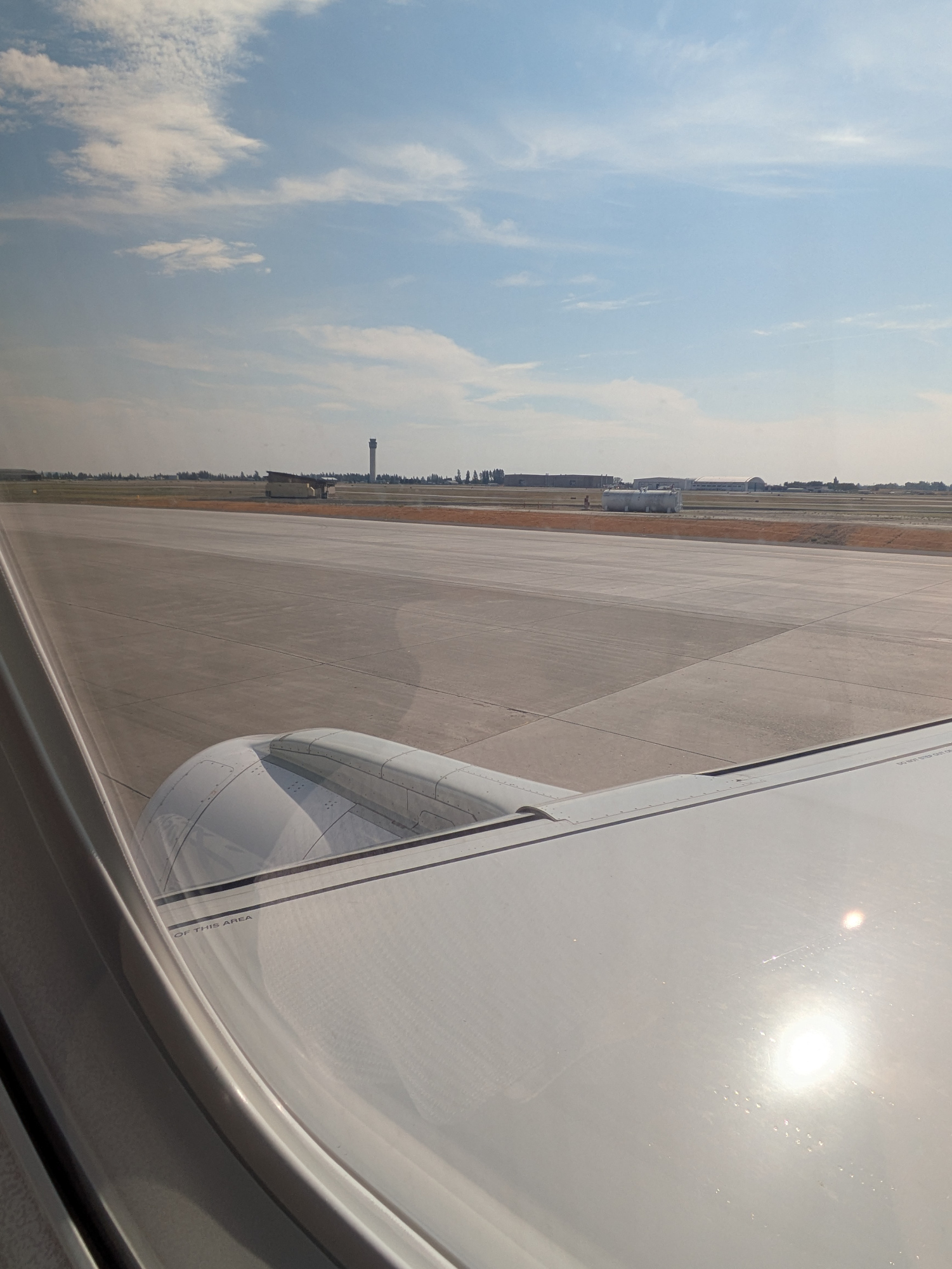
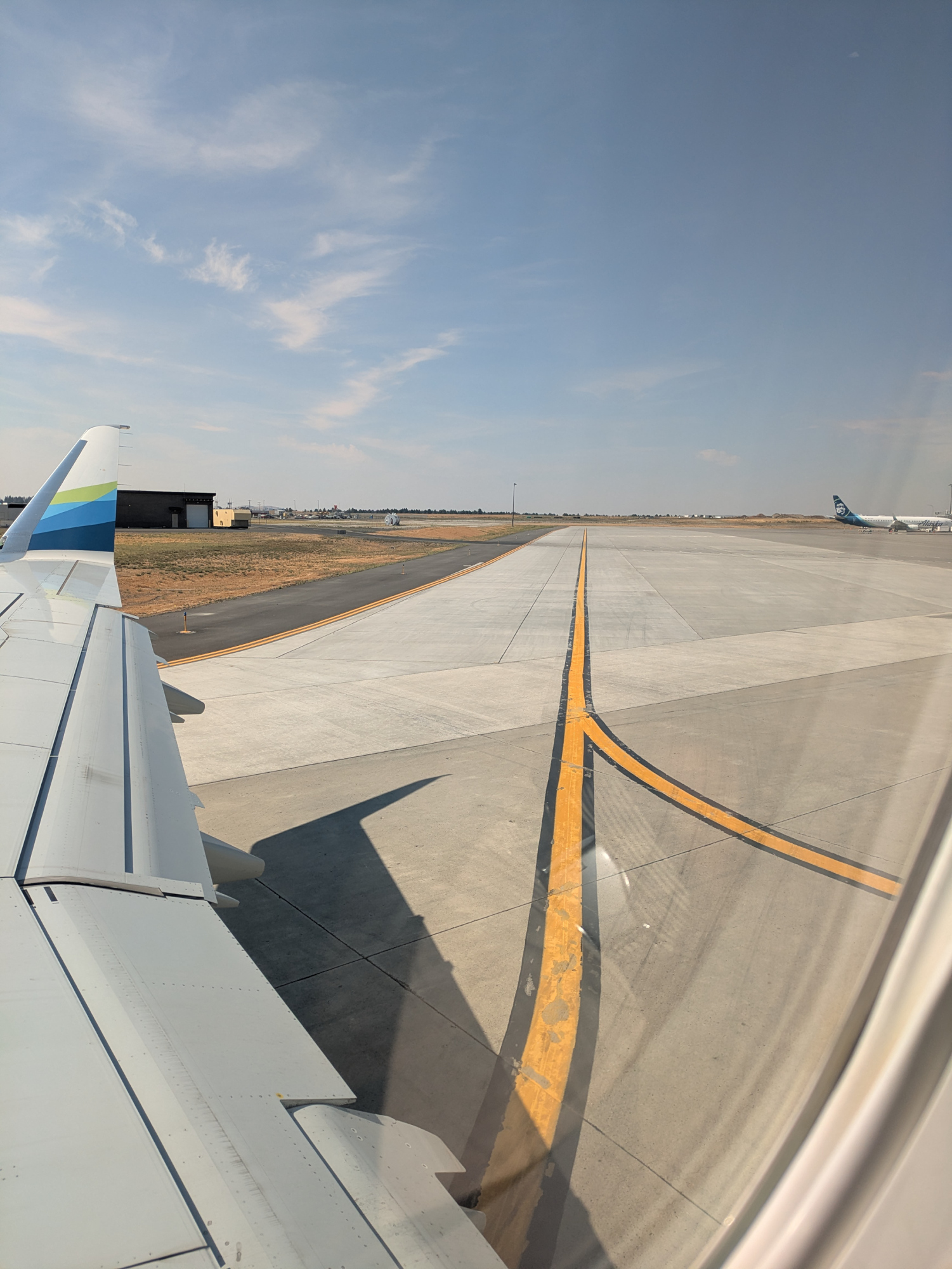
That view is half of Spokane Airport
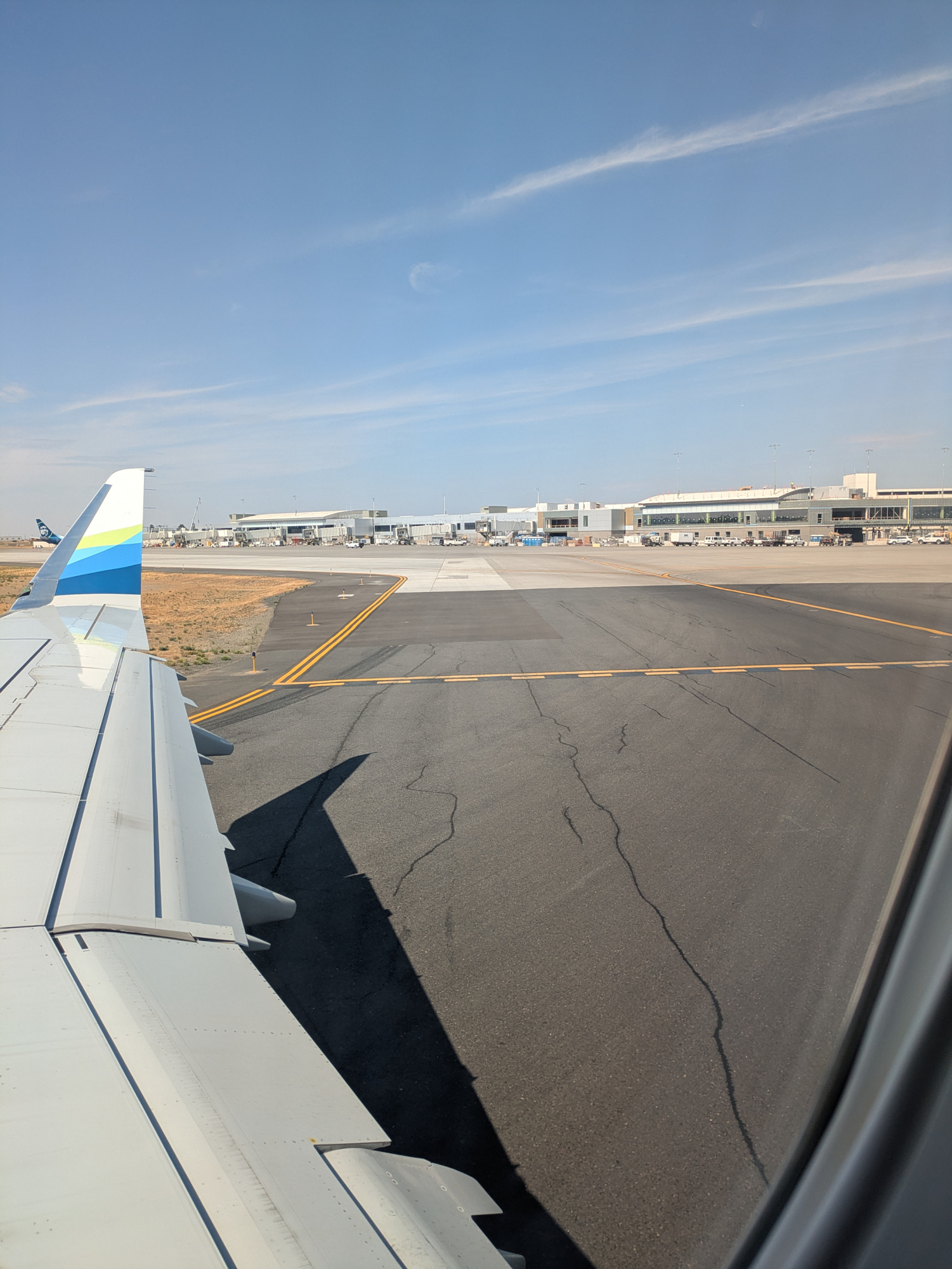
Spokane Taxi Out – In Motion
Takeoff
GEG National Forest (Unofficial)
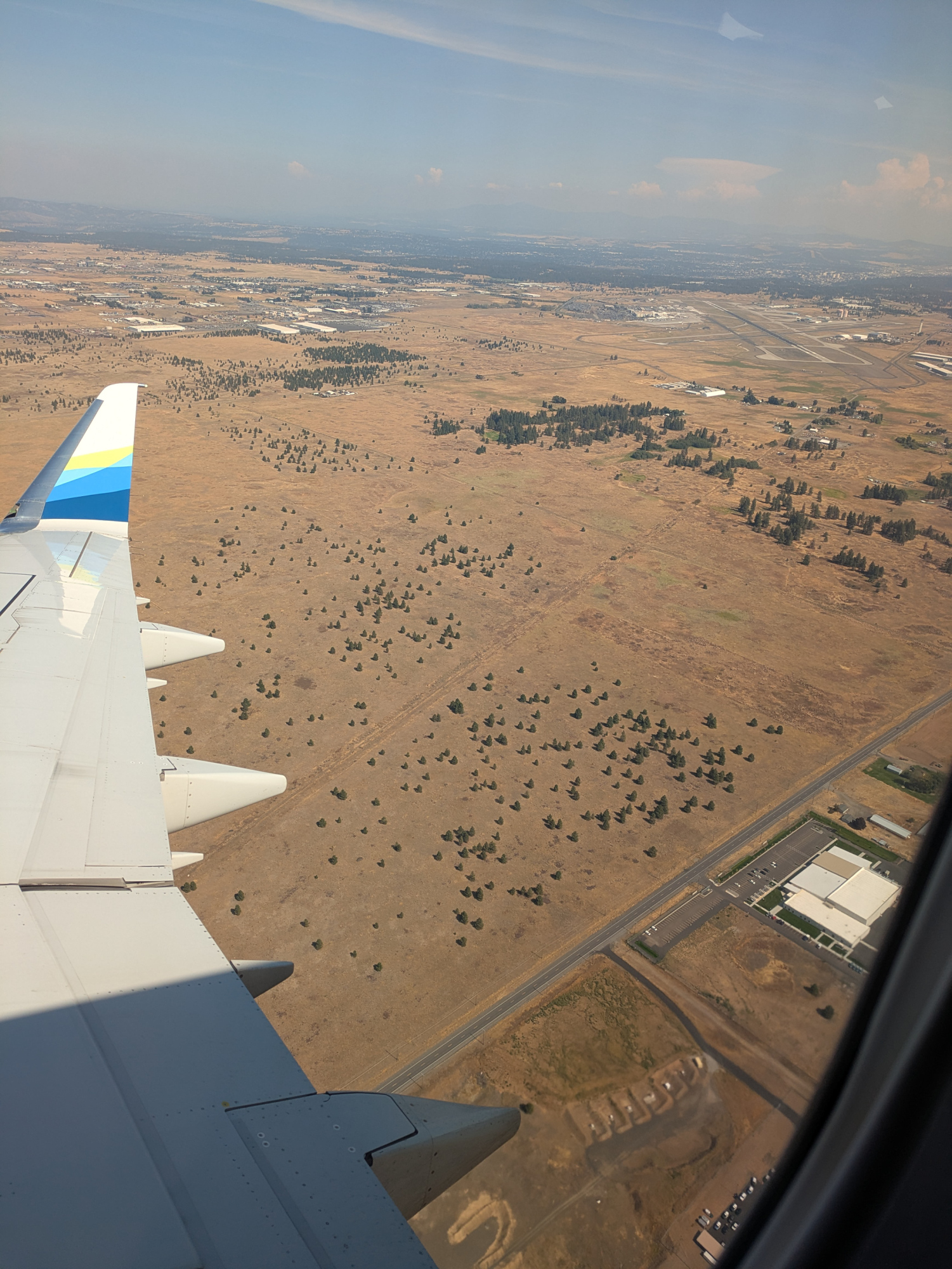
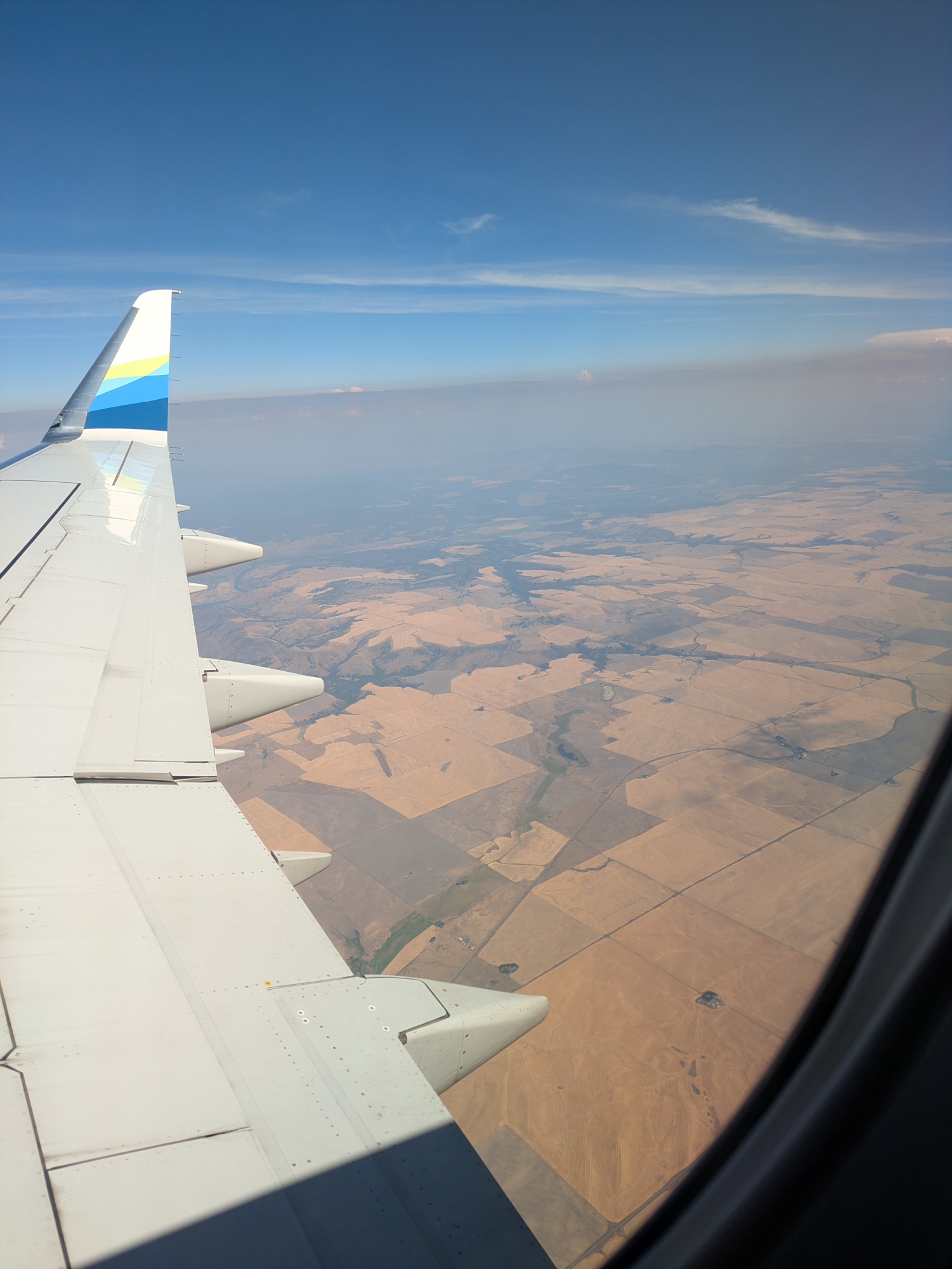

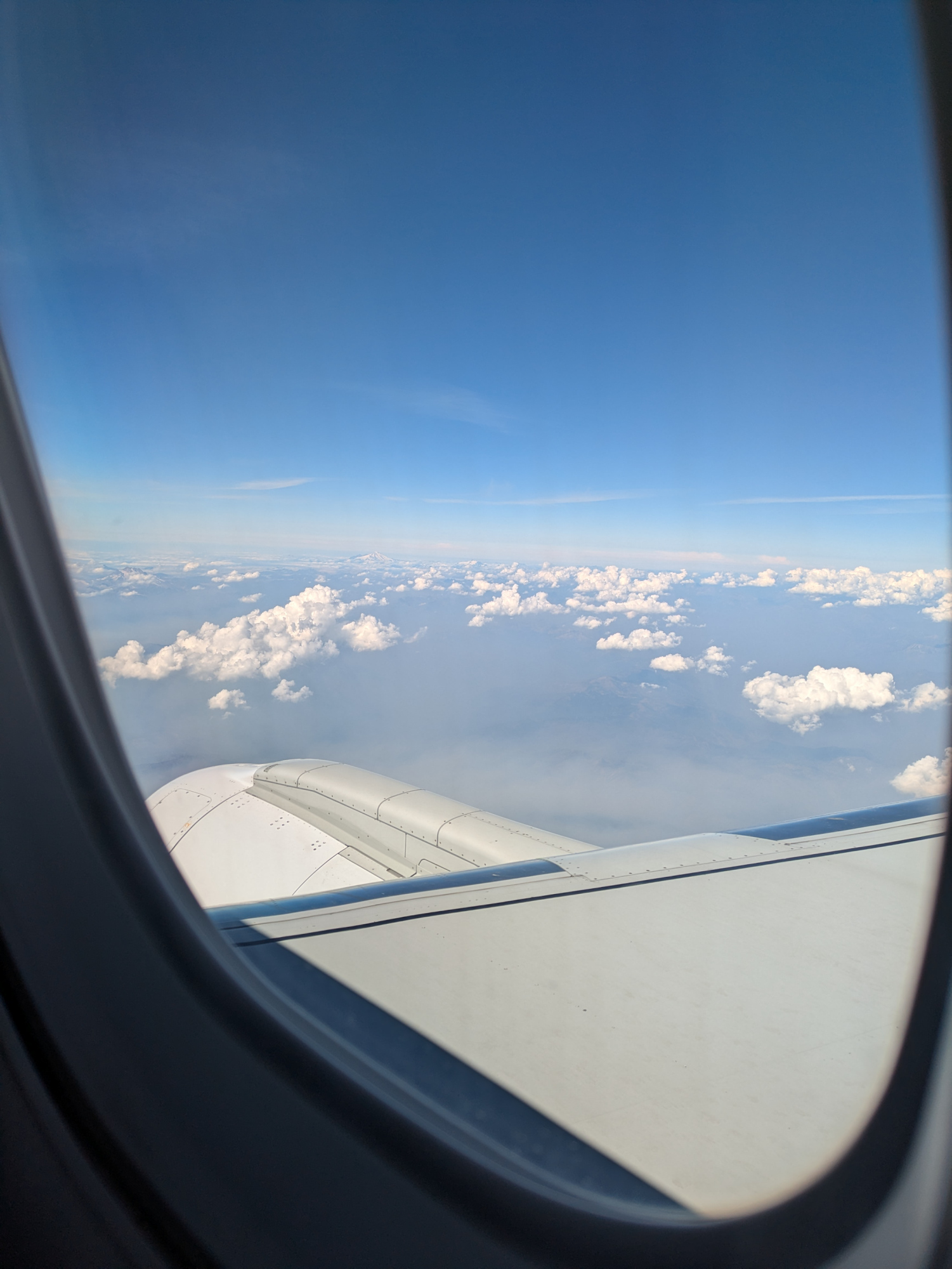
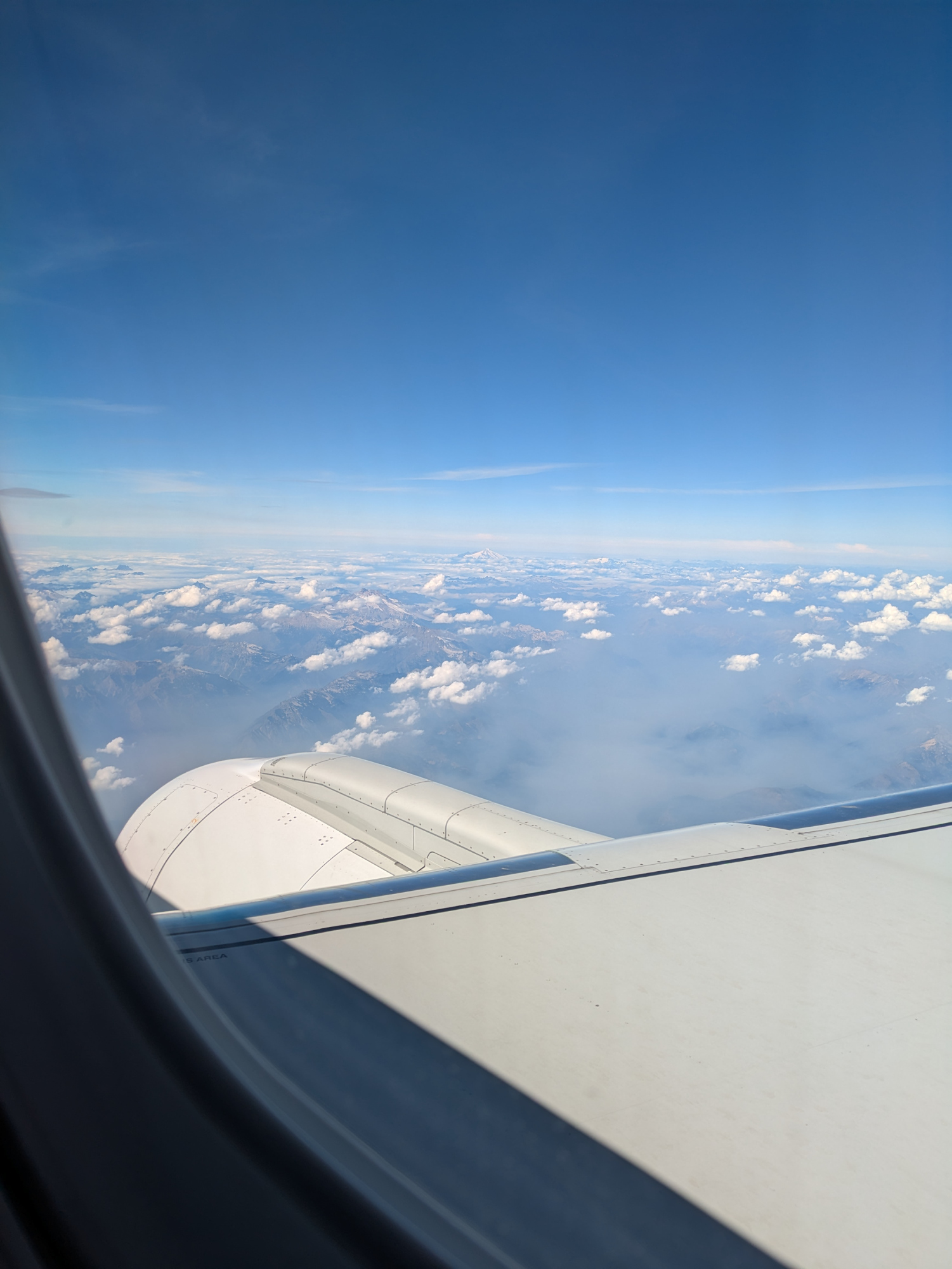
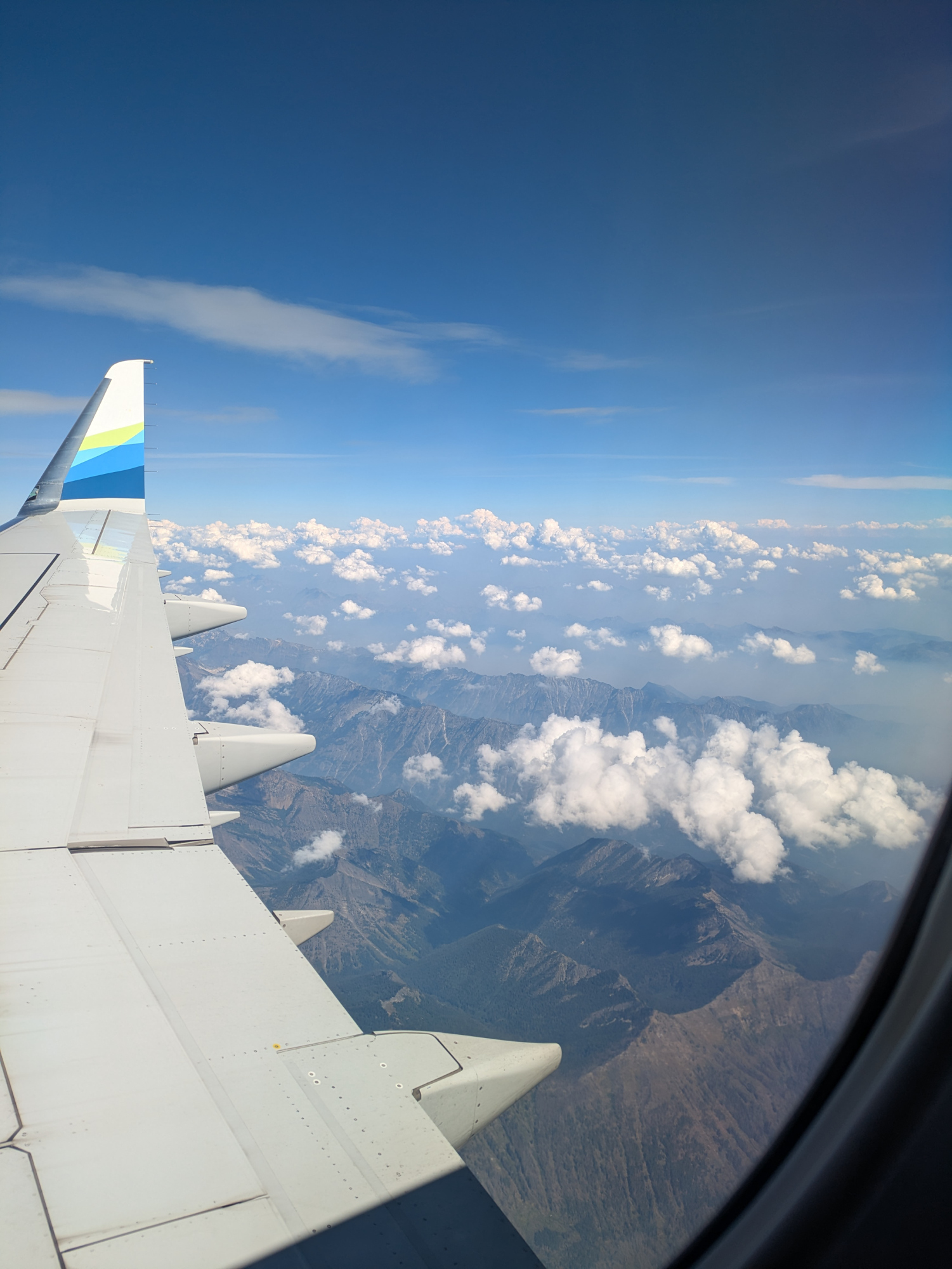
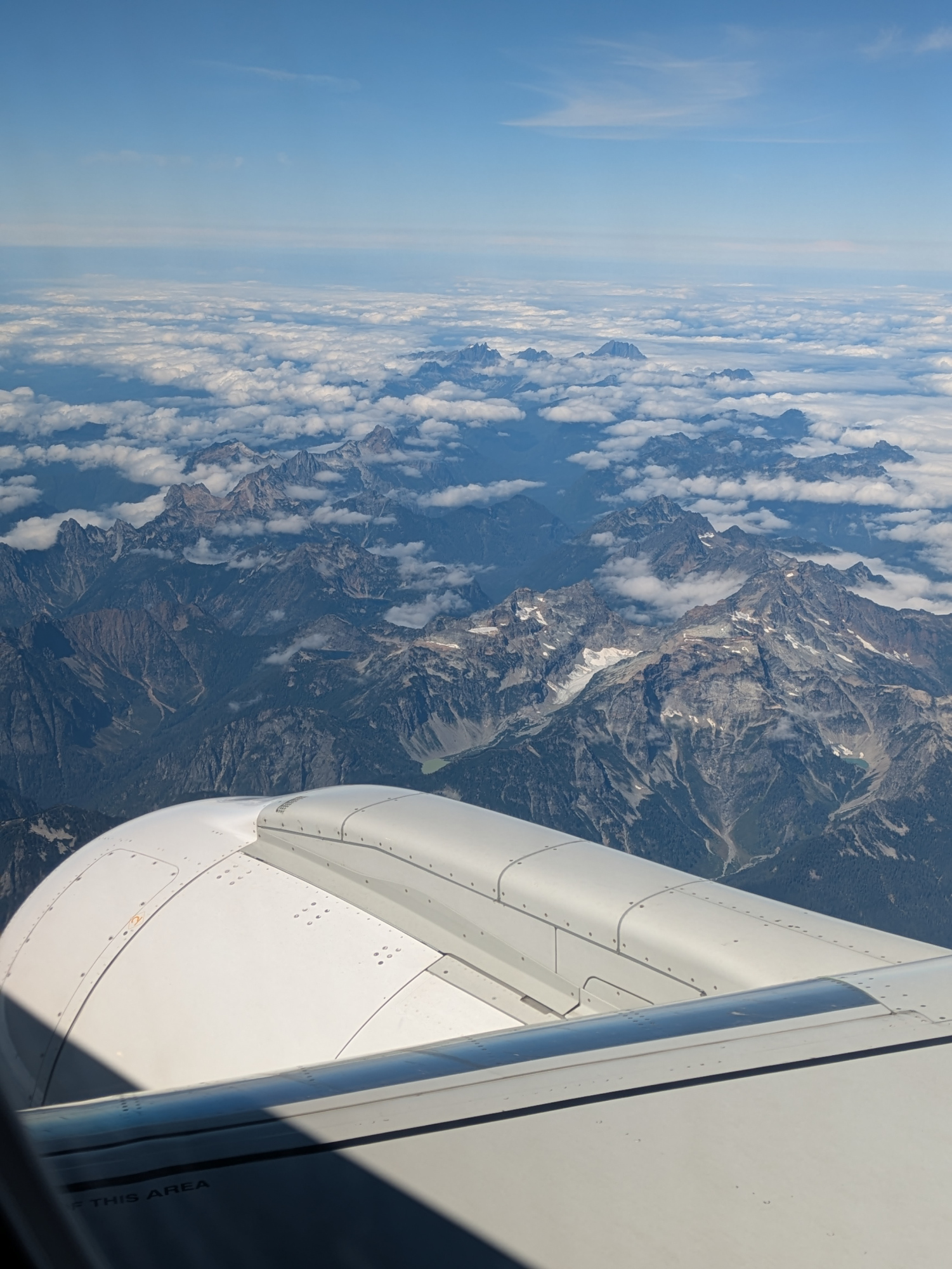
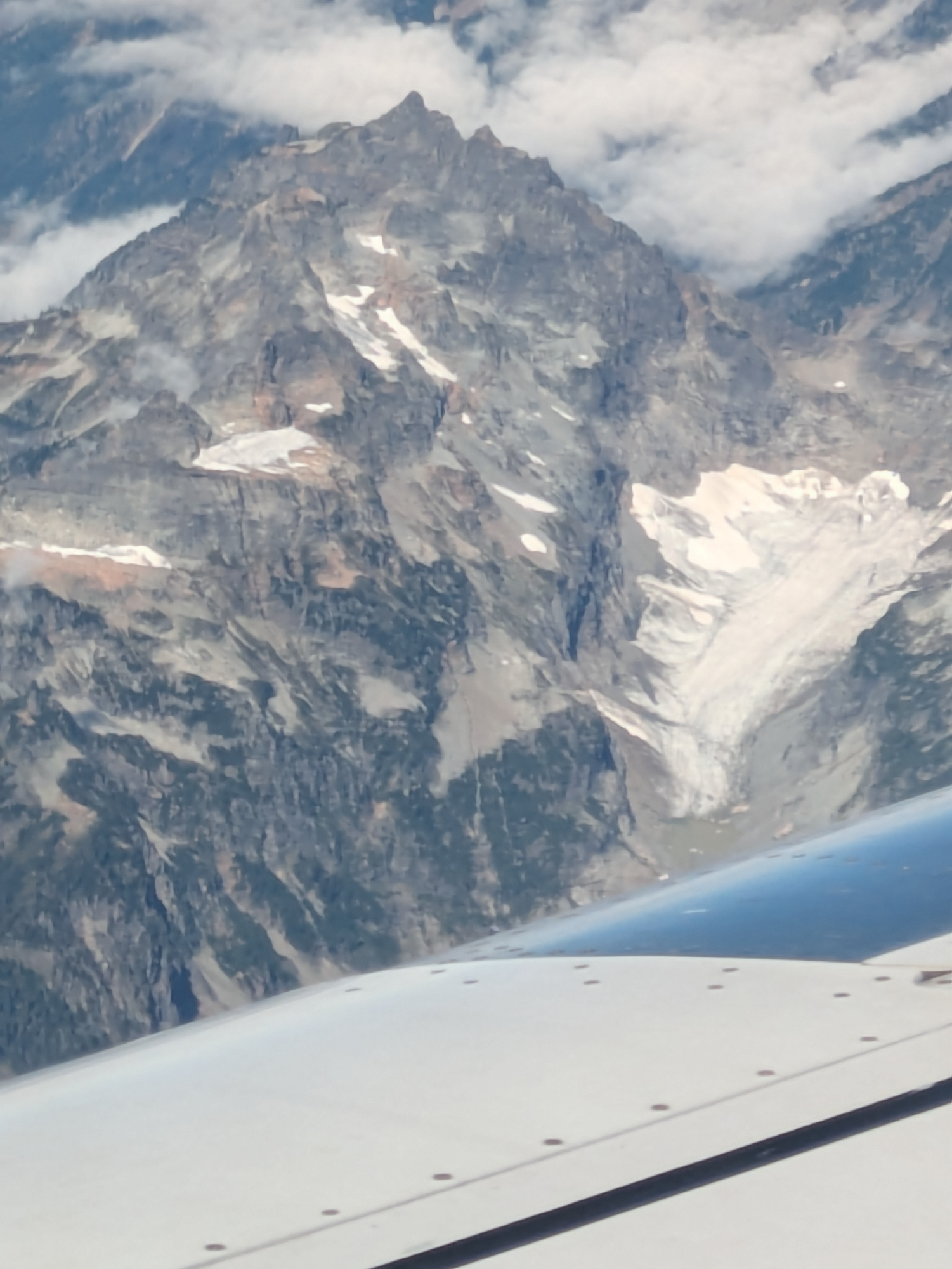
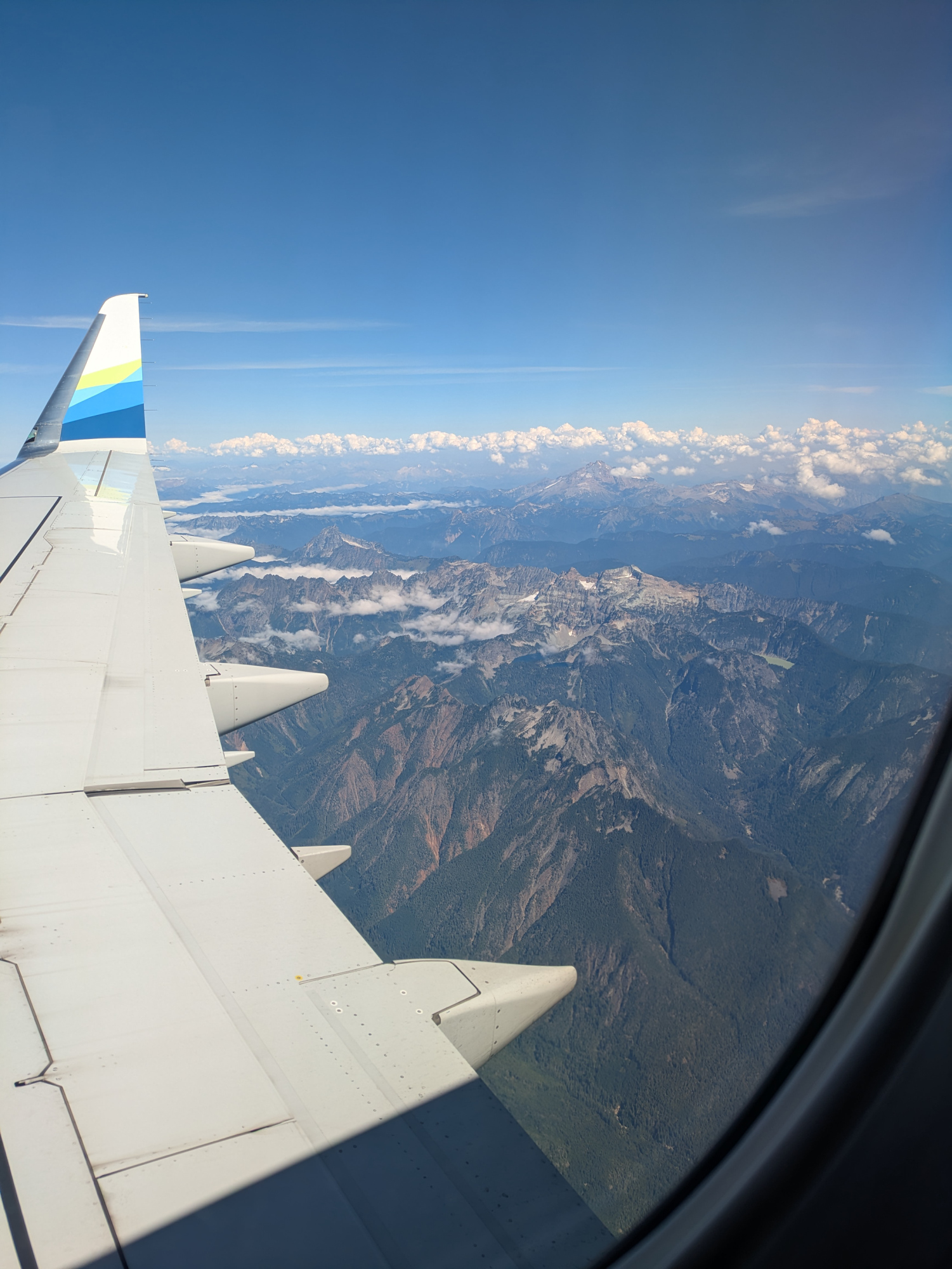
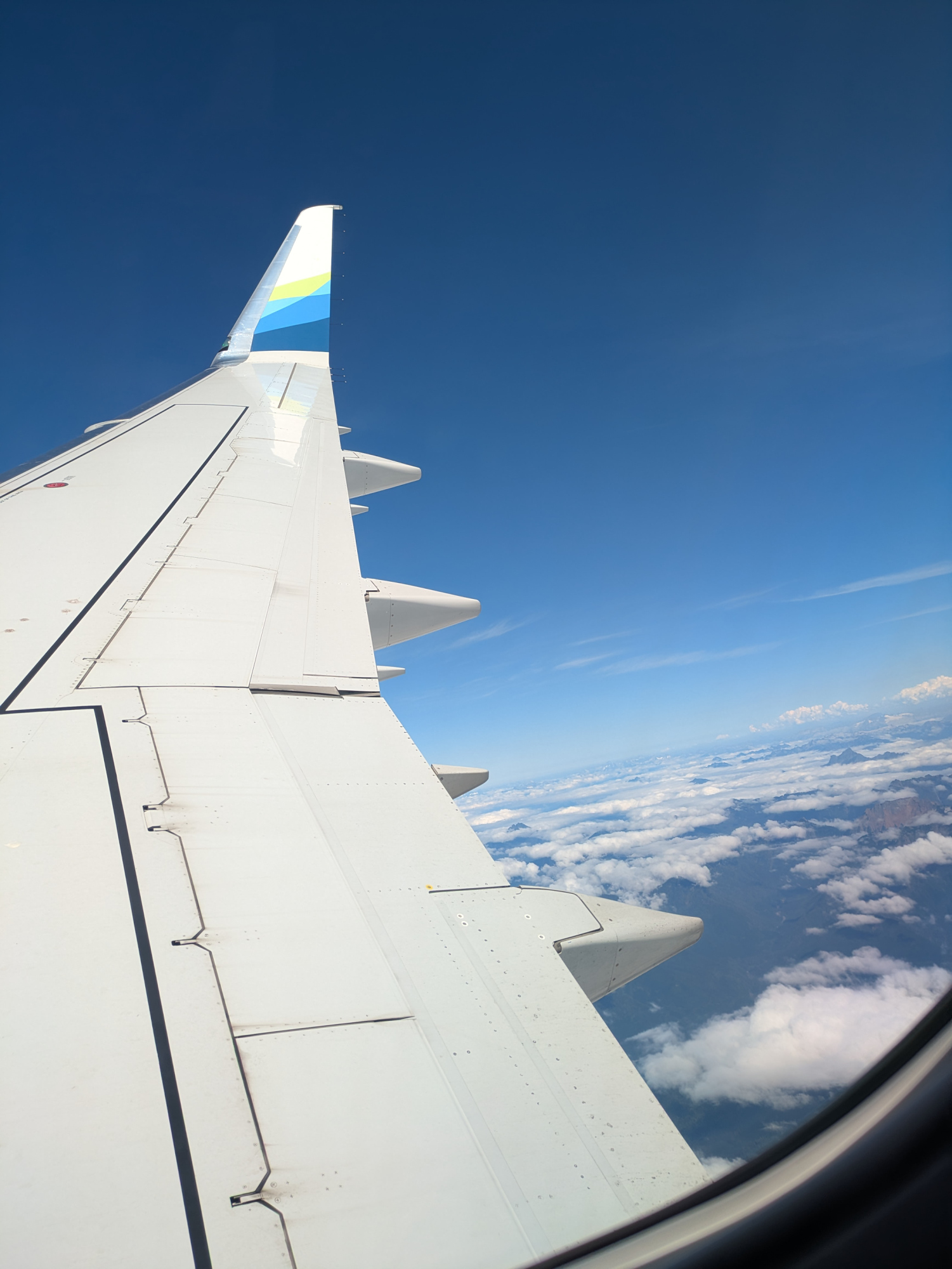
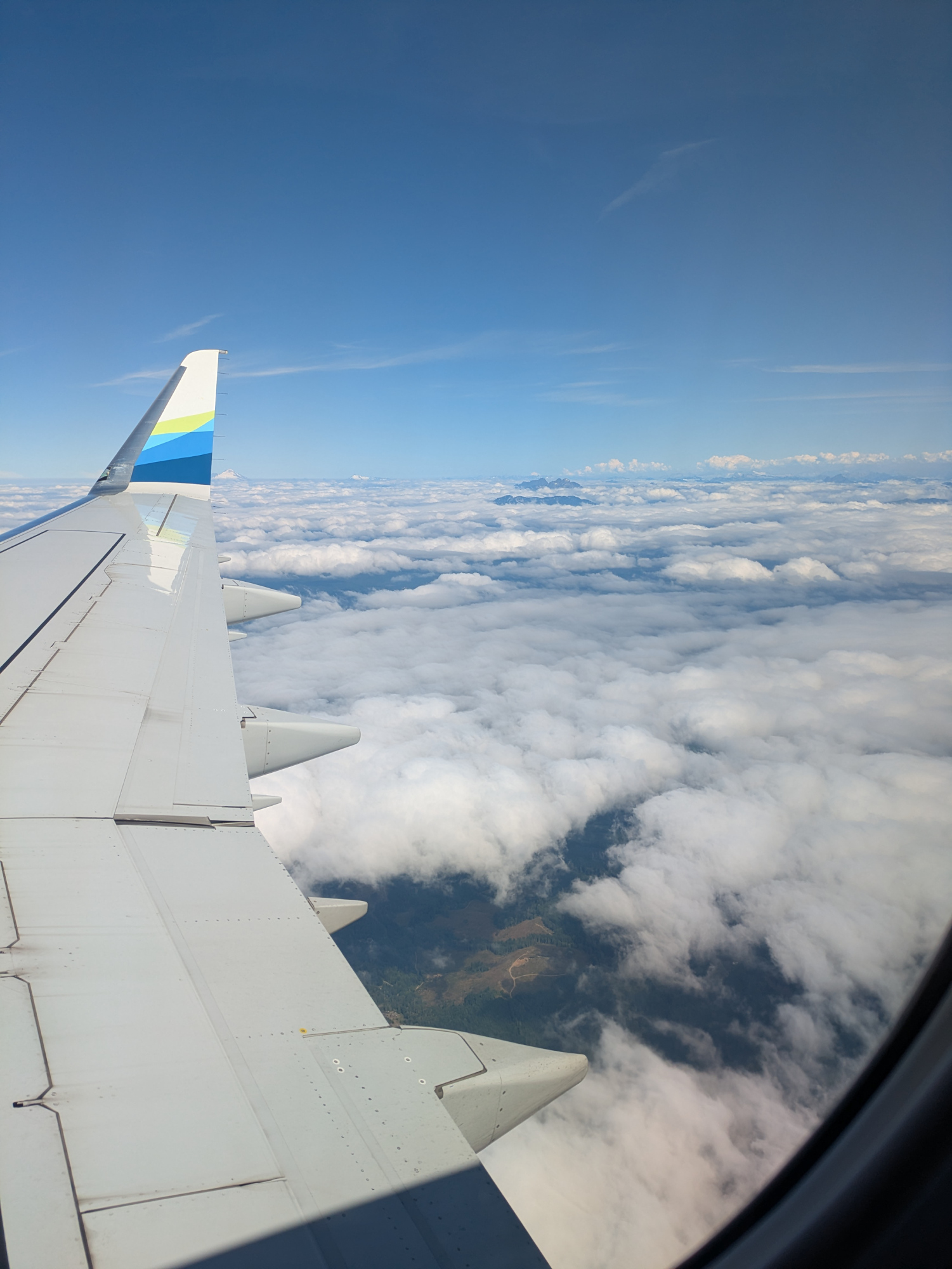
The Space Needle
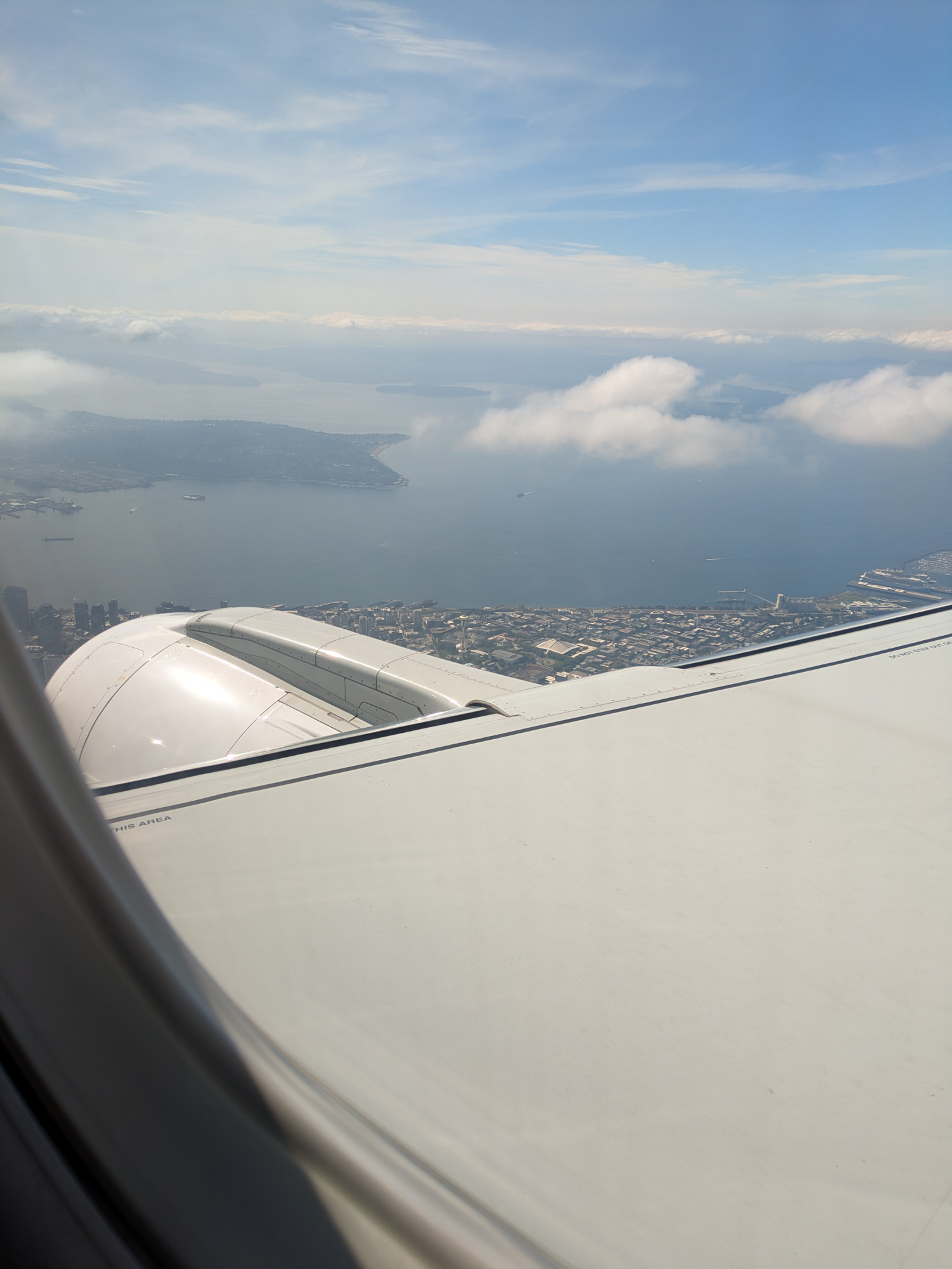
Landing in Seattle
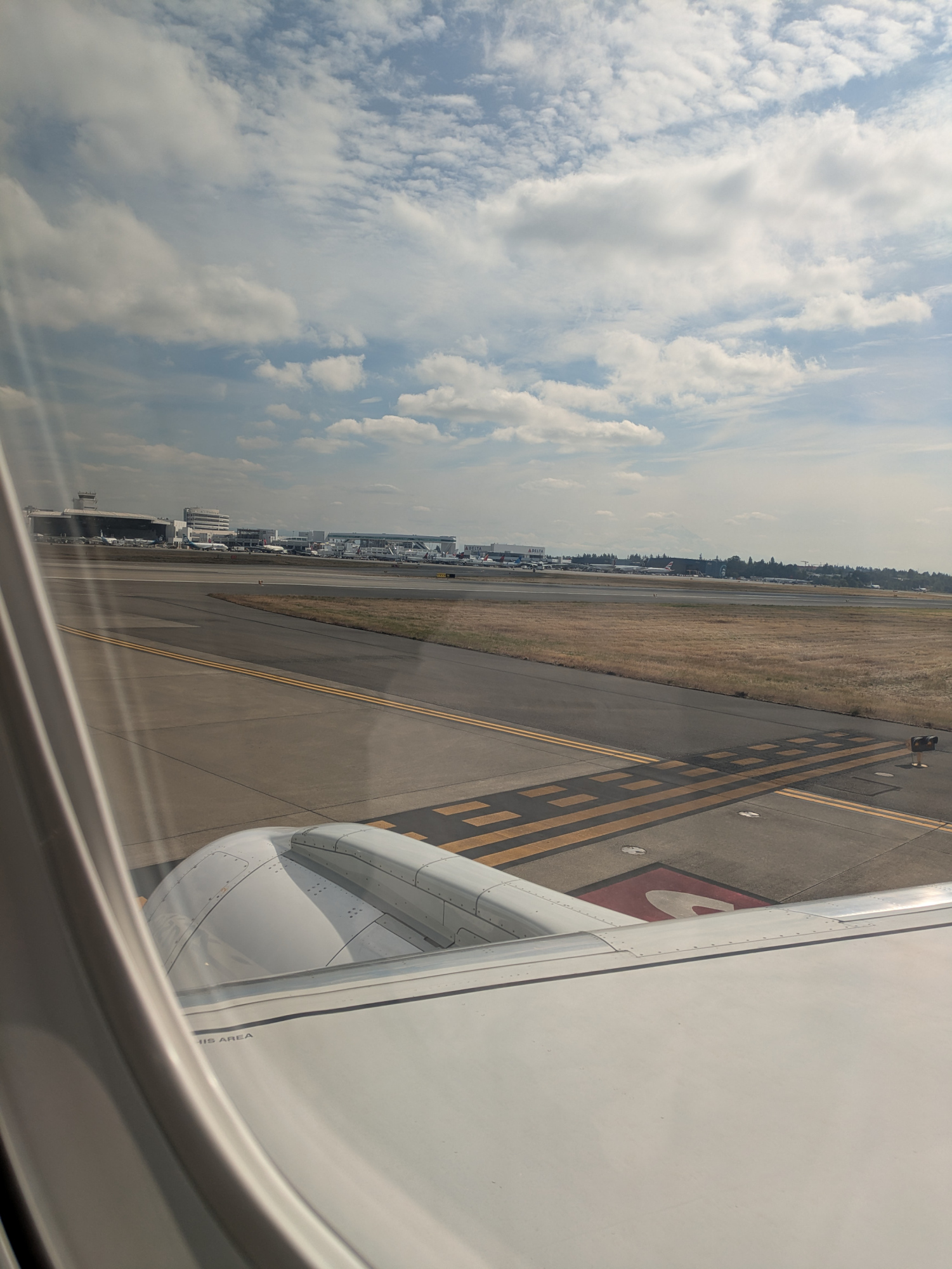
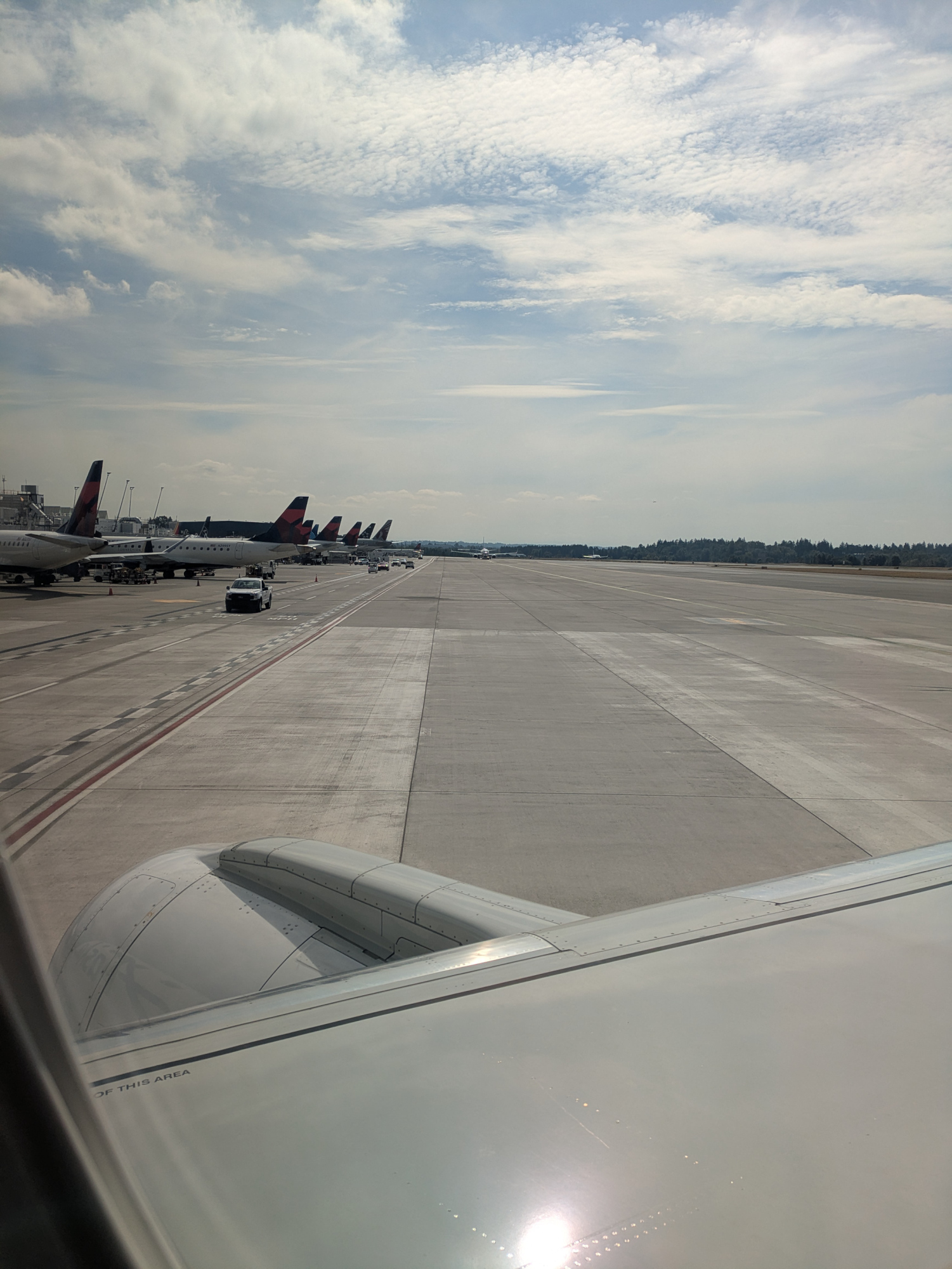
Arrived at Gate Q2
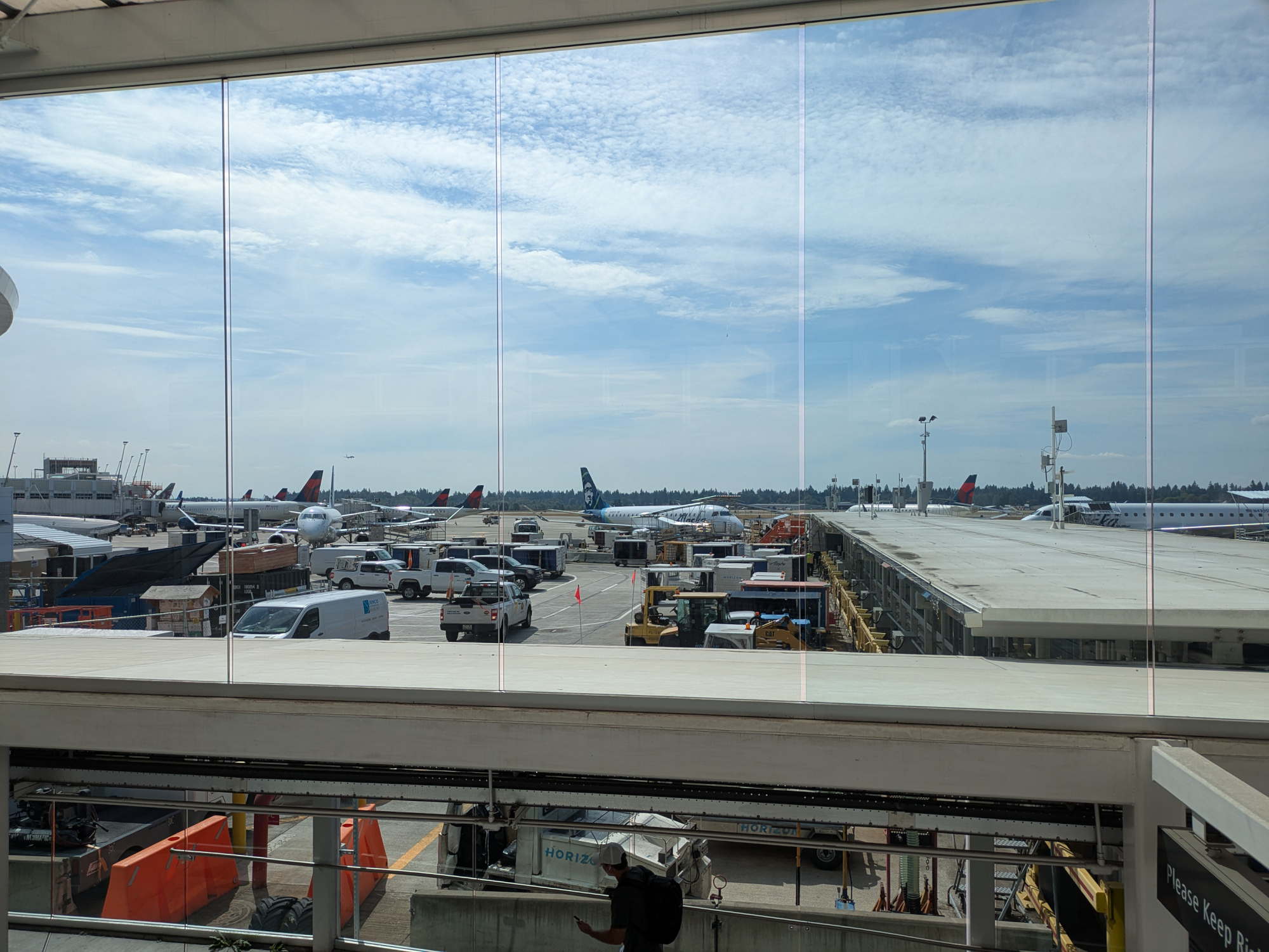
-
Spokane International Airport's code GEG comes from its former name, Geiger Field, named after Major Harold Geiger. The code was retained when the site transitioned from a WWII military base to a commercial airport.
Wikipedia – Spokane International Airport ↩
-
-
AstrHori 6.5mm f/2.0 Fisheye Lens
The AstrHori 6.5mm f/2 Fisheye Lens is a manual focus Circular Fisheye Lens for APS-C cameras with a 192° field of view.
Best general setting is at the 1m mark and f/5.6. This puts everything from near to infinity in focus.
The AstrHori 6.5mm Fisheye Lens fills the entire APS-C sensor with its 192° field of view, unlike the Laowa 4mm Circular Fisheye, which projects a 210° image circle that does not fully cover the frame.
AstrHori 6.5mm Laowa 4mm 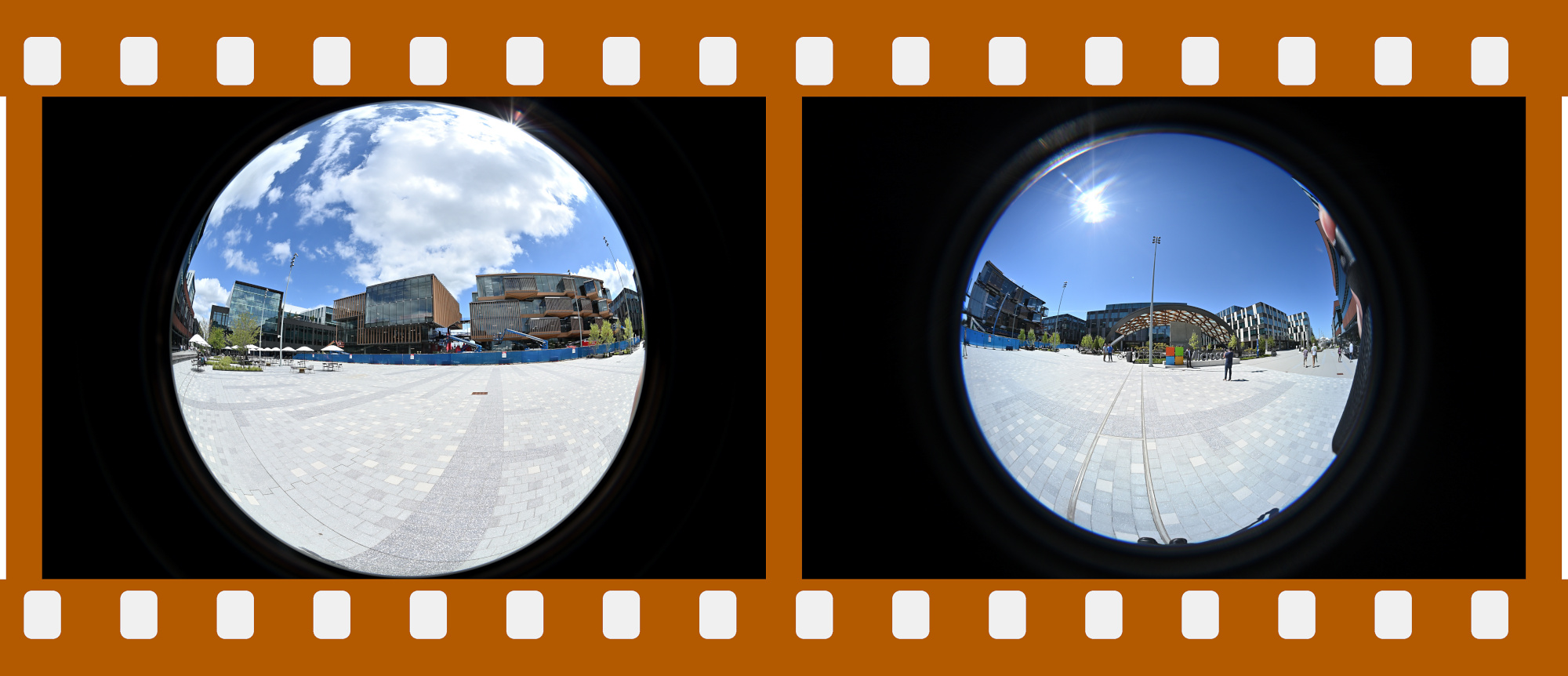
However, with only 192° of coverage, the AstrHori 6.5mm makes it difficult to capture a full 360°×180° panorama using just two images. In contrast, the Laowa 4mm performs much better in this regard thanks to its wider 210° field of view.
Example 360°×180° panorama with two pictures using the AstrHori 6.5mm Fisheye Lens:
1/800s f/5,6 ISO 100/21° f=6,5mm
Both images must be perfectly aligned using a nodal point adapter. If the camera is even slightly off-axis, parallax errors can occur, which may lead to visible stitching artifacts like this because of the missing overlap:

A 360°×180° panorama created from only two images relies solely on control points along the left and right edges. Unlike multi-image panoramas using 6+Z+N shots2, there is no flexibility for adjustment in other areas of the frame.
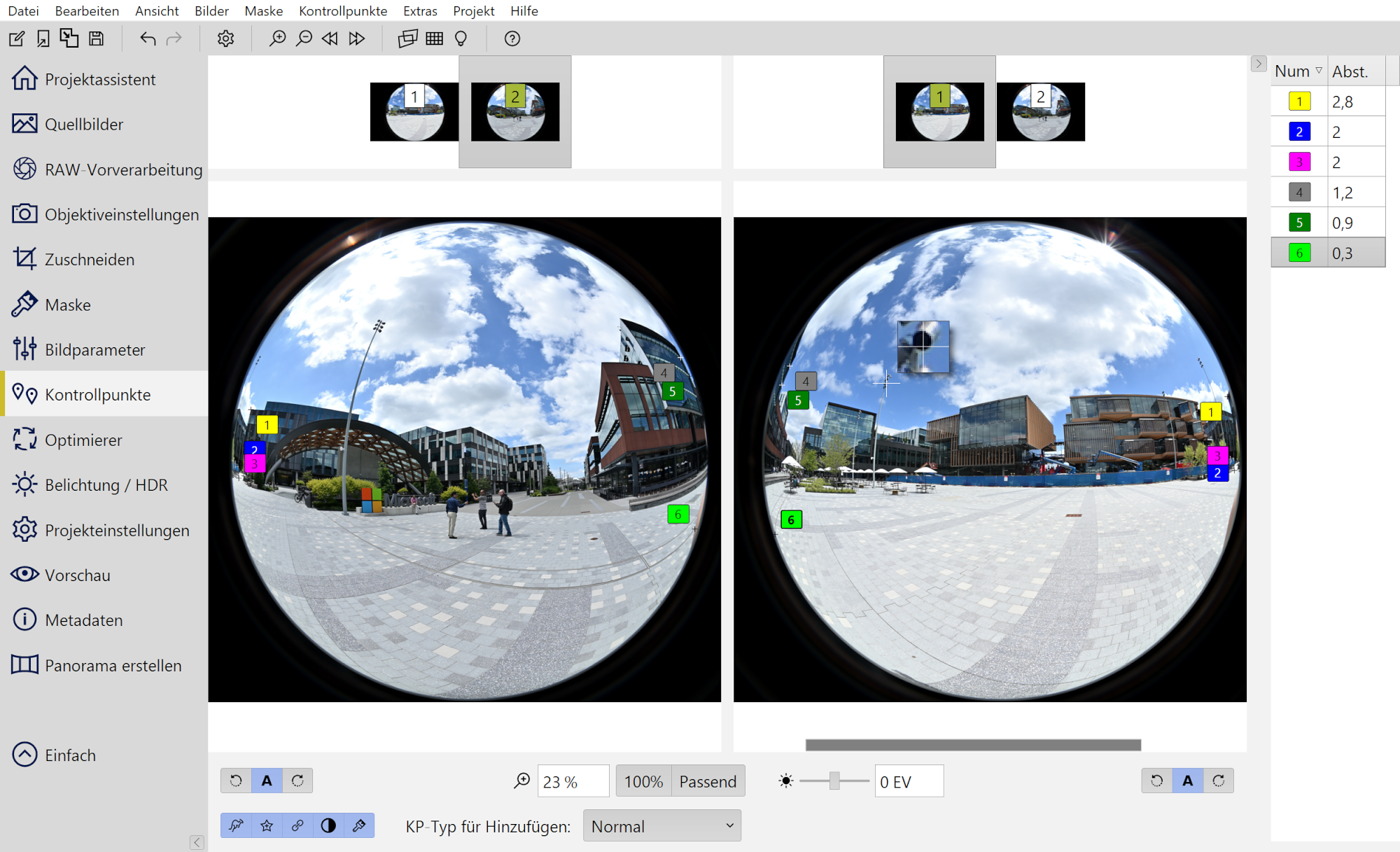
Interactive Panorama AstrHori 6.5mm Test 1

To improve the quality of a 360°×180° panorama, three images should be taken at 120° intervals with the camera slightly tilted upward, along with an additional Nadir (bottom) shot to cover the ground area and eliminate potential shadows.
1/1000s f/5,6 ISO 100/21° f=6,5mm
The three slightly upward-tilted shots capture the sky seamlessly, while the Nadir takes care of the floor details:
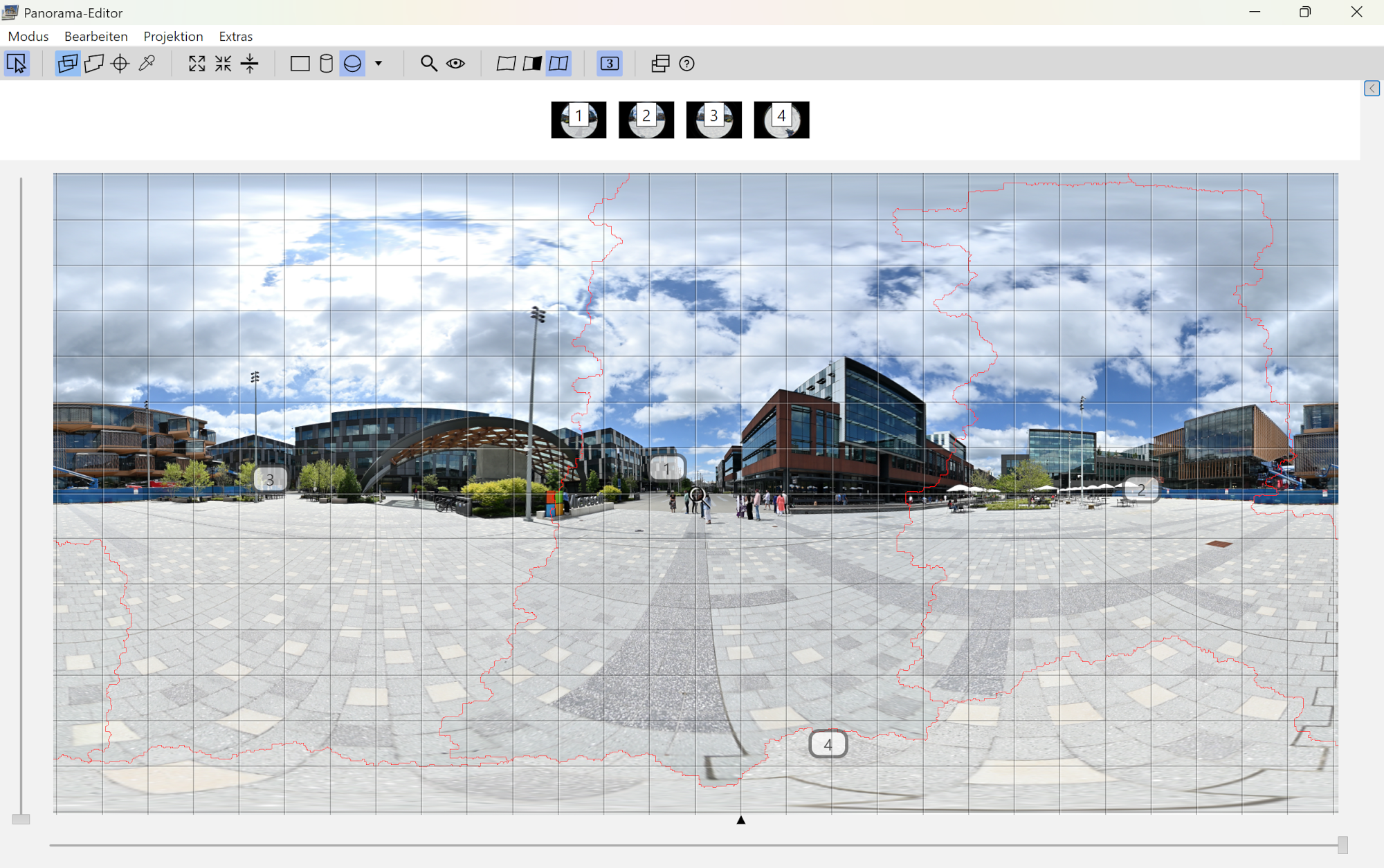
But this only yields a final resolution of 8k by 4k. A two-shot fisheye panorama using the 4mm lens is 7k by 3.5k, which is already quite limited. In contrast, a full-frame fisheye panorama captured using 6+Z+N gets 16k by 8k.
All resolutions are based on a 20MP camera.Interactive Panorama AstrHori 6.5mm Test 2

Surprisingly sharp in the corners for such an affordable lens. A clear improvement compared to the old Zenitar, which was my first fisheye lens and handled sharpness like it was optional and felt more like a Cold War relic than an optical instrument.
Not sure how the Peleng even compares, but for a circular fisheye on full-frame cameras at that time, it seems better suited for museum display than modern photography.1/800s f/5,6 ISO 100/21° f=6,5mm
And nice sunstars:
1/800s f/5,6 ISO 100/21° f=6,5mm
Only a Circular Fisheye can capture this:
1/400s f/5,6 ISO 100/21° f=6,5mm
With the focus set to its minimum distance, the leaf is actually touching the front element of the lens. This is one of the drawbacks of this lens: you cannot make those funny fisheye closeup shots. The Laowa 4mm is much better in this regard with its extreme close focus capability.
1/800s f/5,6 ISO 100/21° f=6,5mm
More examples shot with the AstrHori 6.5mm lens on a Nikon Z30:
1/800s f/5,6 ISO 100/21° f=6,5mm
1/640s f/5,6 ISO 100/21° f=6,5mm
1/640s f/5,6 ISO 100/21° f=6,5mm
1/800s f/5,6 ISO 100/21° f=6,5mm
1/800s f/5,6 ISO 100/21° f=6,5mm
1/800s f/5,6 ISO 100/21° f=6,5mm
1/1000s f/5,6 ISO 100/21° f=6,5mm
1/1000s f/5,6 ISO 100/21° f=6,5mm
1/1000s f/5,6 ISO 100/21° f=6,5mm
1/1000s f/5,6 ISO 100/21° f=6,5mm
Summary
✅ AstrHori 6.5mm: Best for general fisheye photography, great sharpness, sunstars, and APS-C coverage.
✅ Laowa 4mm: Best for minimal-shot 360°×180° panoramas and creative close-up fisheye fun.
✅ TTArtisan 7.5mm: Best for general 360°×180° panoramas.
❌ AstrHori 6.5mm: Not ideal for close-ups or minimal-shot panoramas.
❌ Laowa 4mm: Weaker in flare resistance.
❌ TTArtisan 7.5mm: Beware the lens cap: it has a mind of its own and occasionally makes a break for freedom. Even with a fix in place. A true escape artist.See also
TTArtisan 7.5mm f/2.0 Fisheye Lens
Laowa 4mm f/2.8 Fisheye Lens
-
6+Z+N refers to a common panoramic shooting technique used with full-frame fisheye lenses: six horizontal shots taken in portrait orientation around a central point, plus one shot each for the Zenit (top) and the Nadir (bottom) views. ↩
-
-
University of Washington
It is finals week for spring quarter at the University of Washington (UW), and graduation celebrations are just beginning. The weather is good, and with the UW campus full of open spaces and interesting buildings, it’s the right time for panoramas and for capturing every pixel from zenit to nadir.
Overview
Campus Landmarks
Academic Buildings
- Suzzallo Library
- School of Art and School of Music
- School of Art
- Denny Hall
- Smith Hall and Miller Hall
- Communications Building
Bridges & Pathways
Panoramas
All panoramas photographed that day were taken without a tripod using a Nikon Z30 with a 7.5mm Fisheye Lens. In the library, this was necessary anyway, since photography is allowed but tripods are not permitted in the UW Libraries.
Red Square
This panorama captures Red Square, a central open space on the University of Washington campus known for its iconic views and architectural surroundings.
Interactive Panorama Red Square
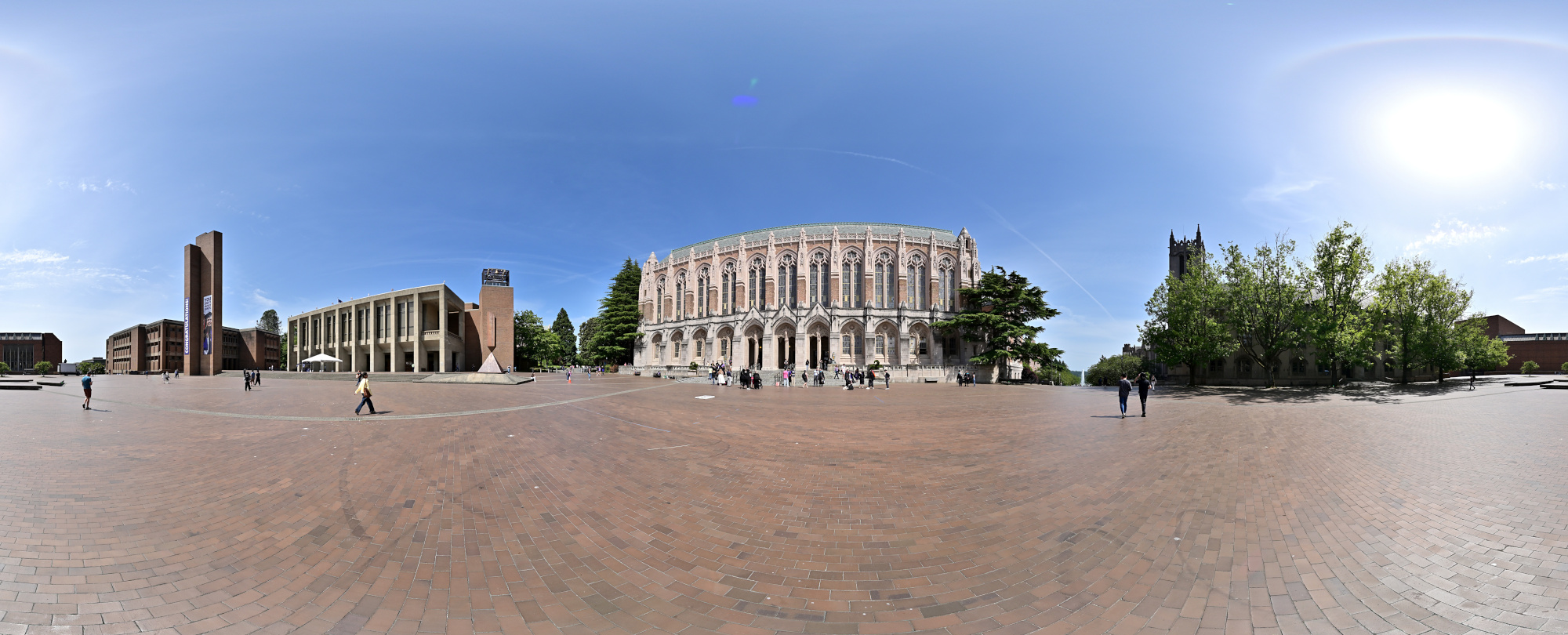
1/1000s f/5,6 ISO 100/21° f=7,5mm

Suzzallo Library
Suzzallo Library stands as one of the University of Washington’s most iconic buildings, with its grand Gothic architecture lending a timeless presence to the campus landscape.
Suzzallo Library Reading Room
Interactive Panorama Suzzallo Library 1

1/125 f/5,6 ISO 320/26° f=7,5mm

Interactive Panorama Suzzallo Library 2

1/125 f/5,6 ISO 320/26° f=7,5mm

Interactive Panorama Suzzallo Library 3

1/125 f/5,6 ISO 320/26° f=7,5mm

Suzzallo Library Treppenaufgang 1x3
1/125s f/5,6 ISO 1320/26° f=7,5mm
Circular Fisheye projection

Equirectangular projection
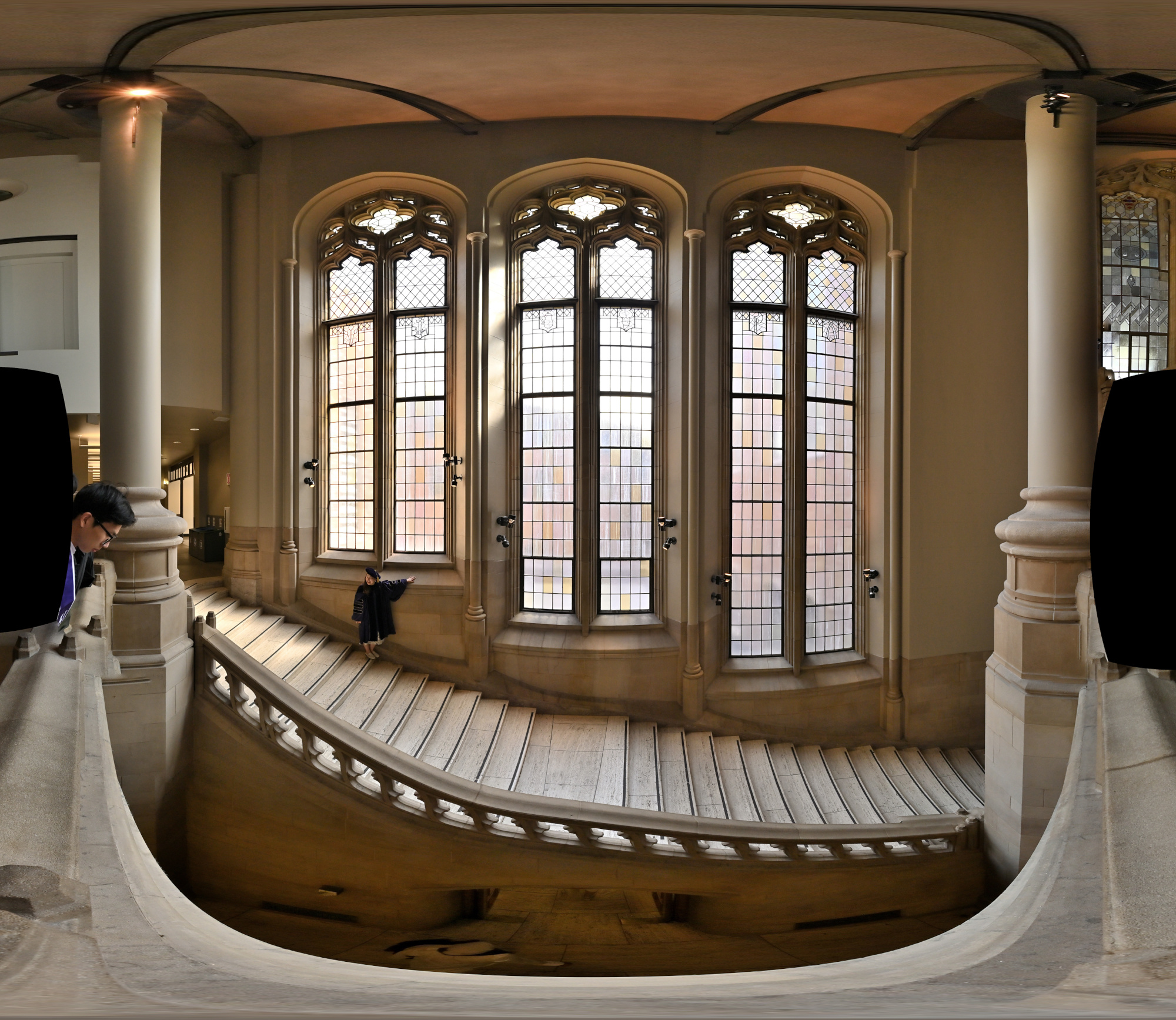
3 + up + down
View from Red Square
1/1000s f/5,6 ISO 100/21° f=7,5mm
Equirectangular projection

Rectilinear projection
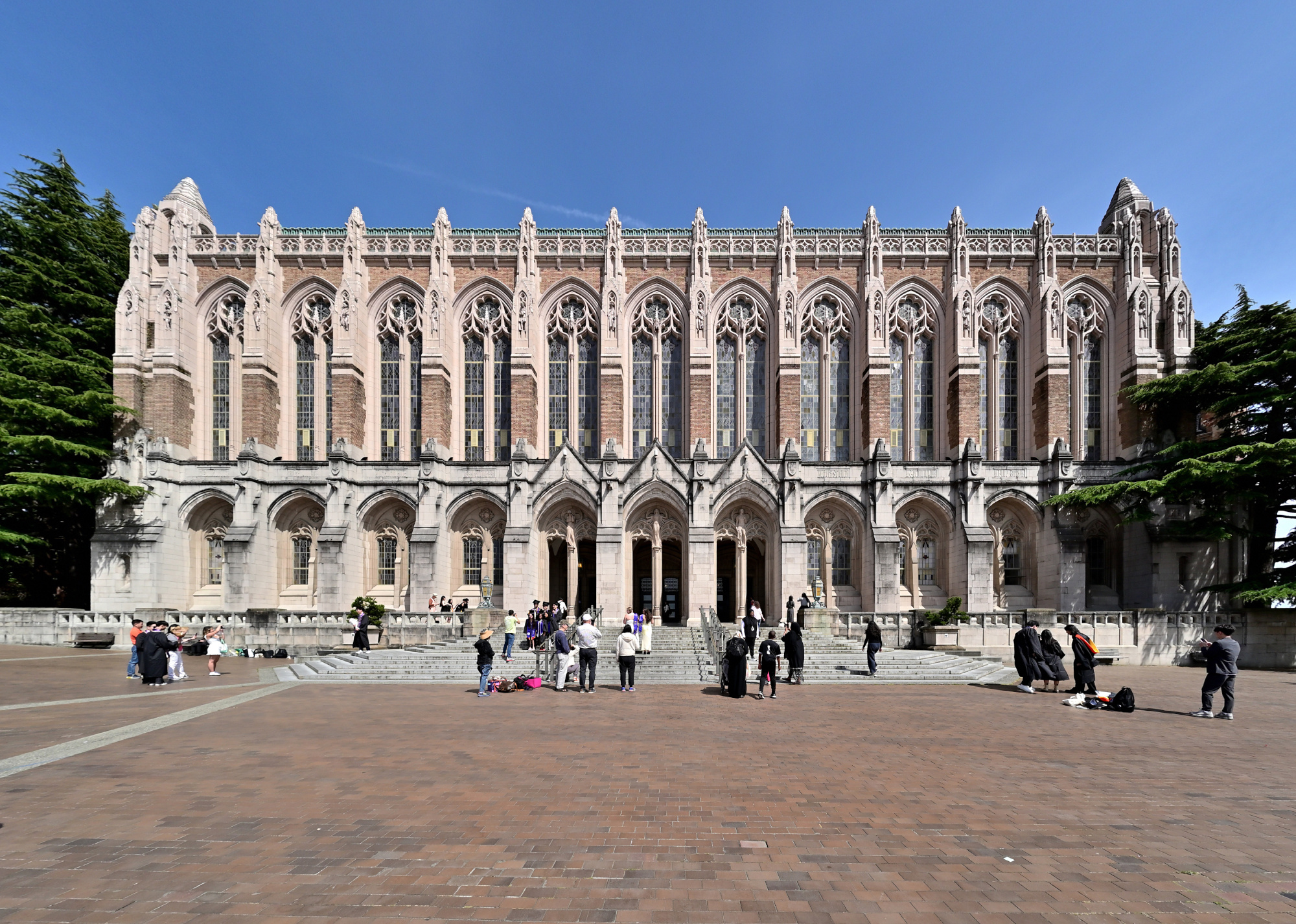
Statue of George Washington
The Statue of George Washington stands at the west end of Red Square, a longstanding symbol of the university’s heritage and a familiar landmark for students and visitors alike.
Interactive Panorama Statue of George Washington
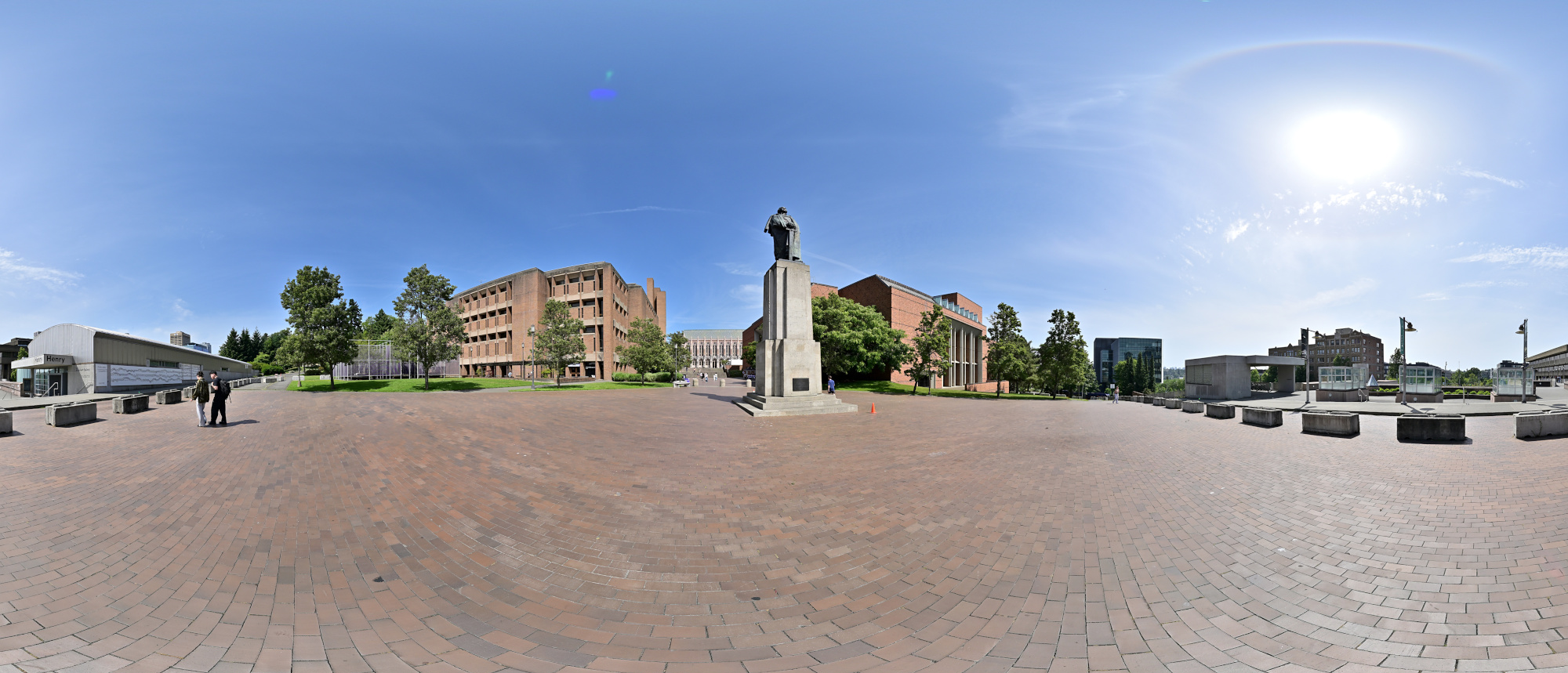
1/1000s f/5,6 ISO 100/21° f=7,5mm
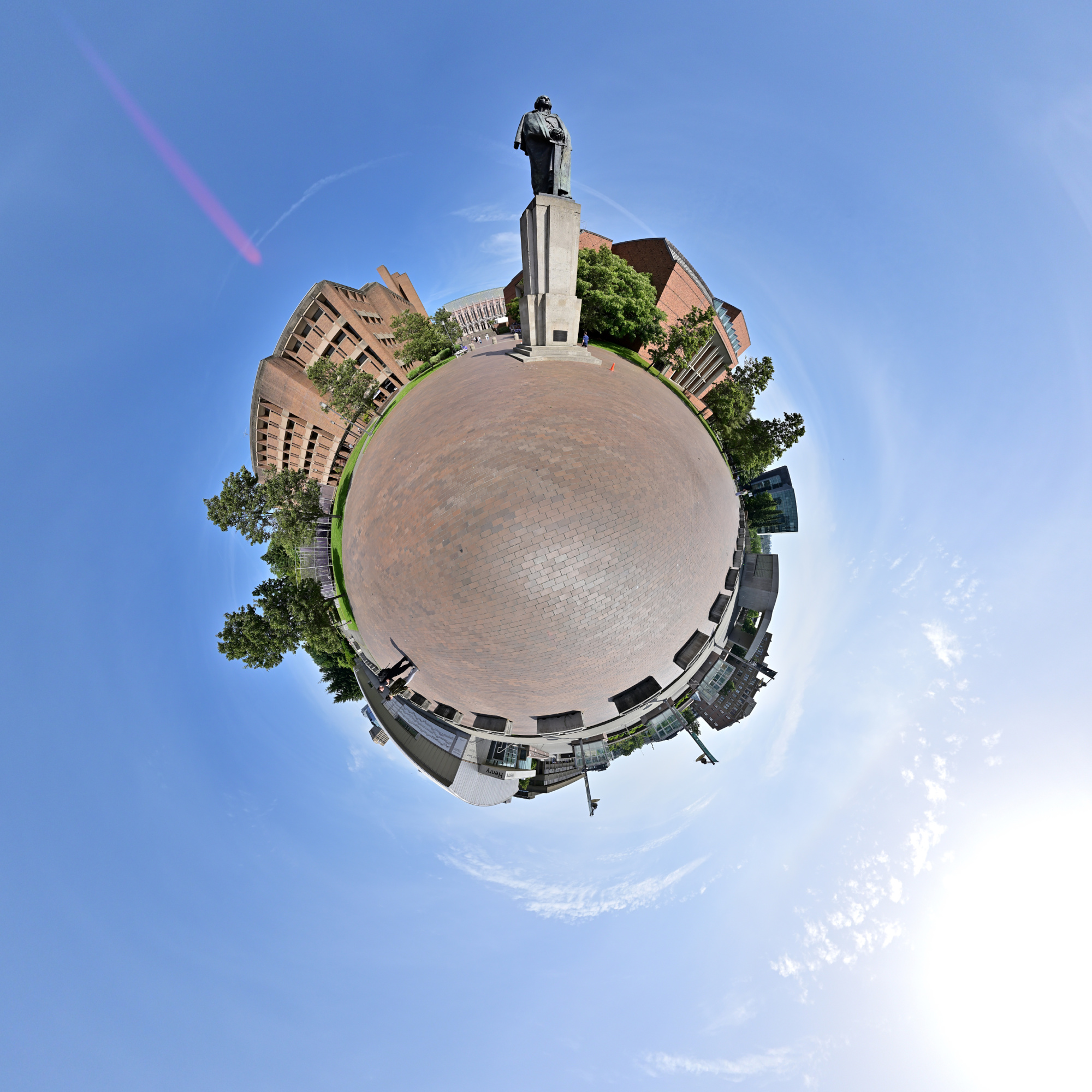
Bridge to Henry Art Gallery
The Suzzallo Library and the Statue of George Washington are partially visible in the background, adding a subtle sense of place and history to the scene.
Interactive Panorama Bridge to Henry Art Gallery

1/1000s f/5,6 ISO 100/21° f=7,5mm

The Quad
The Quad is a beloved green space on campus, especially known for its breathtaking cherry blossoms each spring and its peaceful, tree-lined walkways year-round.
Interactive Panorama The Quad 1
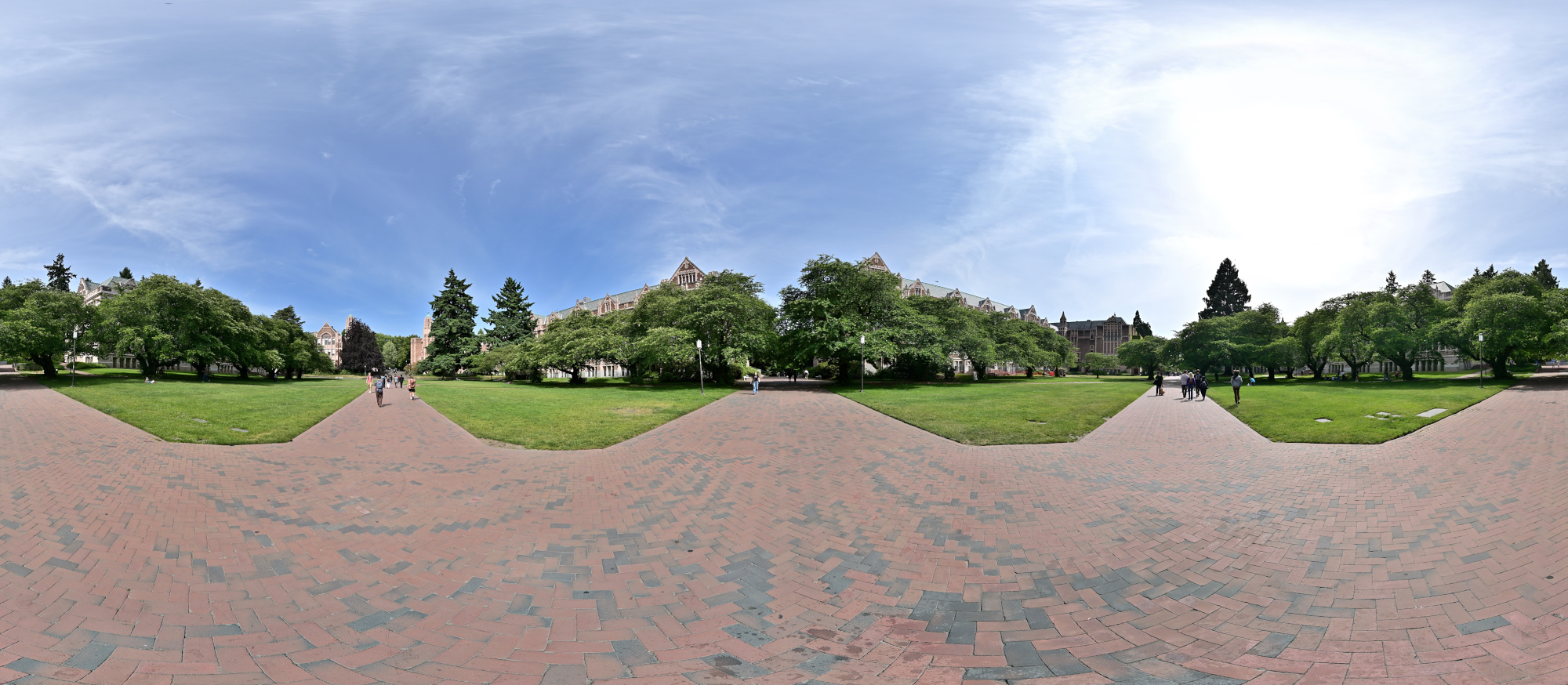
1/1000s f/5,6 ISO 100/21° f=7,5mm
It’s probably called The Quad because it was easier than explaining That Big Square Where Everyone Takes Cherry Blossom Pics. Besides, calling it The Quadrangle sounds like a spell Hermione would cast right before finals.
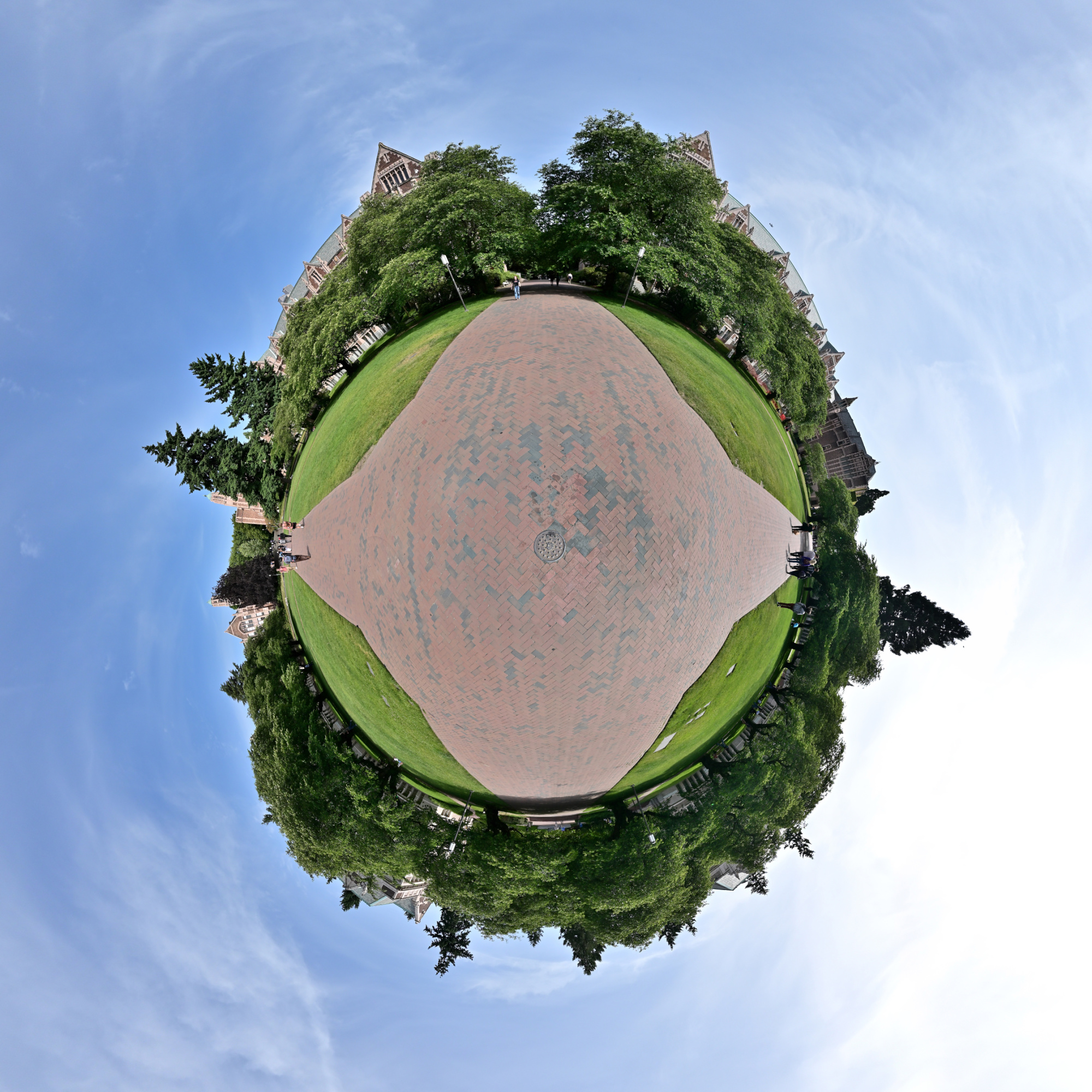
Interactive Panorama The Quad 2
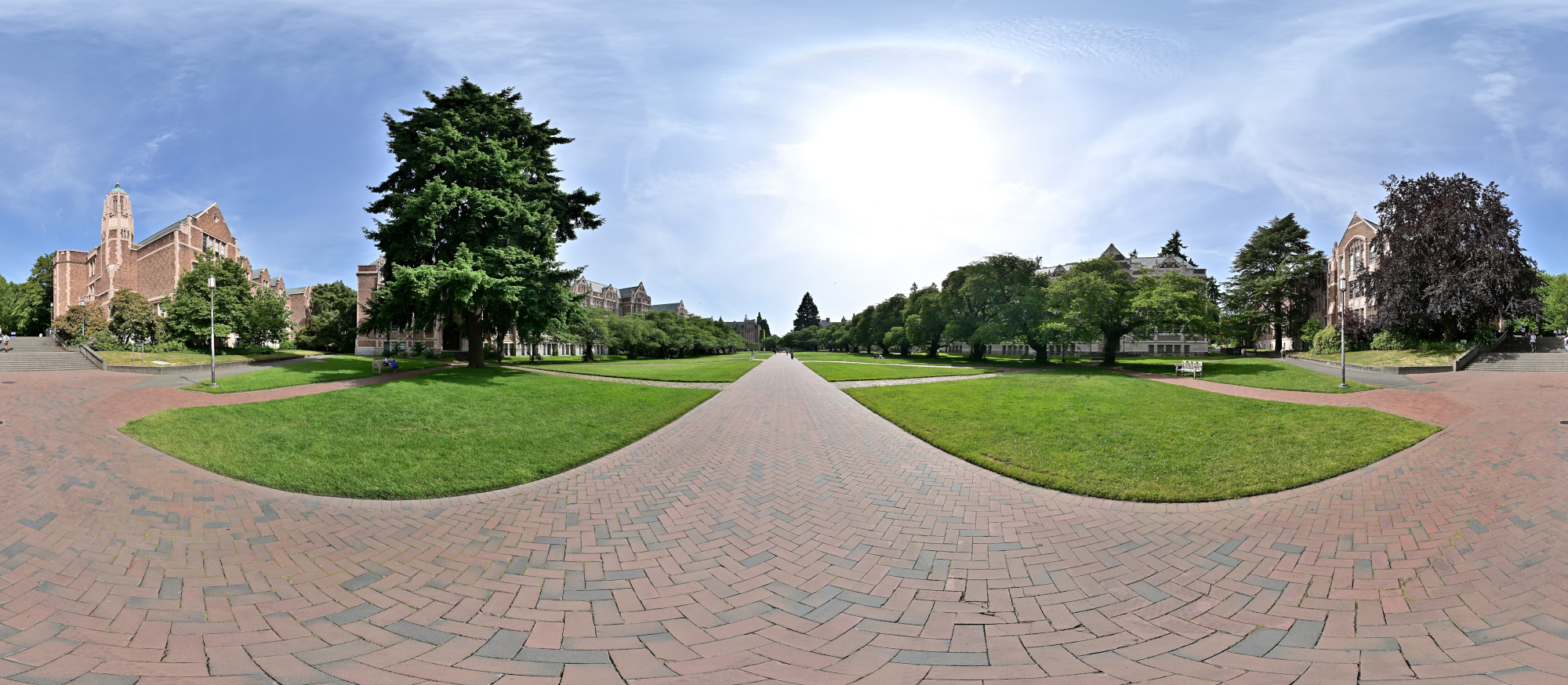
1/1000s f/5,6 ISO 100/21° f=7,5mm
Airplane spotted cruising at tree level. Must be a scenic route.

Smith Hall and Miller Hall
Smith Hall and Miller Hall stand side by side along the edge of the Quad, their classic collegiate architecture framing the space with a sense of tradition and academic purpose.
Interactive Panorama Smith Hall and Miller Hall
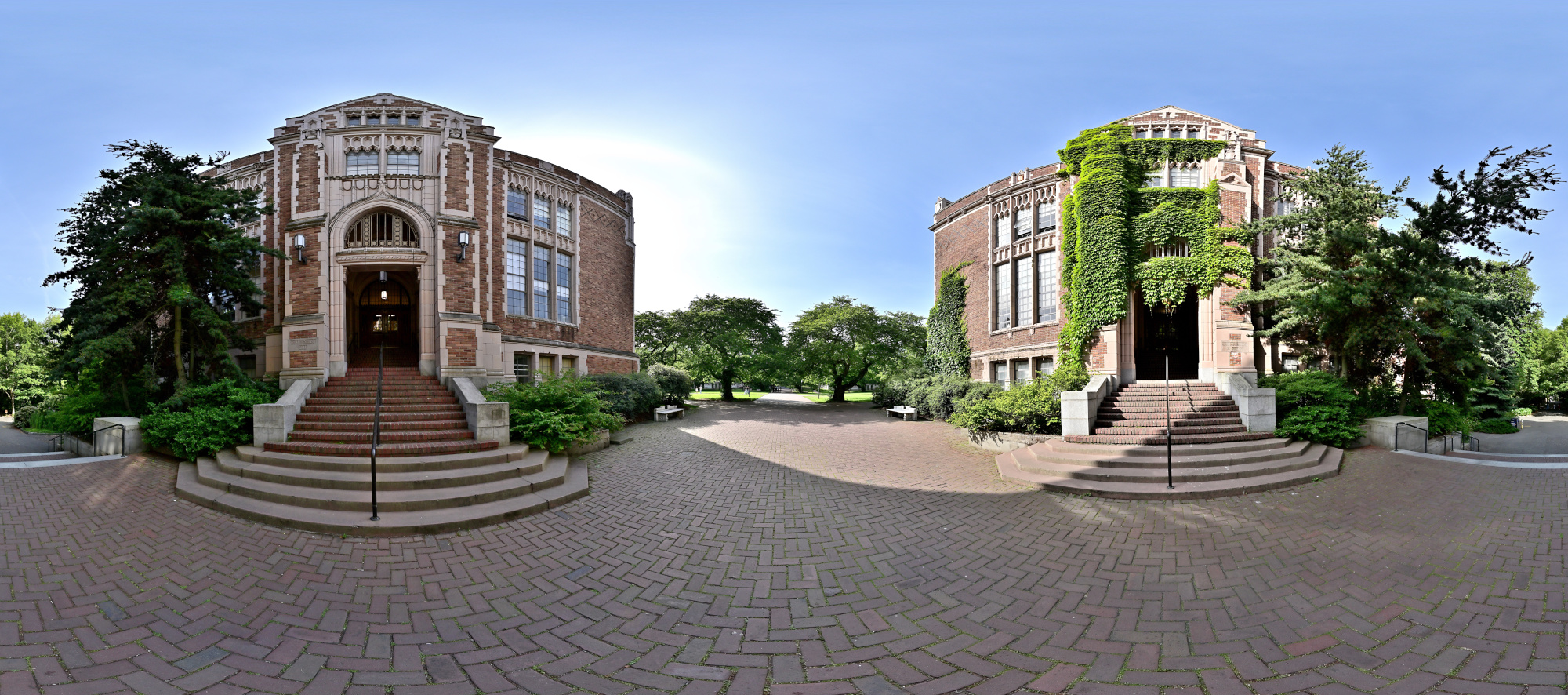
1/1000s f/5,6 ISO 100/21° f=7,5mm
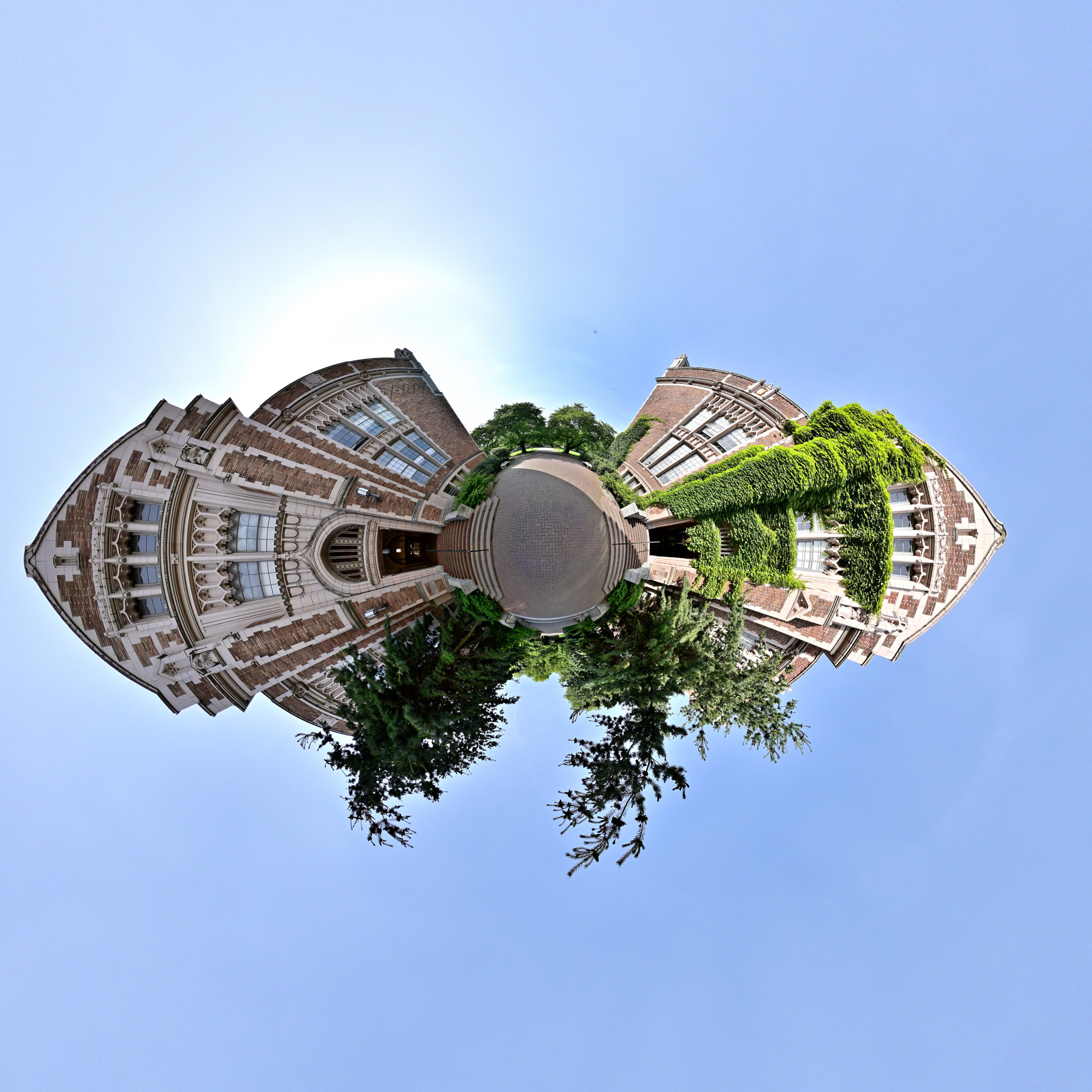
Denny Hall
Denny Hall, the oldest building on campus, stands with timeless elegance, its Romanesque architecture marking the historic beginnings of the University of Washington.
Interactive Panorama Denny Hall

1/1000s f/5,6 ISO 100/21° f=7,5mm
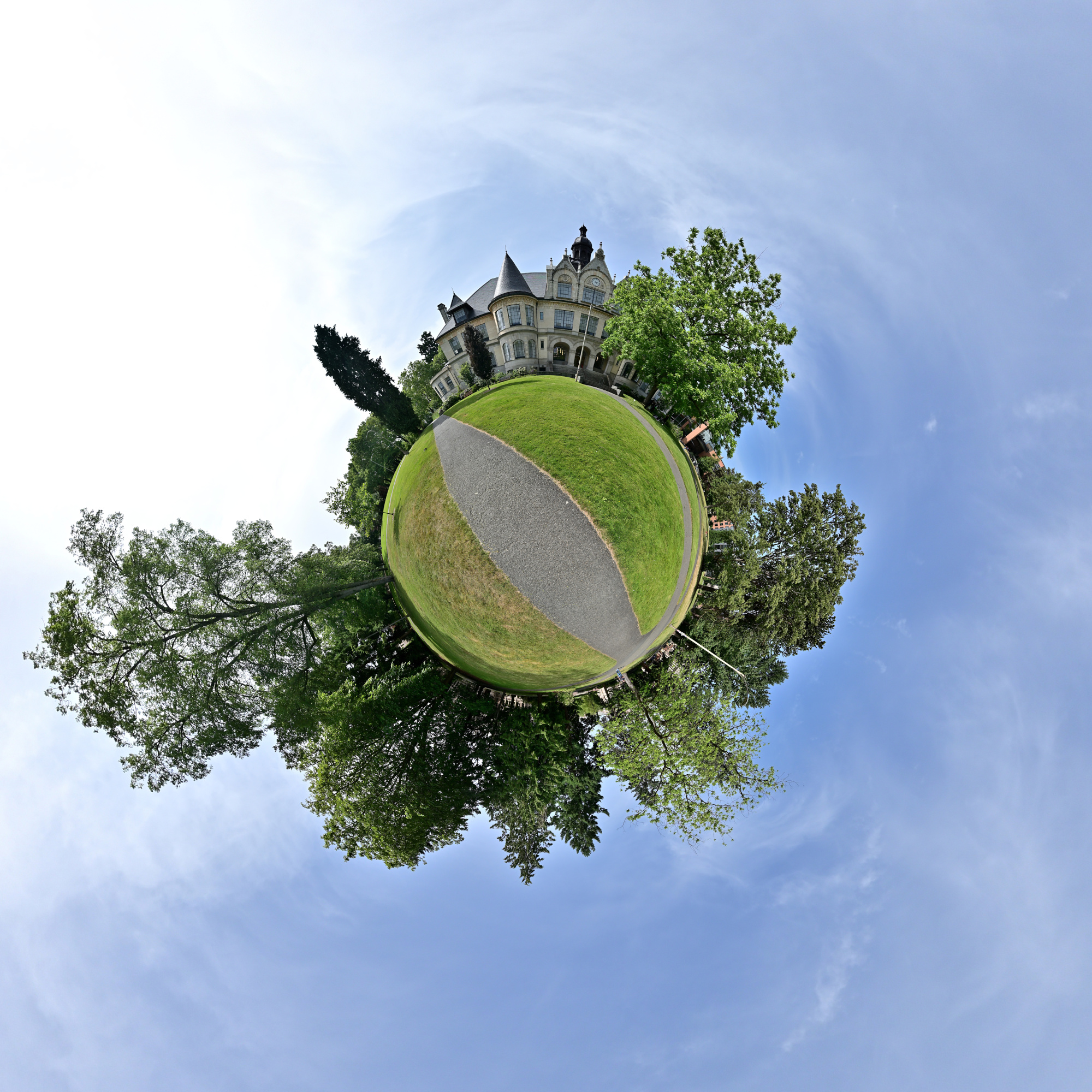
Rectilinear projection from the panorama
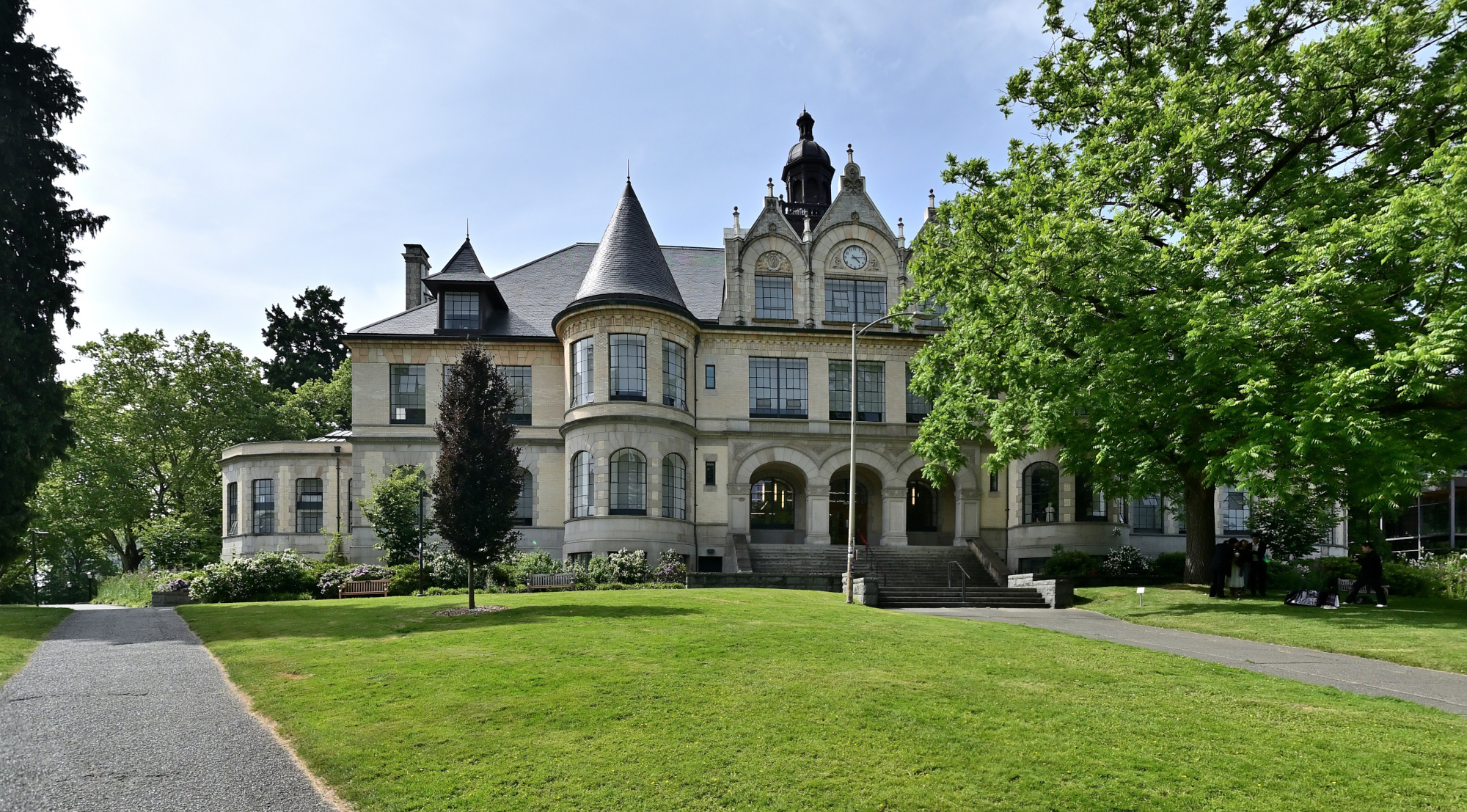
School of Art and School of Music
The School of Art and the School of Music sit near the edge of campus, where creativity and performance shape a vibrant cultural presence within the university’s academic landscape.
Interactive Panorama School of Art and School of Music
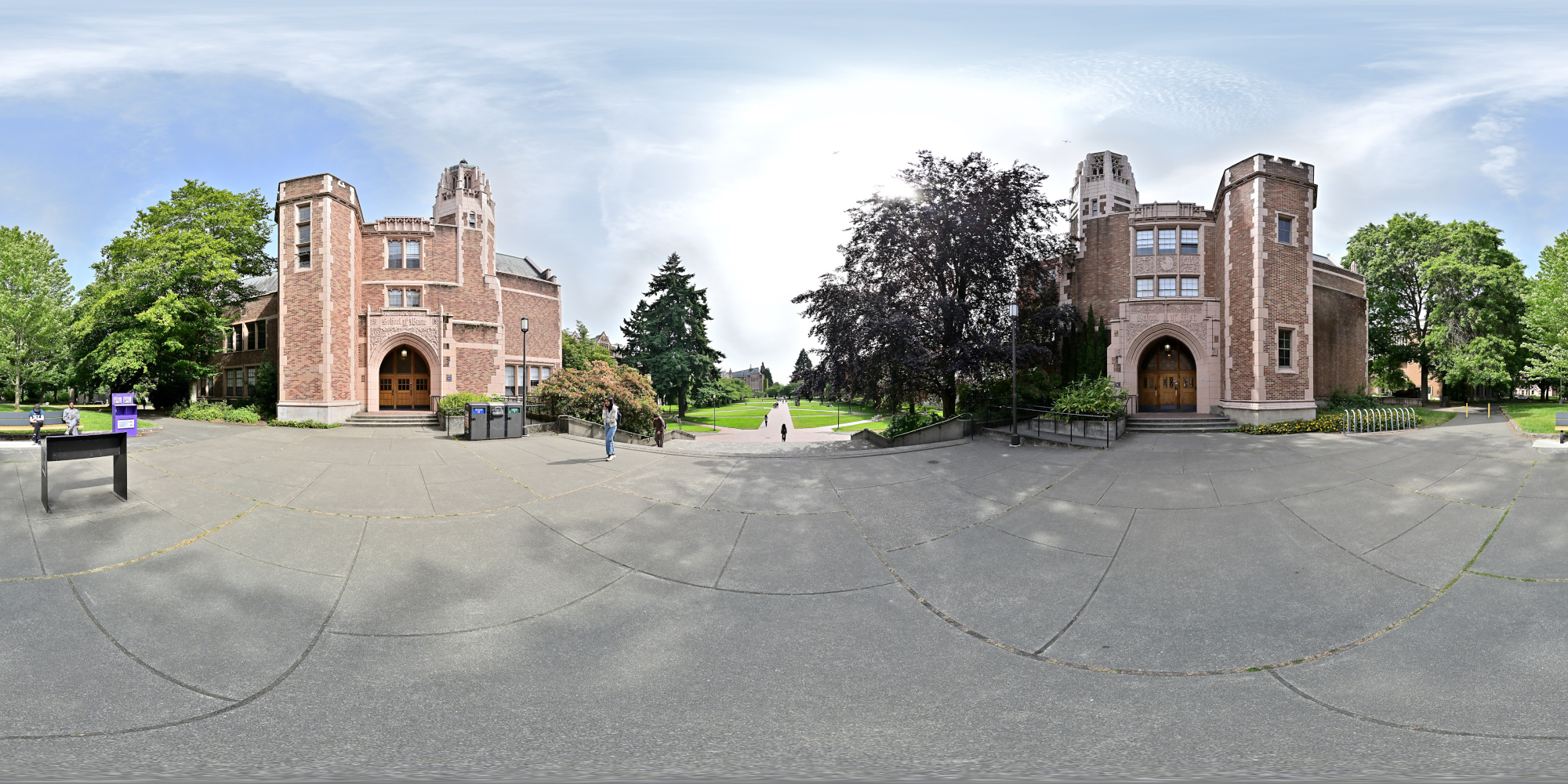
1/800s f/5,6 ISO 100/21° f=7,5mm
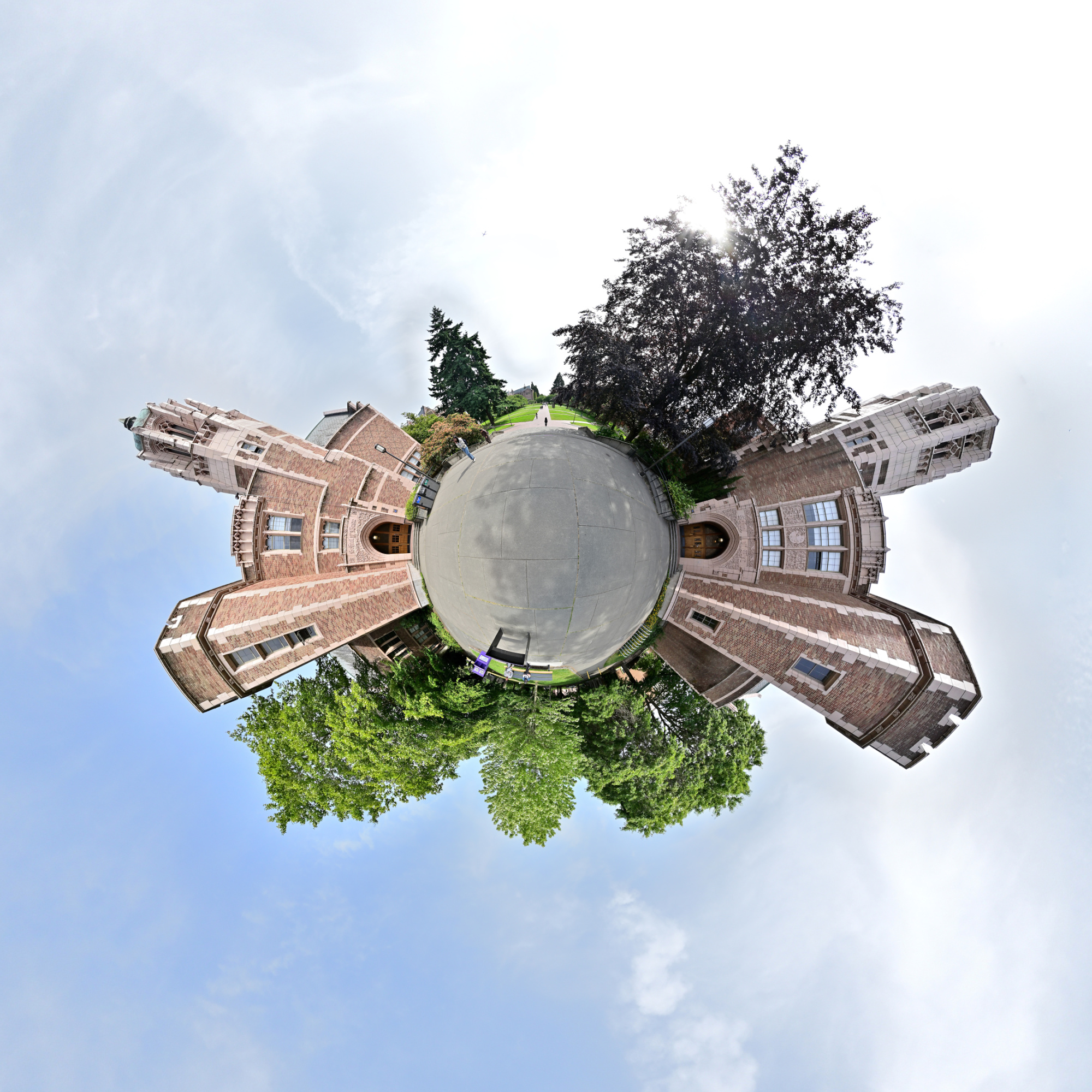
Avoiding Stitching Artifacts with Masking
In panoramic imaging, particularly in architectural or urban settings, a common source of stitching artifacts occurs when prominent structures such as building façades are captured in separate frames rather than as a whole within a single exposure. This segmented capture approach increases the risk of misalignment during the stitching process, often resulting in visible seam lines that disrupt the continuity and geometry of key architectural features.
In this panorama, the two building façades are each captured in separate frames but have been (green) masked to ensure that no seam line intersects the primary architectural elements, preserving structural integrity in the final composite.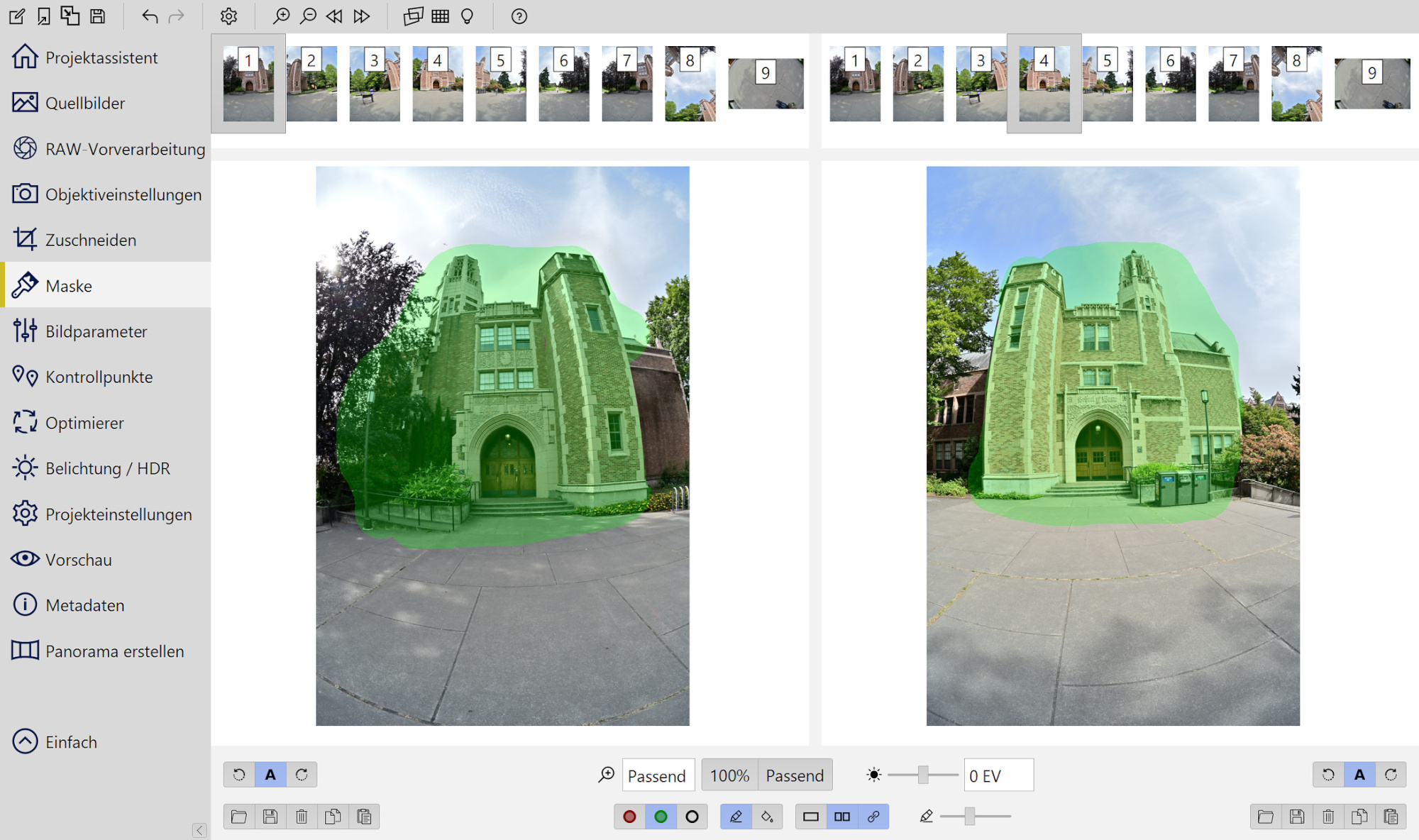

School of Art
The School of Art combines creativity and academic depth, giving students a place to study classic forms like drawing, painting, and sculpture.
Interactive Panorama School of Art
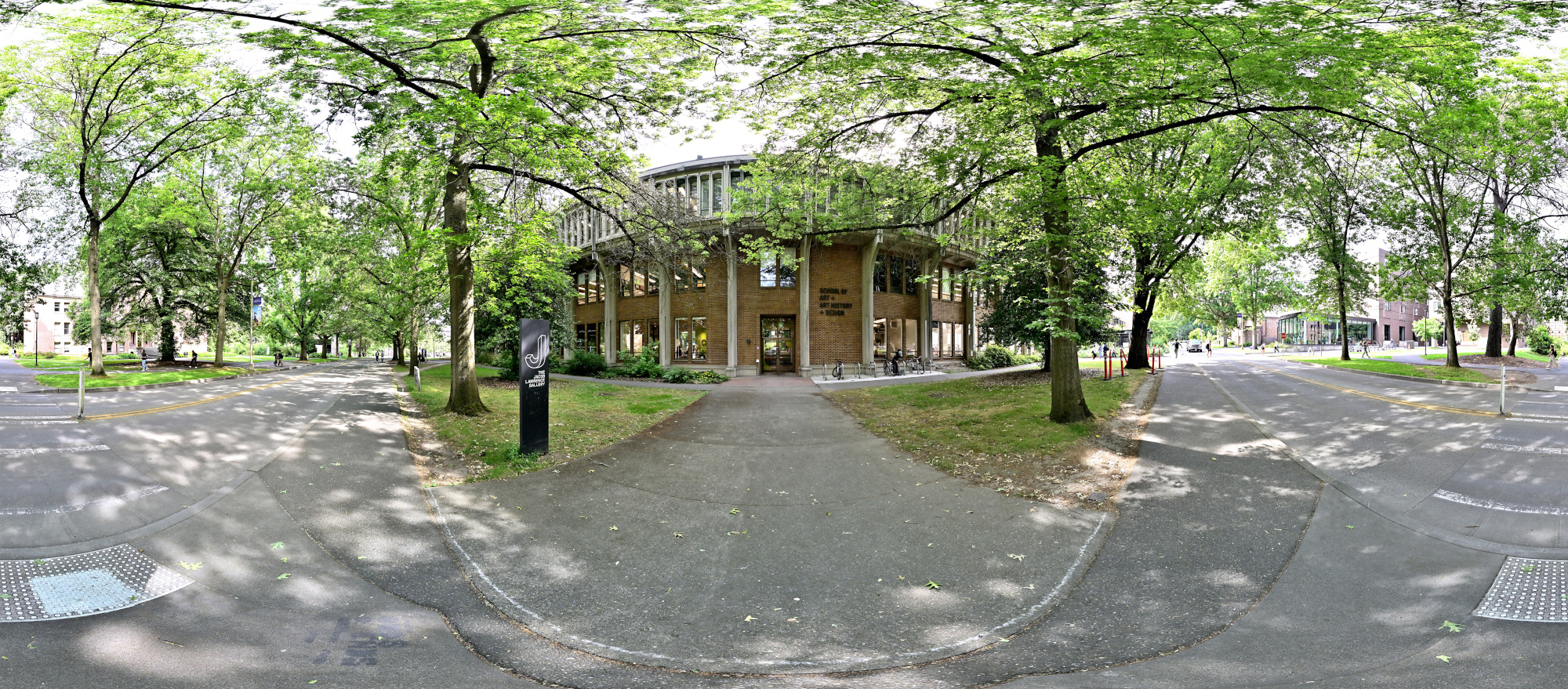
1/200s f/5,6 ISO 250/25° f=7,5mm
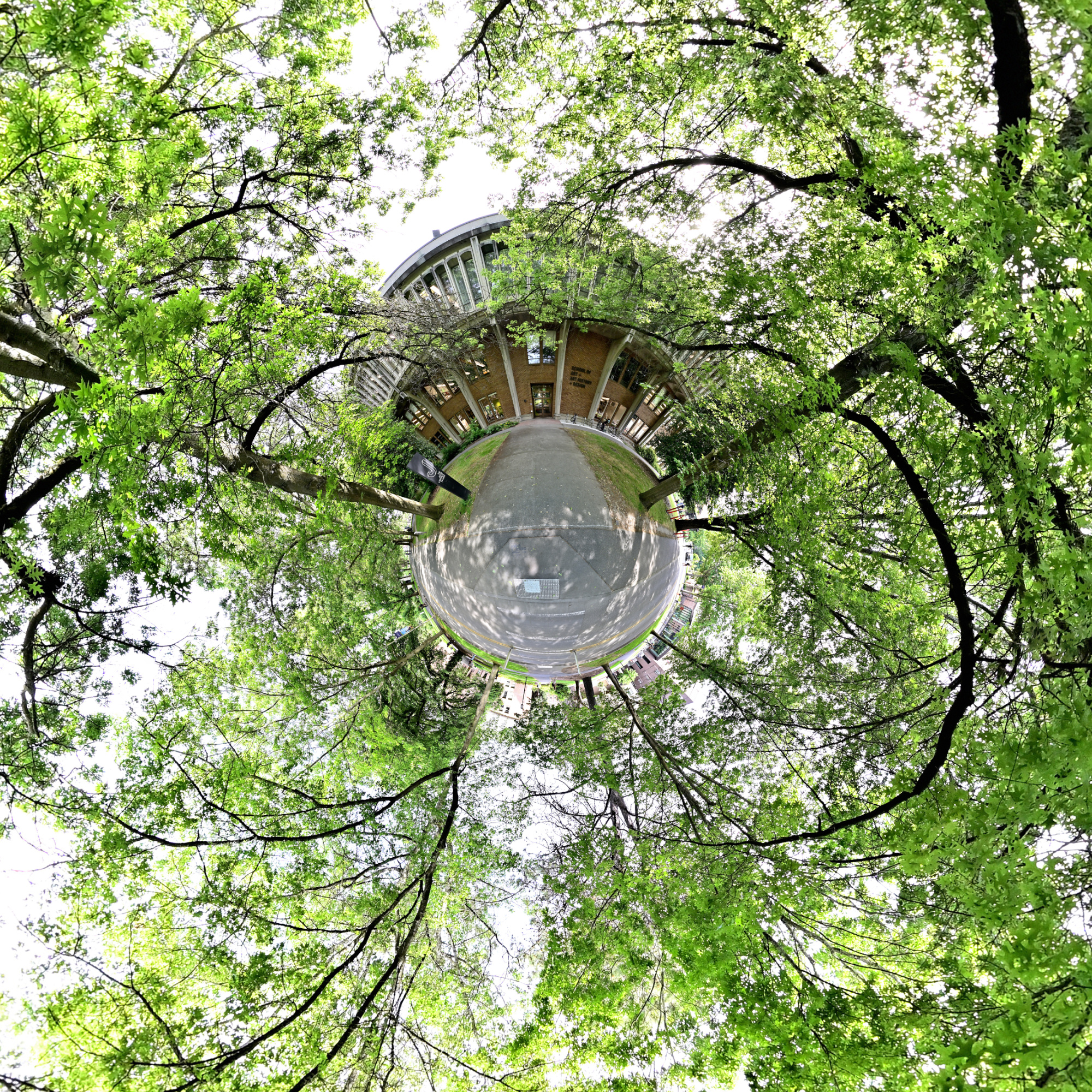
Communications Building
The Communications Building houses the university’s journalism and communication programs, offering students a dynamic space to explore media, storytelling, and public discourse.
Interactive Panorama Communications Building
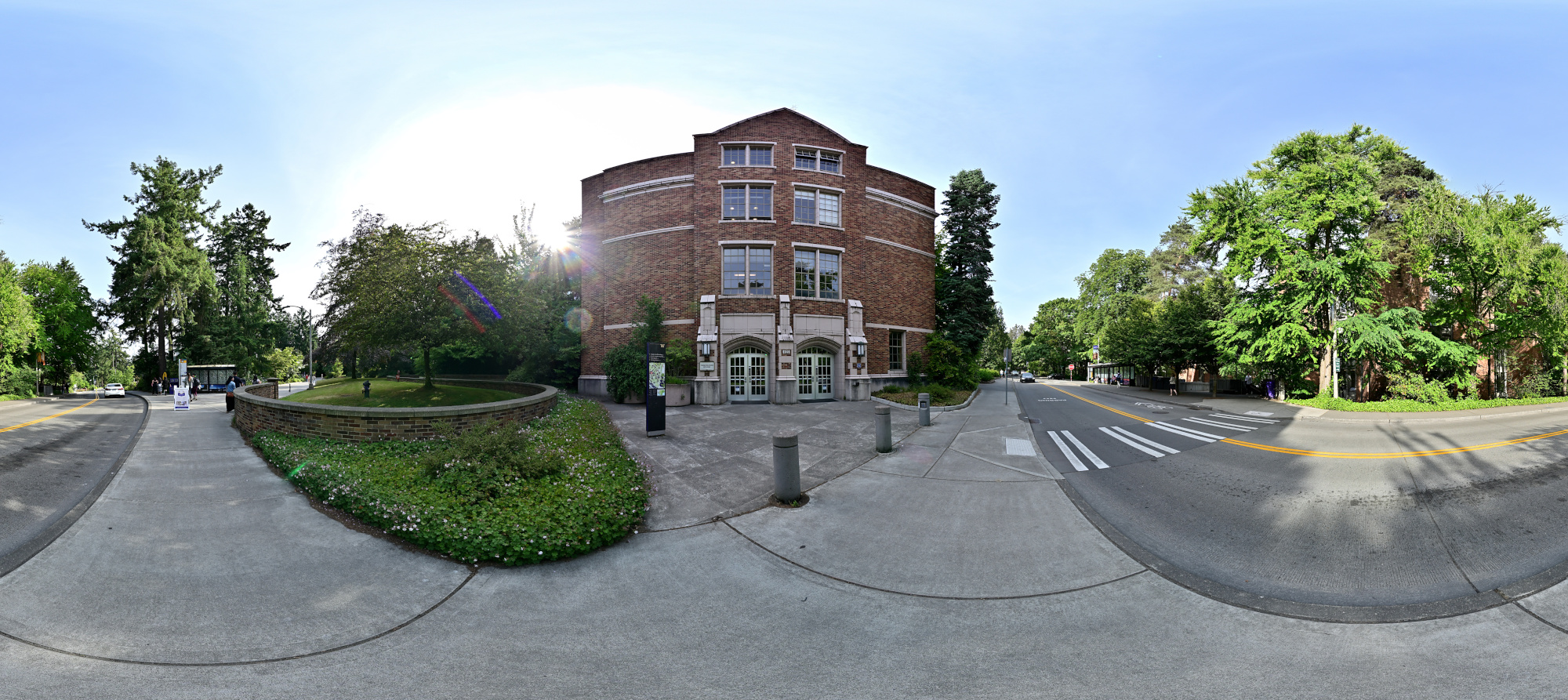
1/160s f/5,6 ISO 100/21° f=7,5mm
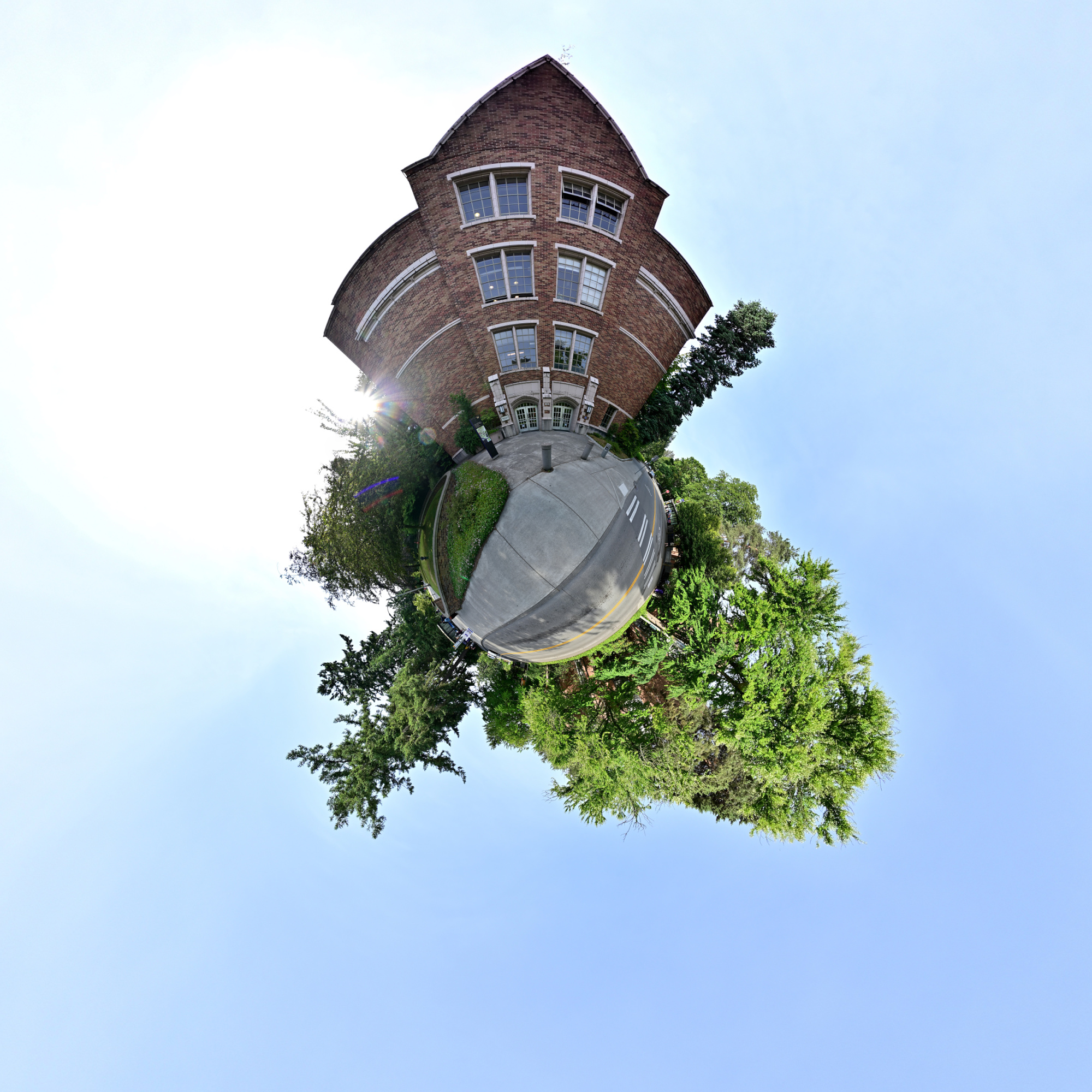
Drumheller Fountain
Drumheller Fountain sits at the center of Rainier Vista, offering a stunning reflection of Mount Rainier on clear days and serving as a scenic focal point surrounded by some of the campus’s most iconic buildings.
1/1000s f/5,6 ISO 100/21° f=7,5mm
Equirectangular projection

Stereographic projection
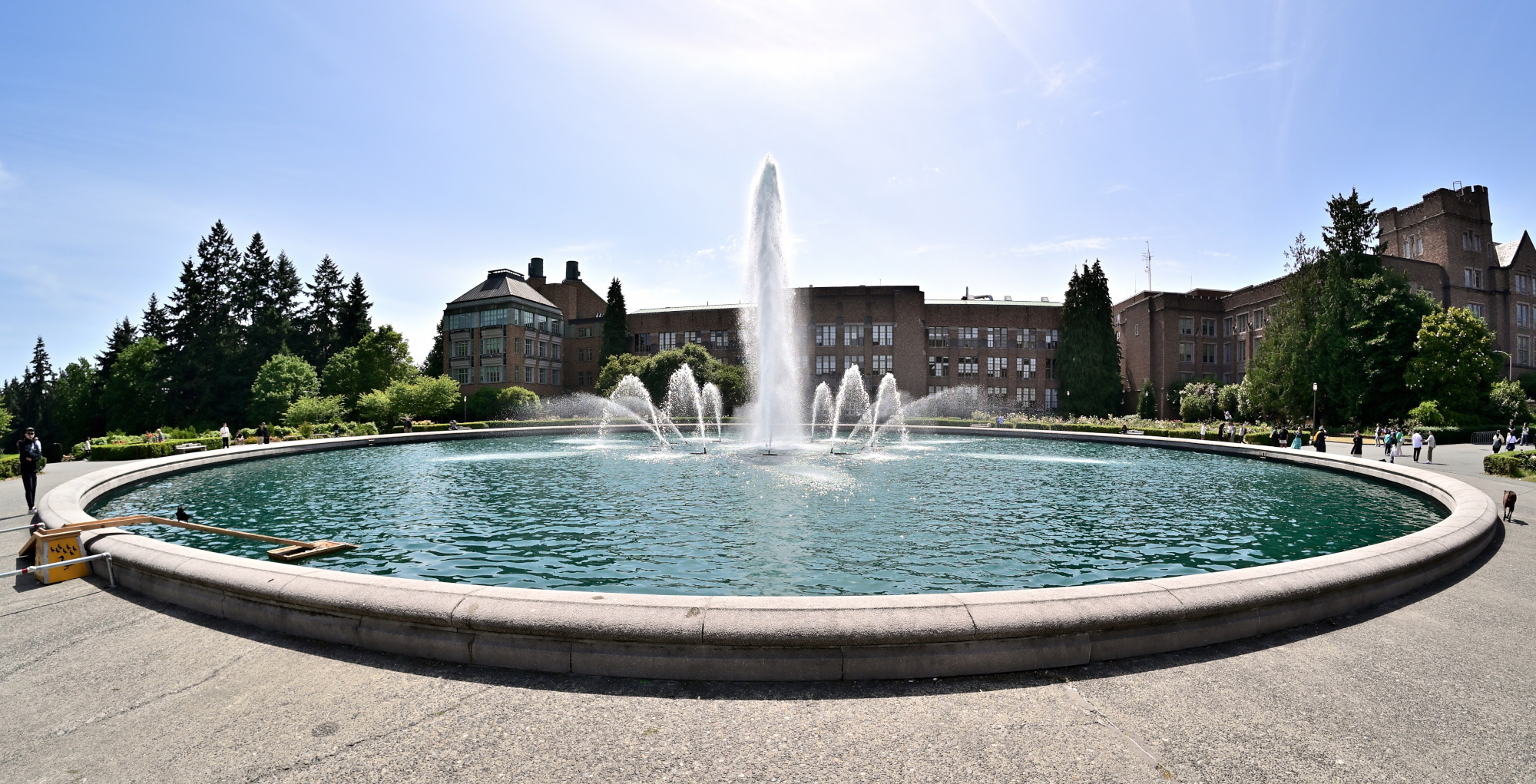
Interactive Panorama Drumheller Fountain 1

1/1000s f/5,6 ISO 100/21° f=7,5mm
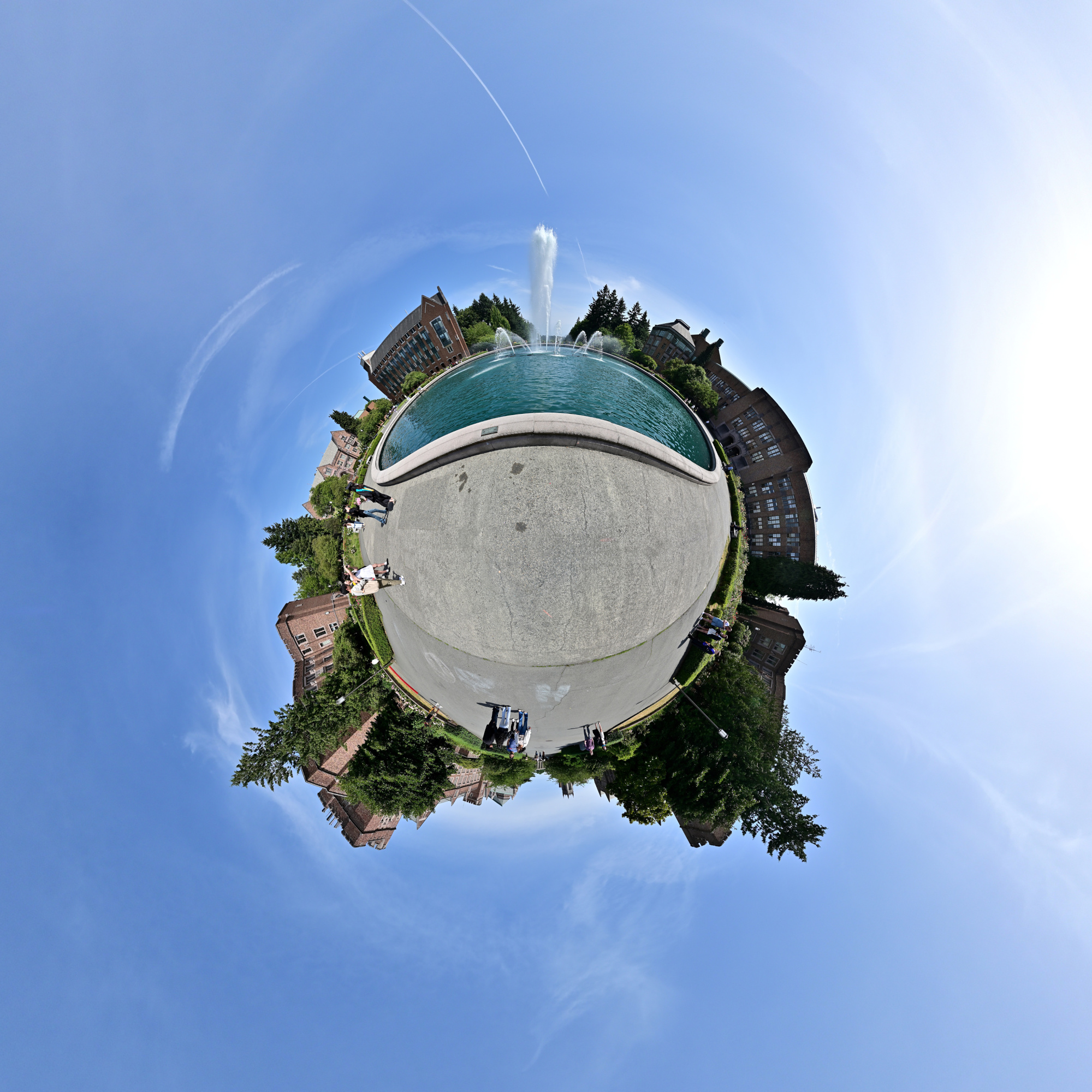
Interactive Panorama Drumheller Fountain 2
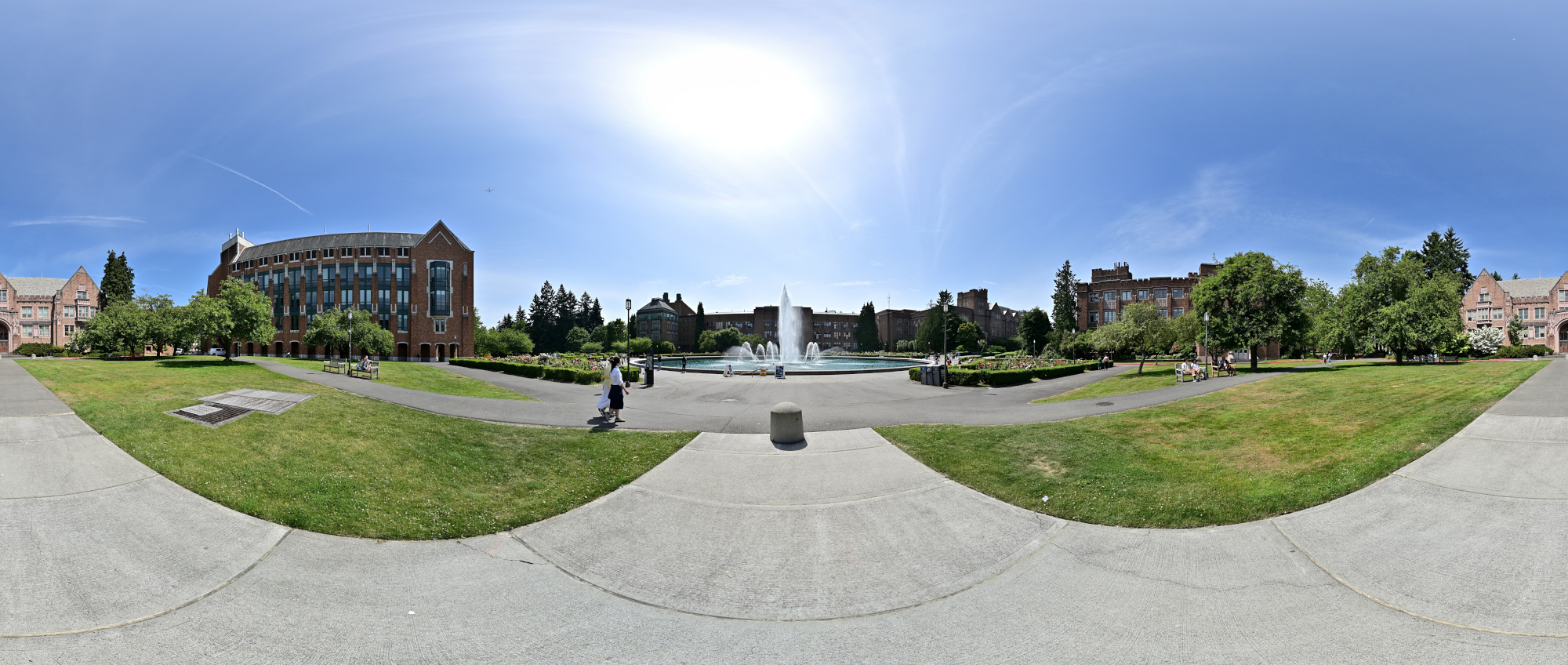
1/1000s f/5,6 ISO 100/21° f=7,5mm
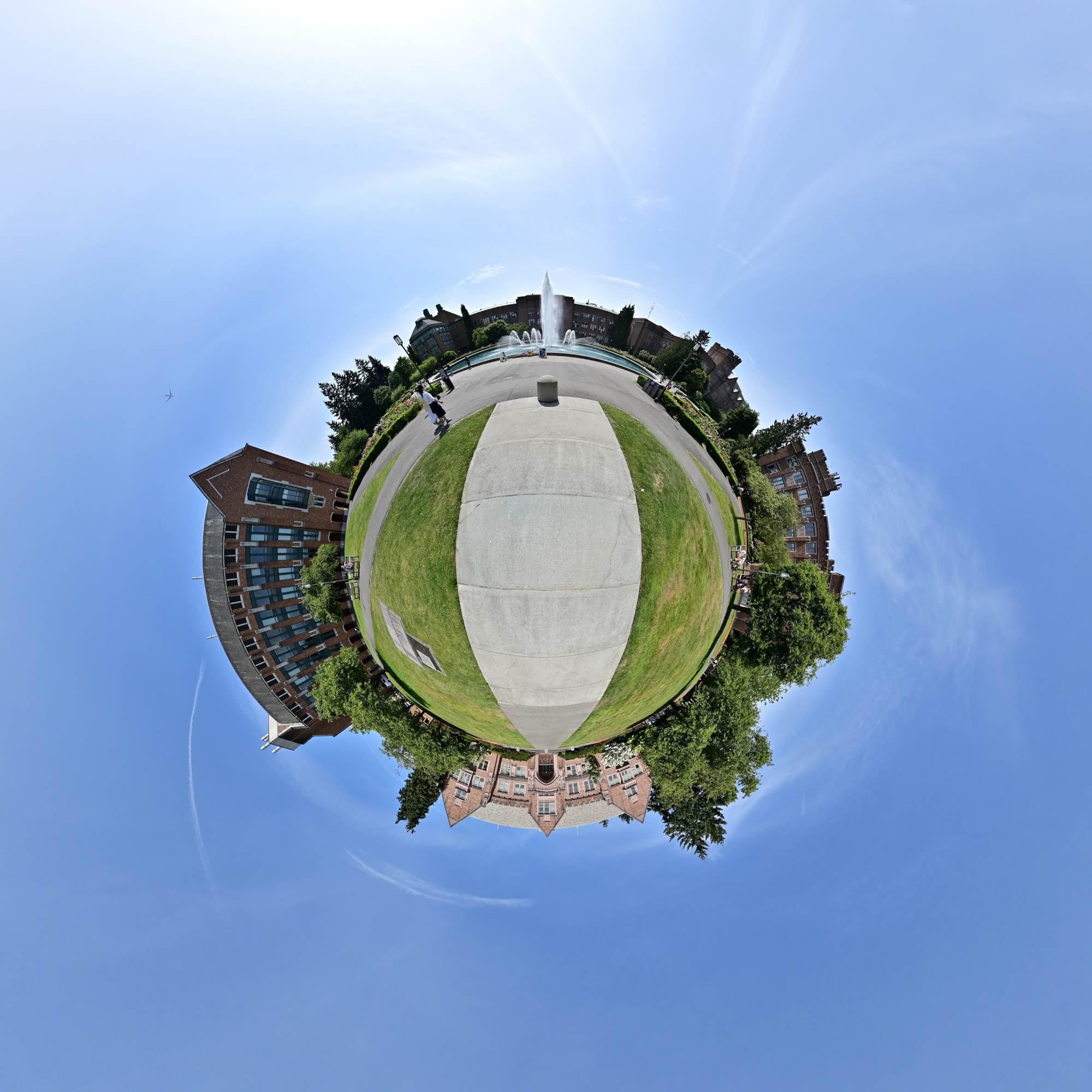
Rainier Vista
Rainier Vista is a grand, tree-lined axis that stretches from Red Square to Drumheller Fountain, offering a sightline to Mount Rainier on clear days and serving as one of the campus’s most iconic visual corridors.
Interactive Panorama Rainier Vista

1/1000s f/5,6 ISO 100/21° f=7,5mm

Rainier Vista Northeast Bridge
The Rainier Vista Northeast Bridge spans a key pedestrian route near the end of the vista, offering elevated views of Drumheller Fountain and the surrounding landscape while connecting key parts of the campus with ease and elegance.
Interactive Panorama Rainier Vista Northeast Bridge

1/1000s f/5,6 ISO 100/21° f=7,5mm
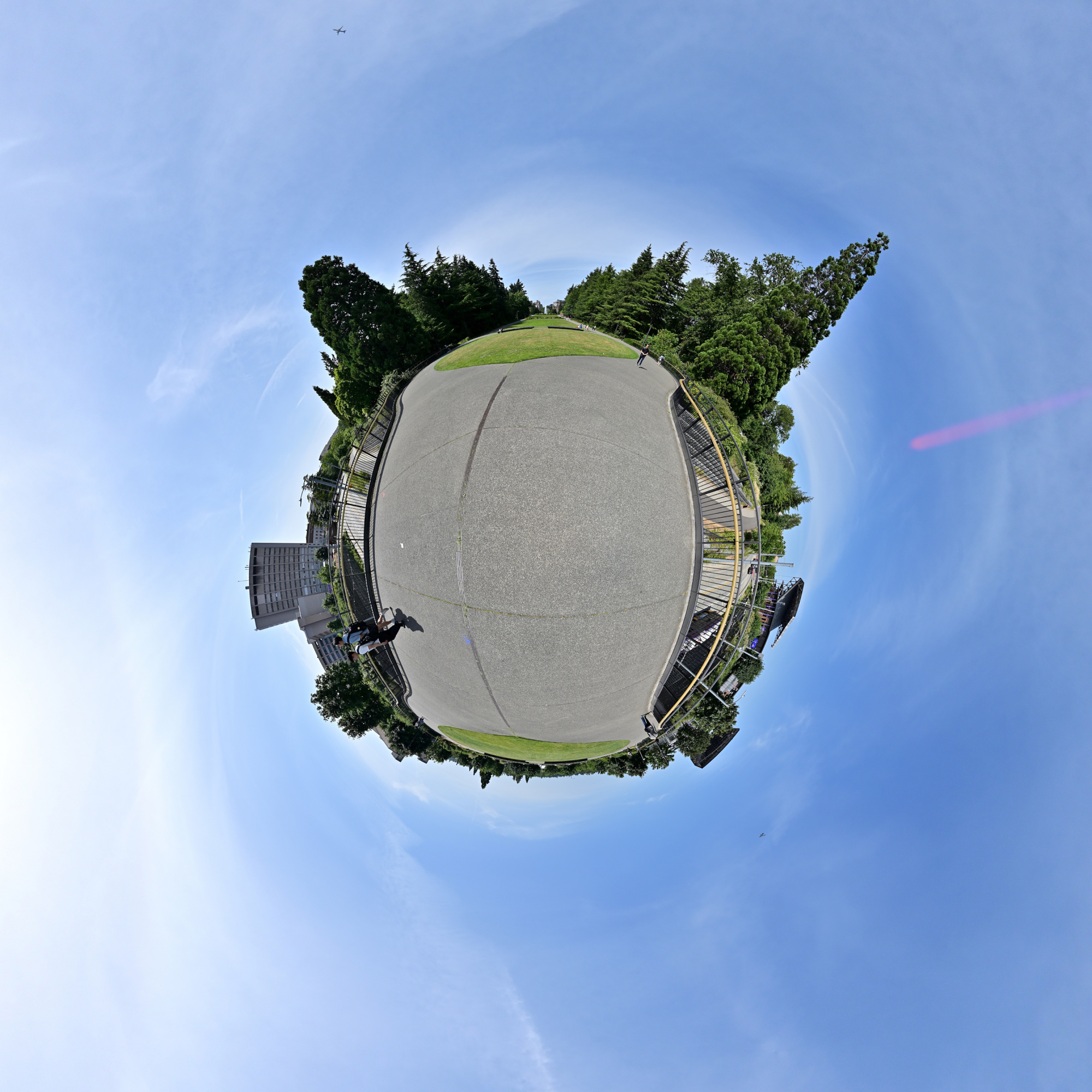
Bridge to Husky Stadium
The bridge to Husky Stadium provides a vital pedestrian link between the main campus and the athletic complex, guiding fans and students alike across Montlake Boulevard with sweeping views of Union Bay and the stadium’s iconic silhouette.
Interactive Panorama Bridge to Husky Stadium
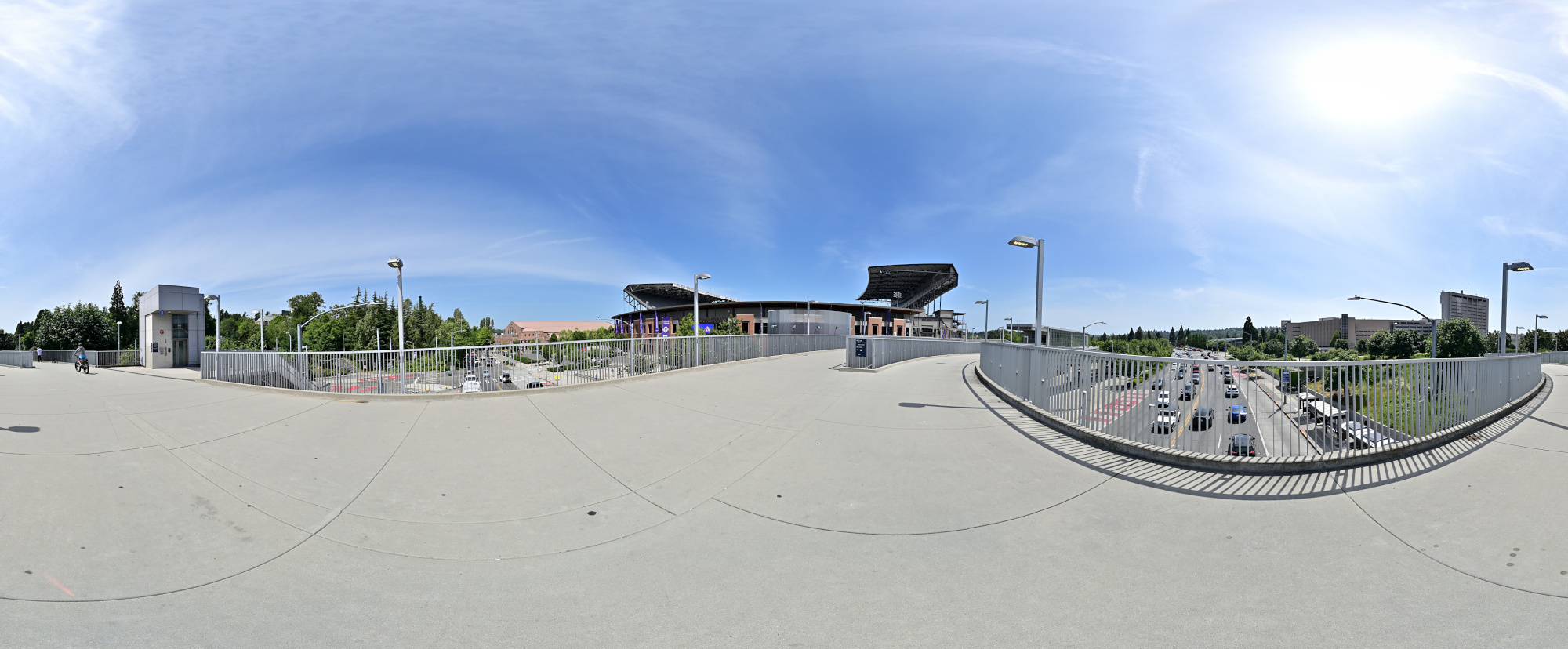
1/1000s f/5,6 ISO 100/21° f=7,5mm
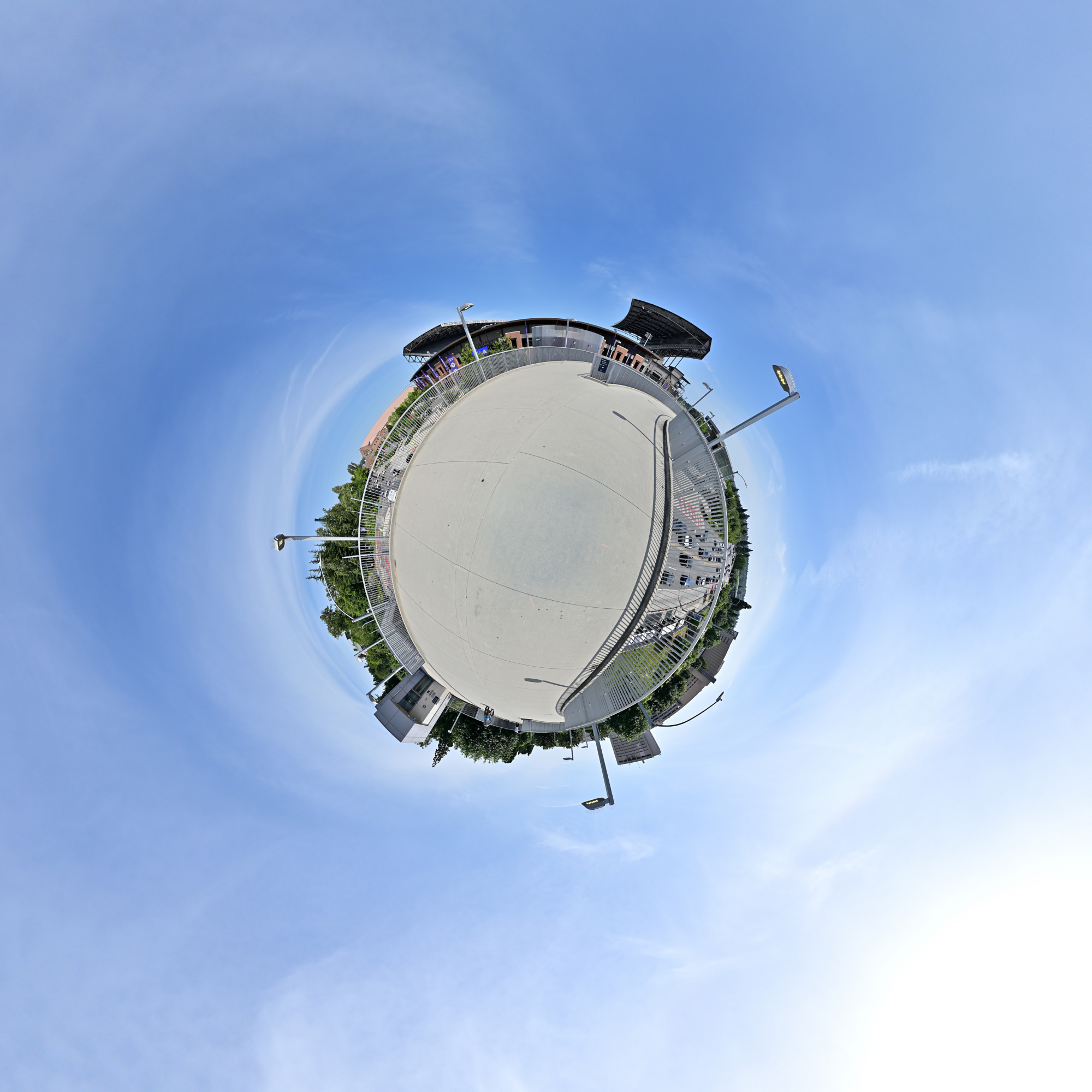
UW Panorama Map3

And here, the panoramic journey ends for today
1/200s f/5,6 ISO 100/21° f=7,5mm

-
Lake Washington Bridges
At the Evergreen Point Floating Bridge
Viewpoint 1
Interactive Panorama 520 Bridge 1

1/1000s f/5,6 ISO 100/21° f=7,5mm
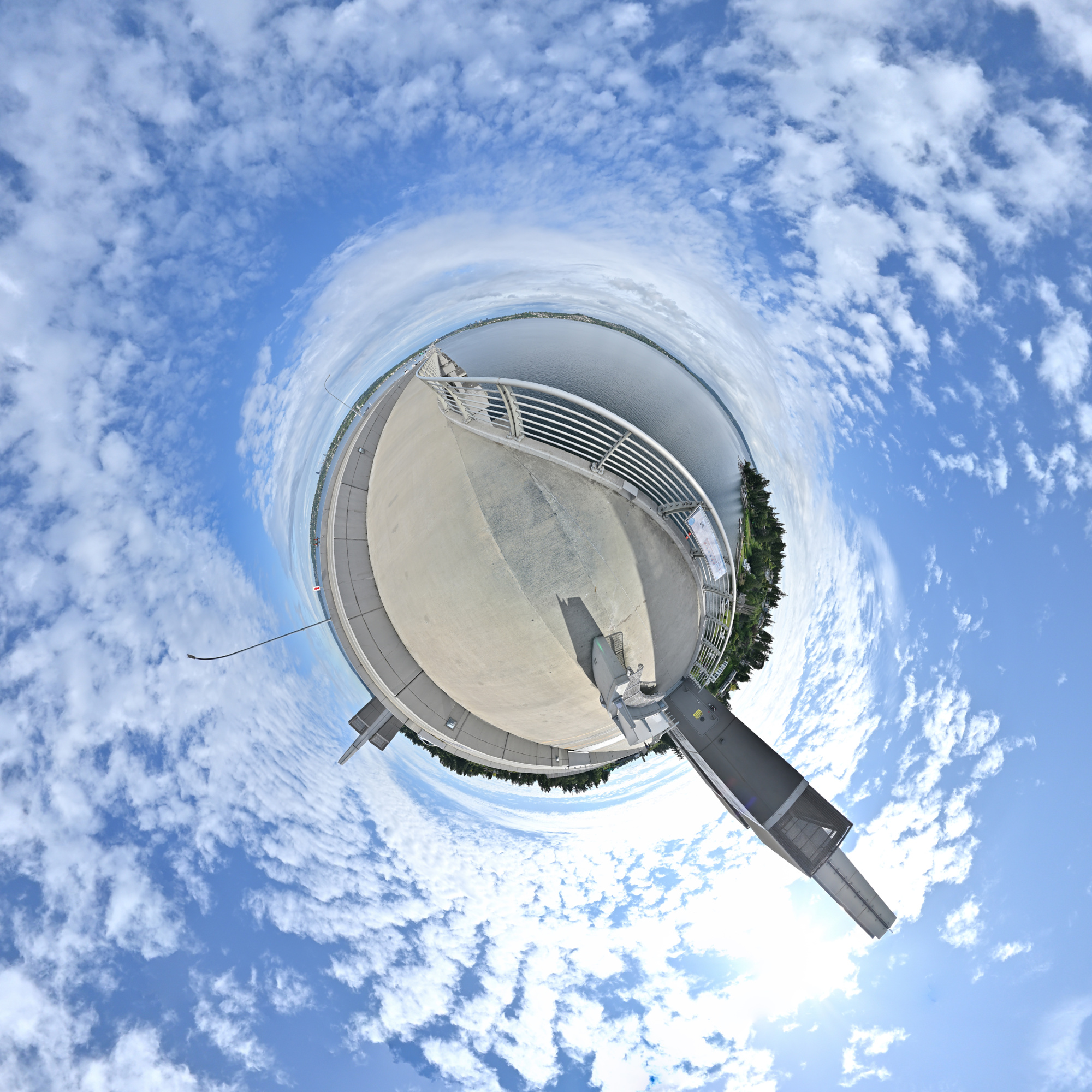
Equirectangular projection of the information sign.
1/1000s f/5,6 ISO 100/21° f=7,5mm
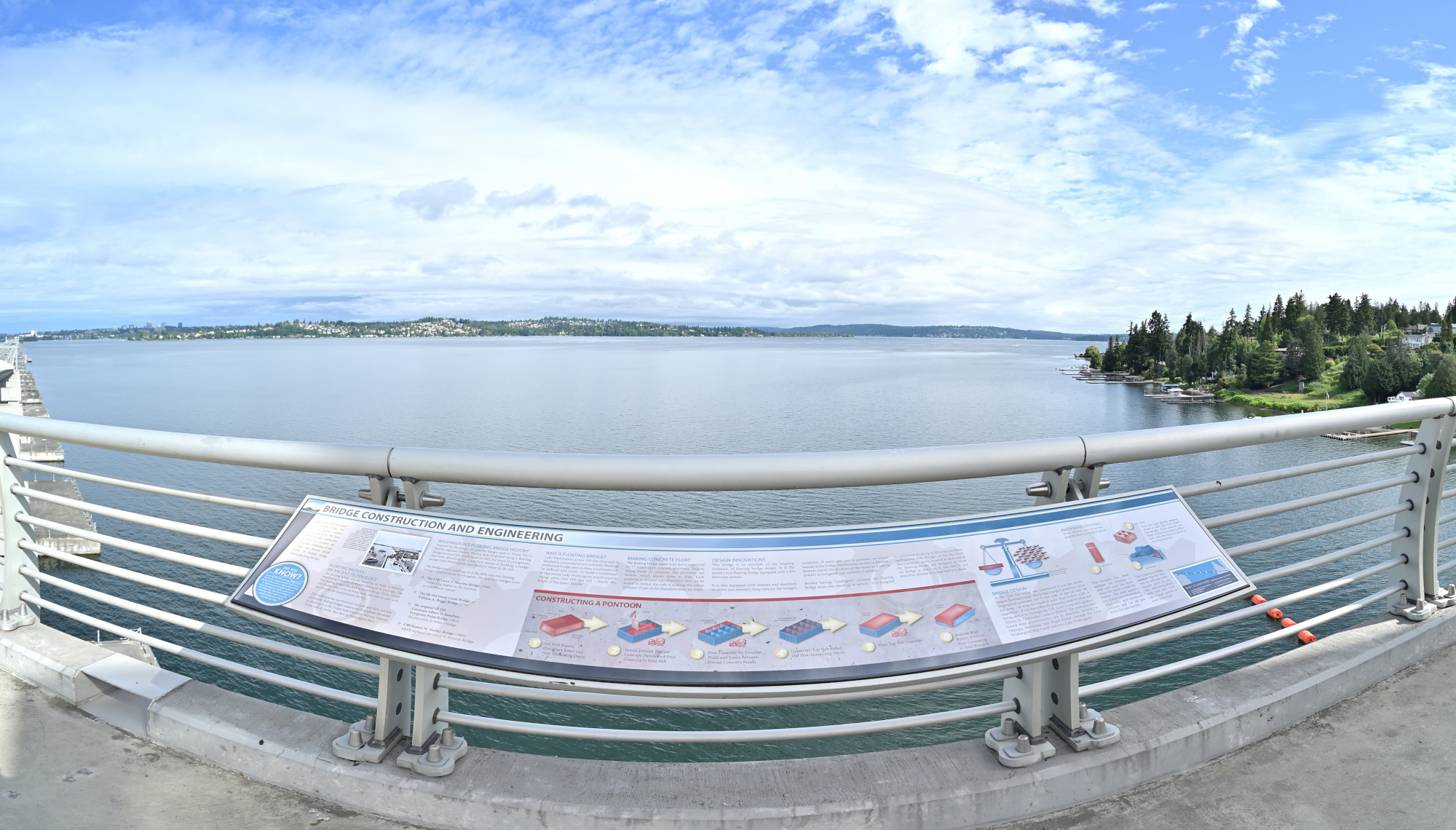
Rectilinear projection of the information sign.
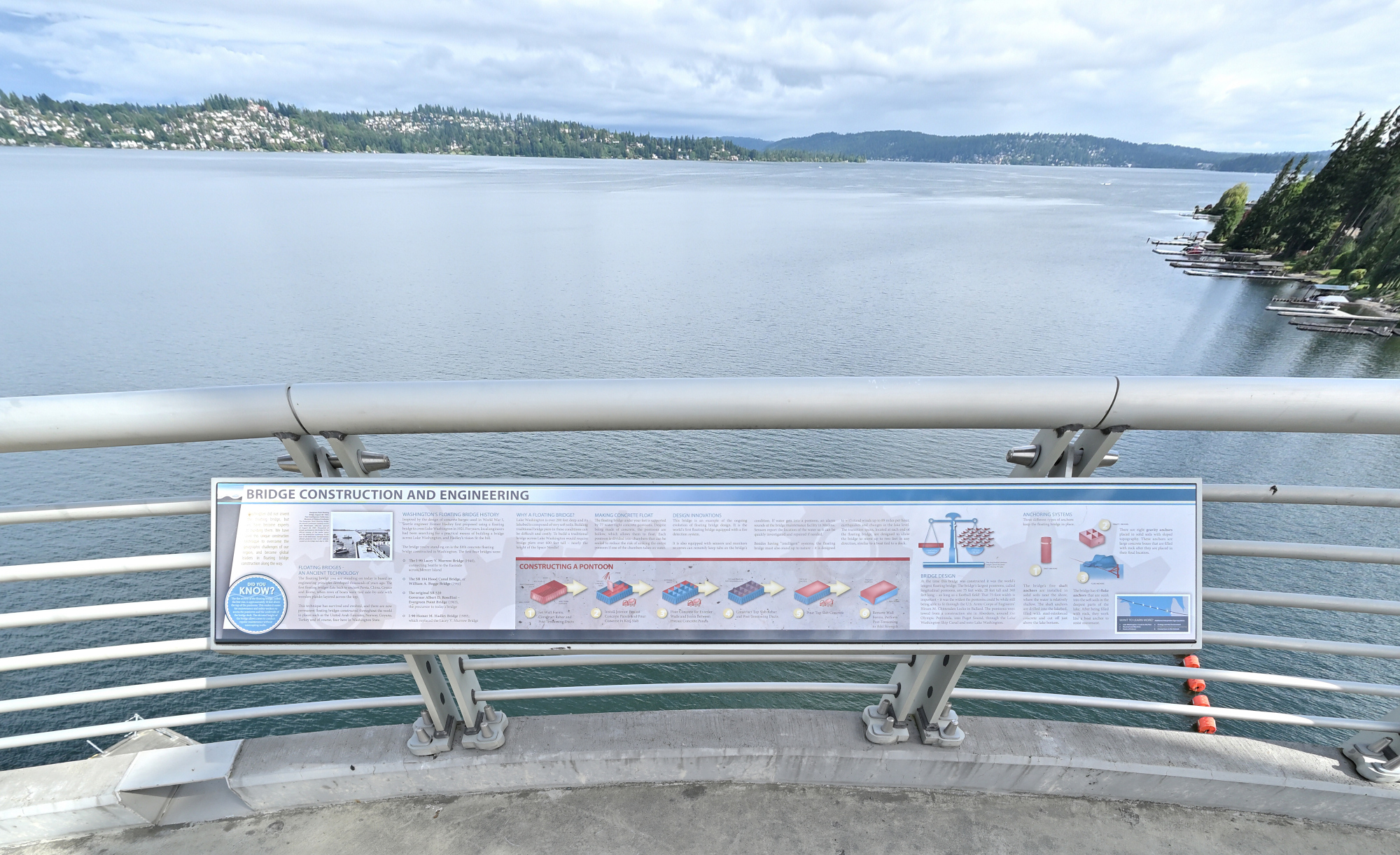
Viewpoint 2
Within a minute, the weather shifted from sunny with clouds to overcast and windy.
Panorama Timestamps:Time Weather Action 09:45:18 ⛅ 09:45:21 ⛅ 09:45:24 ⛅ 09:45:27 ⛅ move the bicycle 09:45:45 ☁️ again move the bicycle 09:46:10 ☁️ 09:46:12 ☁️ 09:46:15 ☁️ remove the camera from the nodal adapter4 and prepare for the nadir5 09:46:27 ☁️ The forecast was ⛅ until noon. This is what the actual weather turned out to be:
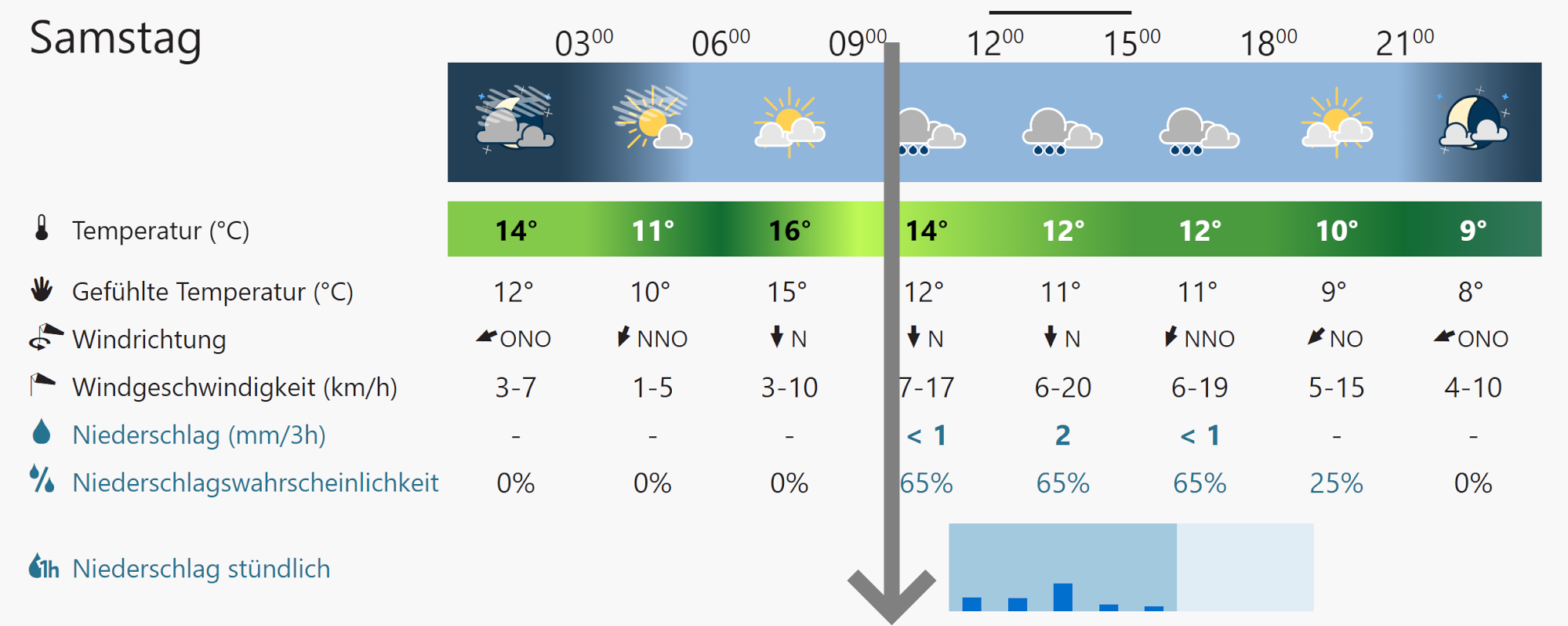
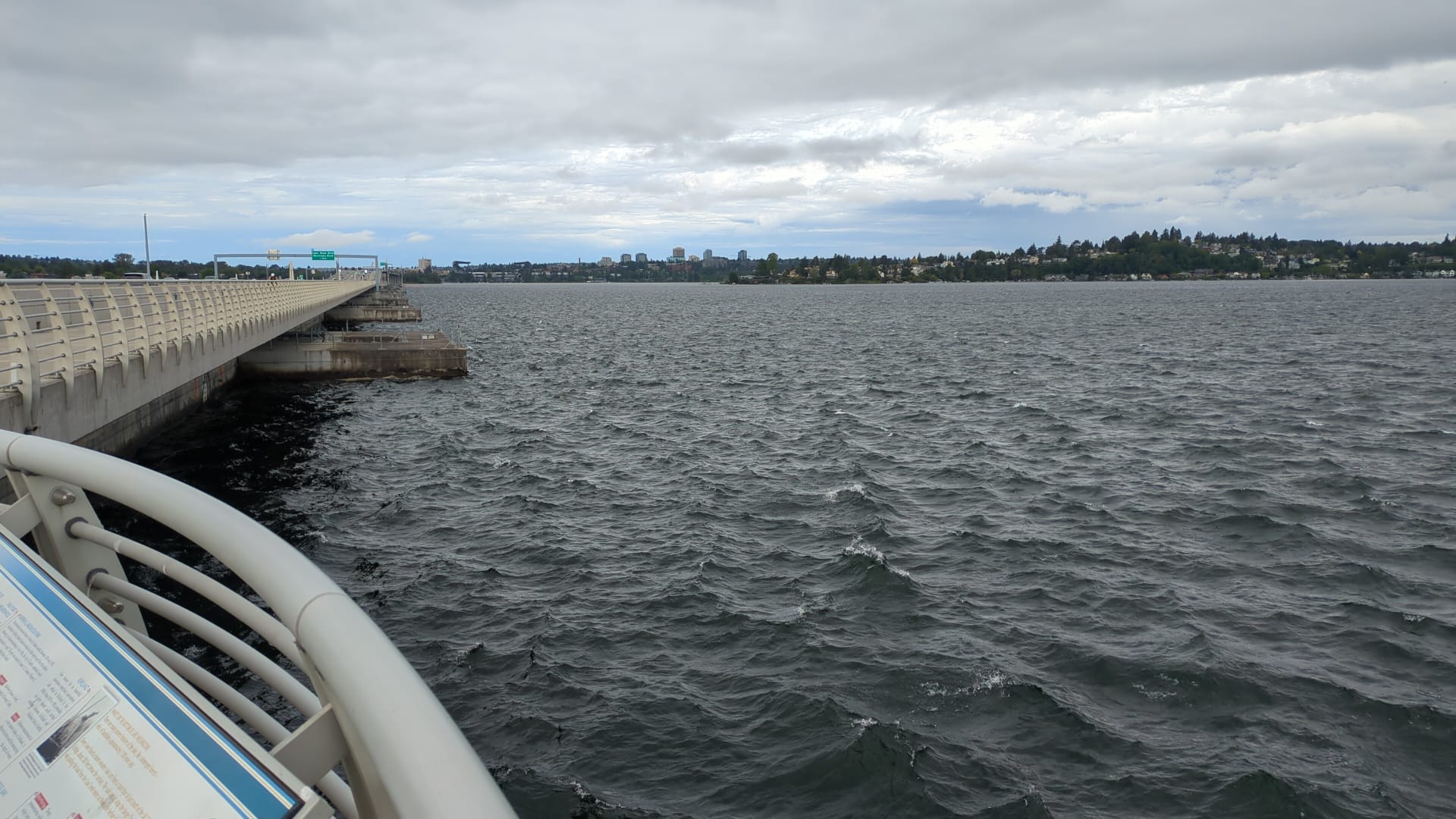
The panorama vividly captures the swift weather change, with the shadow gradually fading in the final pictures, creating an eerie emptiness.
And the Cybertruck nearly obscured Mount Rainier.Interactive Panorama 520 Bridge 2

1/1000s f/5,6 ISO 100/21° f=7,5mm
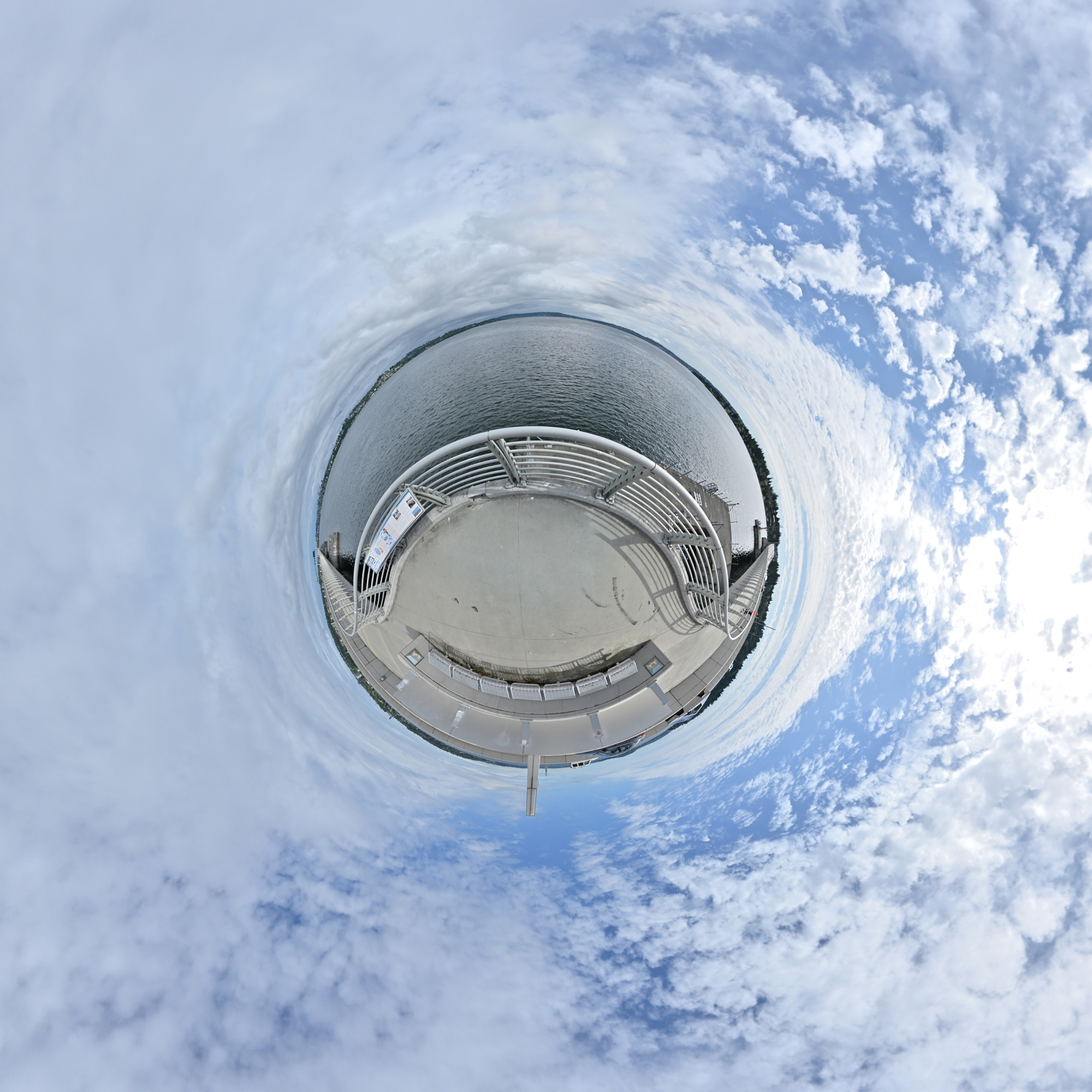
1/1000s f/5,6 ISO 100/21° f=7,5mm
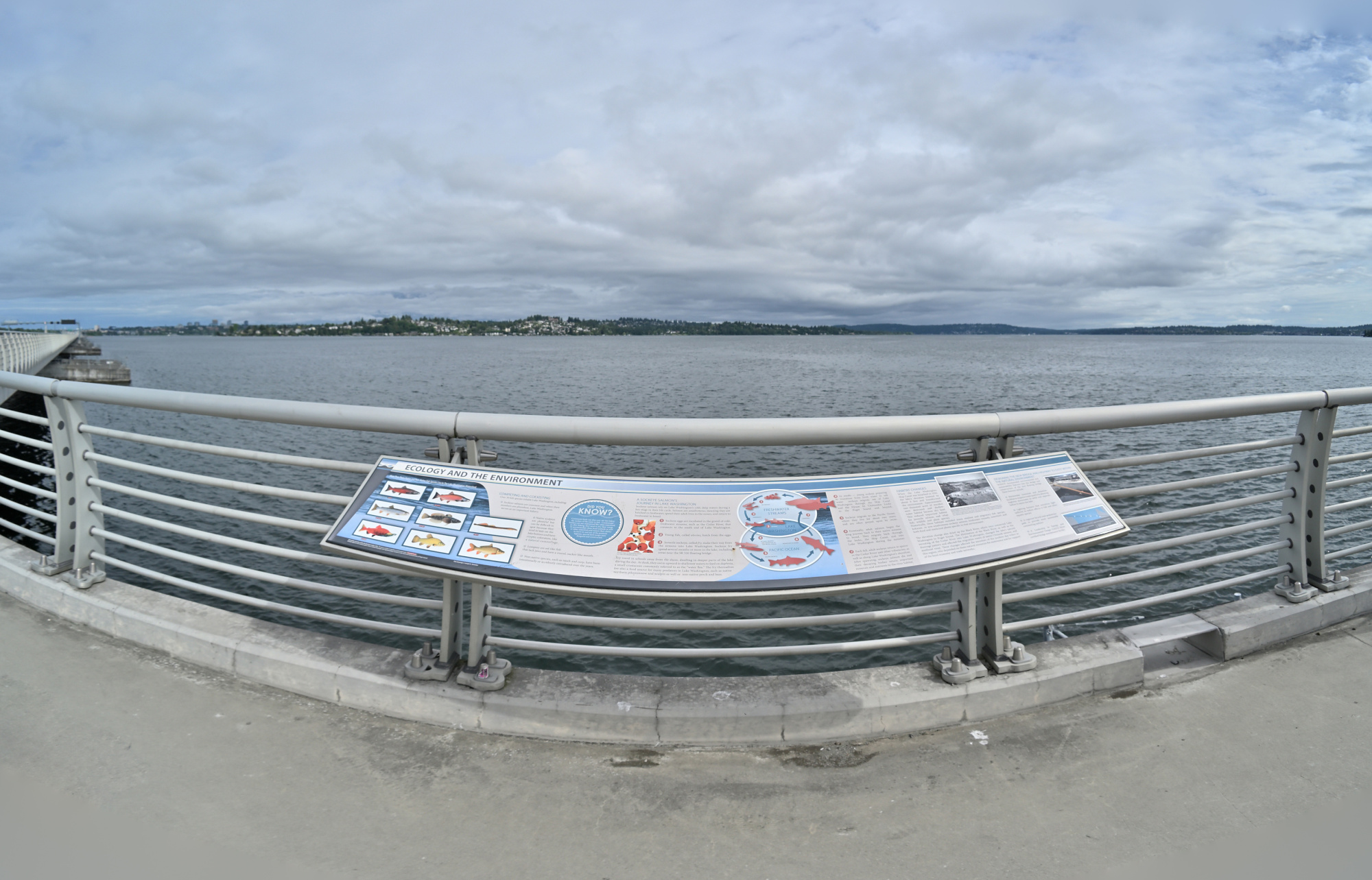
Viewpoint 3
One week later, and the sun finally showed up 🌞
After last week's abrupt stop due to clouds and wind, I finally got the chance to pick up where I left off. Today couldn't have been more different—clear skies, warm light, and perfect conditions for capturing the panoramas I had planned.
Interactive Panorama 520 Bridge 3
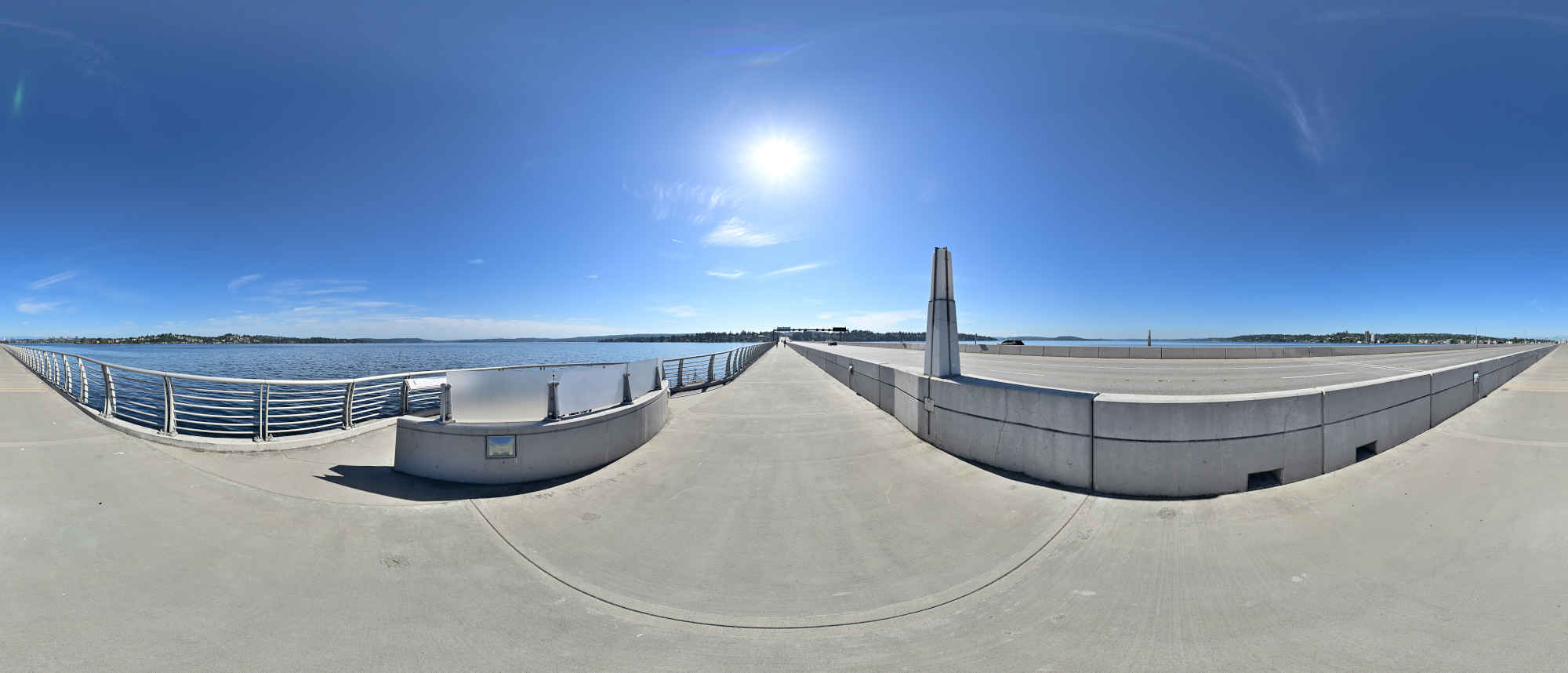
1/1000s f/5,6 ISO 100/21° f=7,5mm
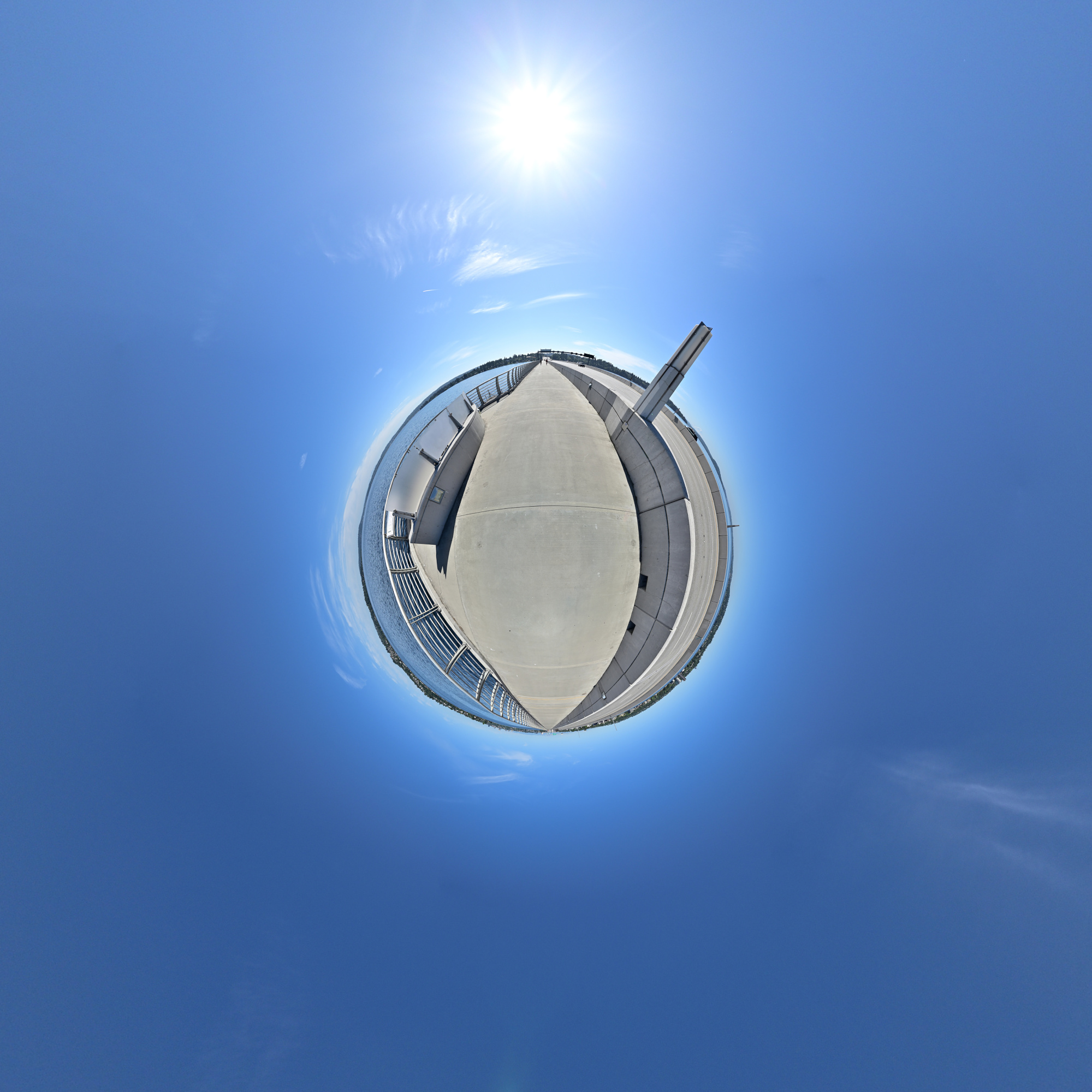
1/1000s f/5,6 ISO 100/21° f=7,5mm
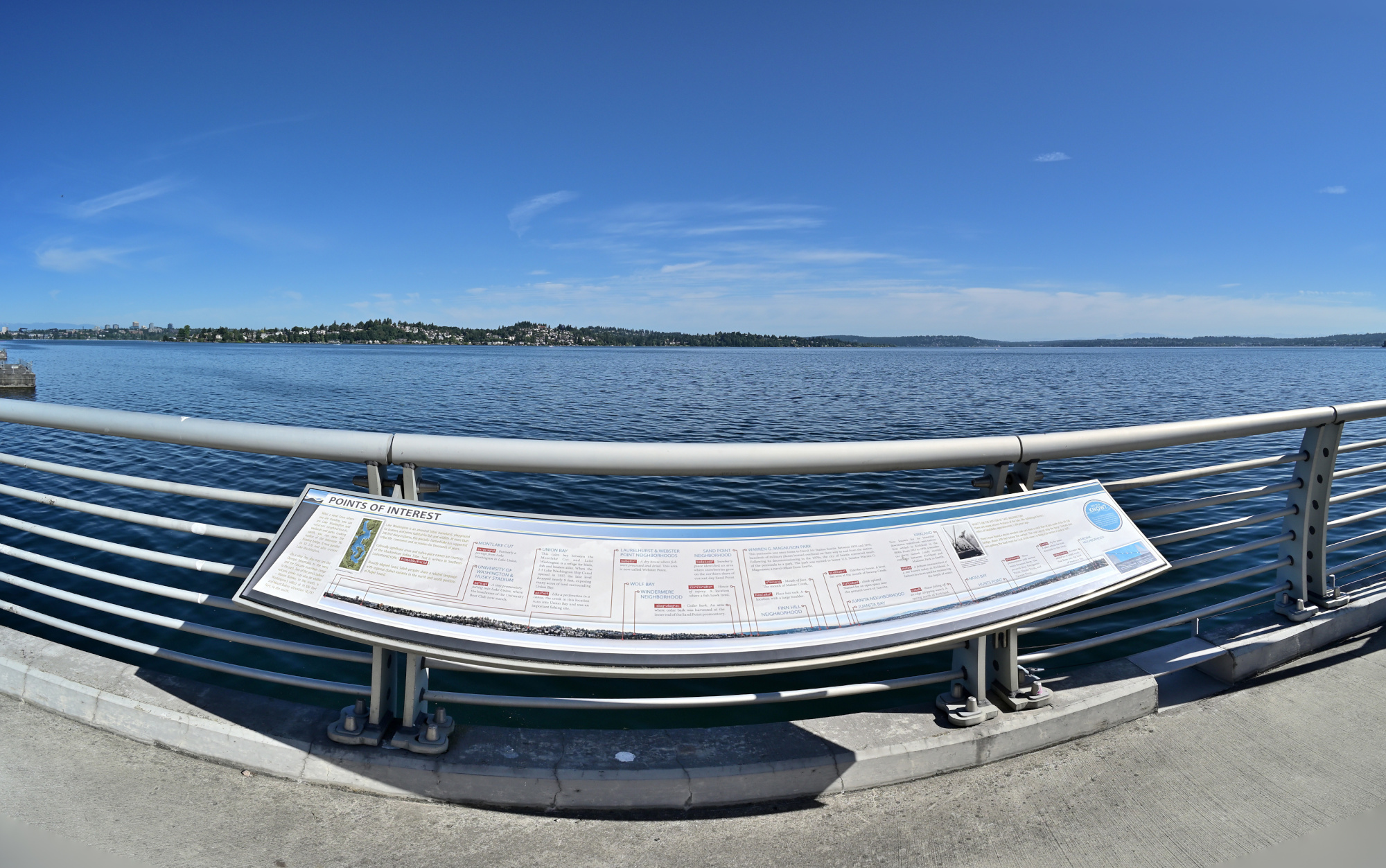
Viewpoint 4
Interactive Panorama 520 Bridge 4

1/1000s f/5,6 ISO 100/21° f=7,5mm
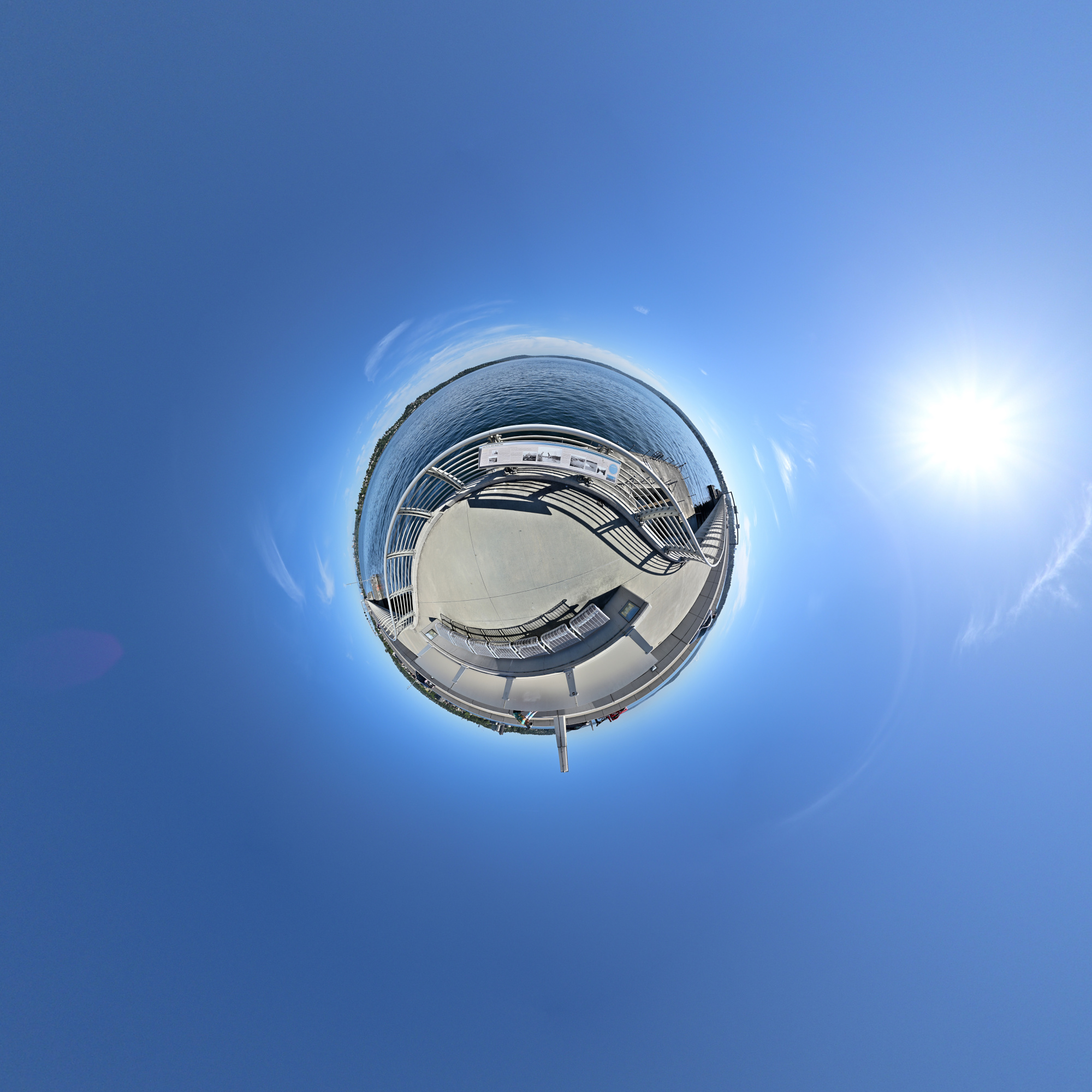
1/1000s f/5,6 ISO 100/21° f=7,5mm
The elders say the sky speaks to those who listen. I stood on sacred ground, raised my hand to the wind, and the eagle came — gliding from the sunlit heights, answering the silent call of the tribe. In that moment, the spirit of the sky revealed itself, and I captured its flight in a single frame.
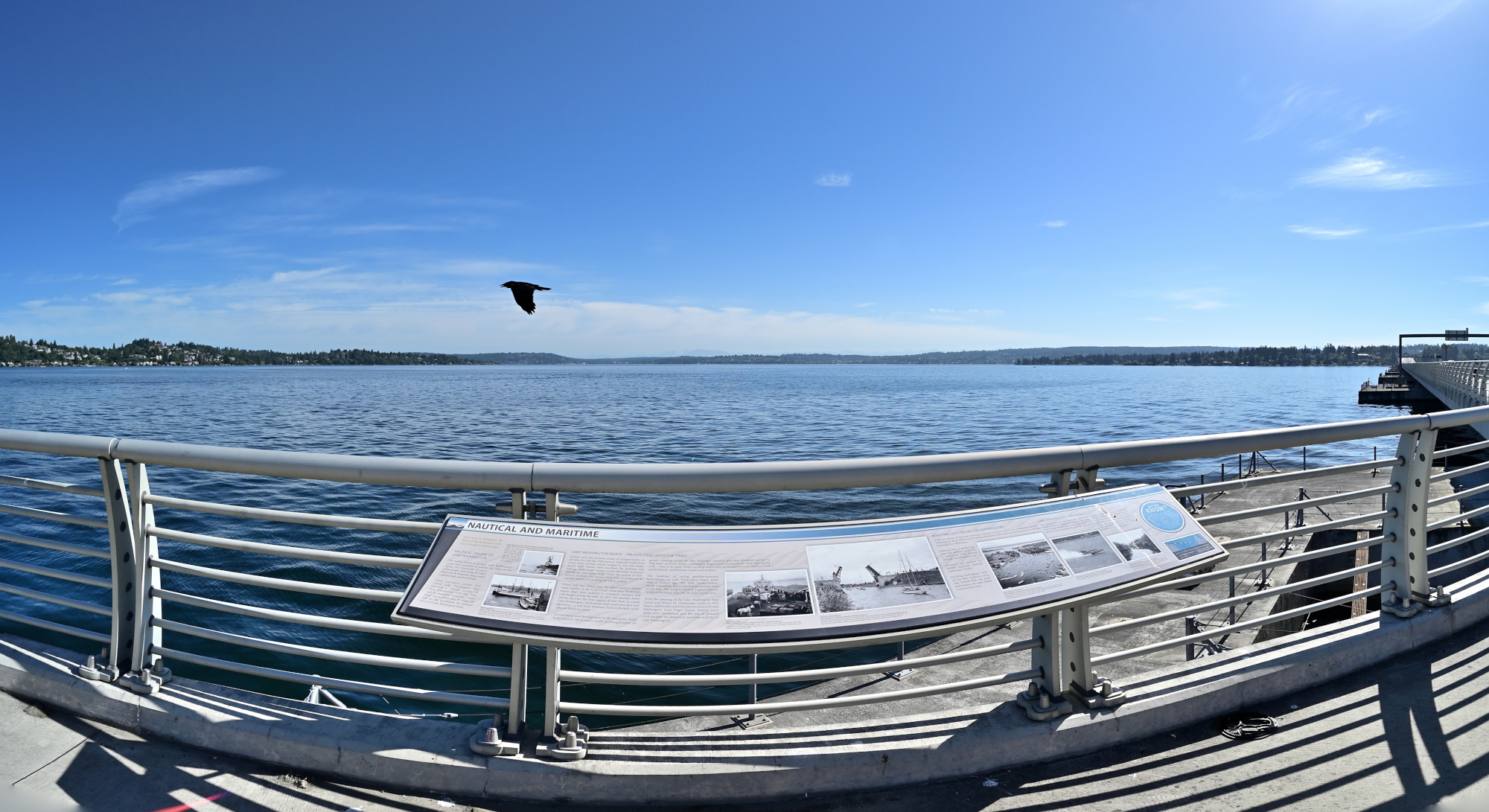
Viewpoint 5
Interactive Panorama 520 Bridge 5

1/1000s f/5,6 ISO 100/21° f=7,5mm
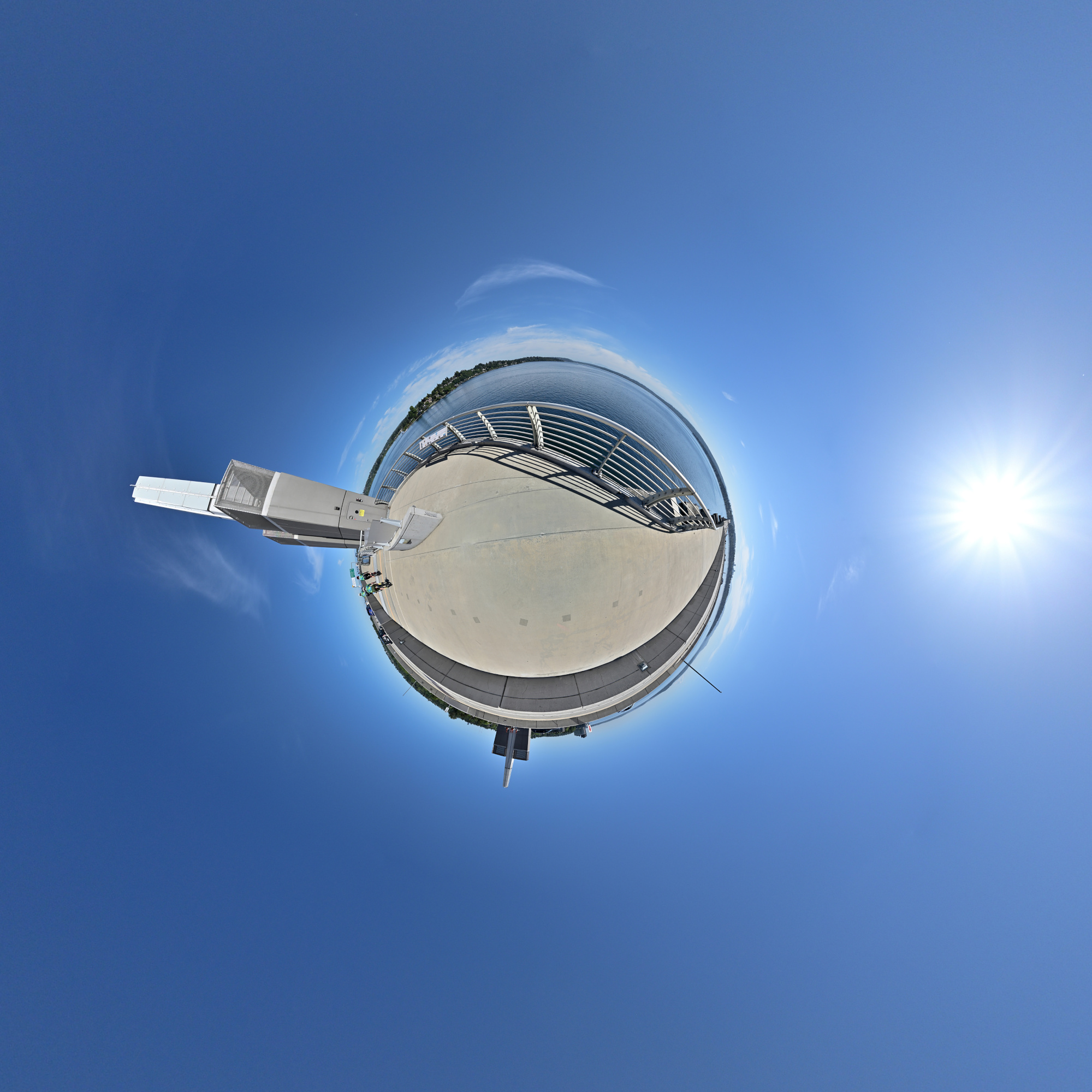
Viewpoint 6
Interactive Panorama 520 Bridge 6
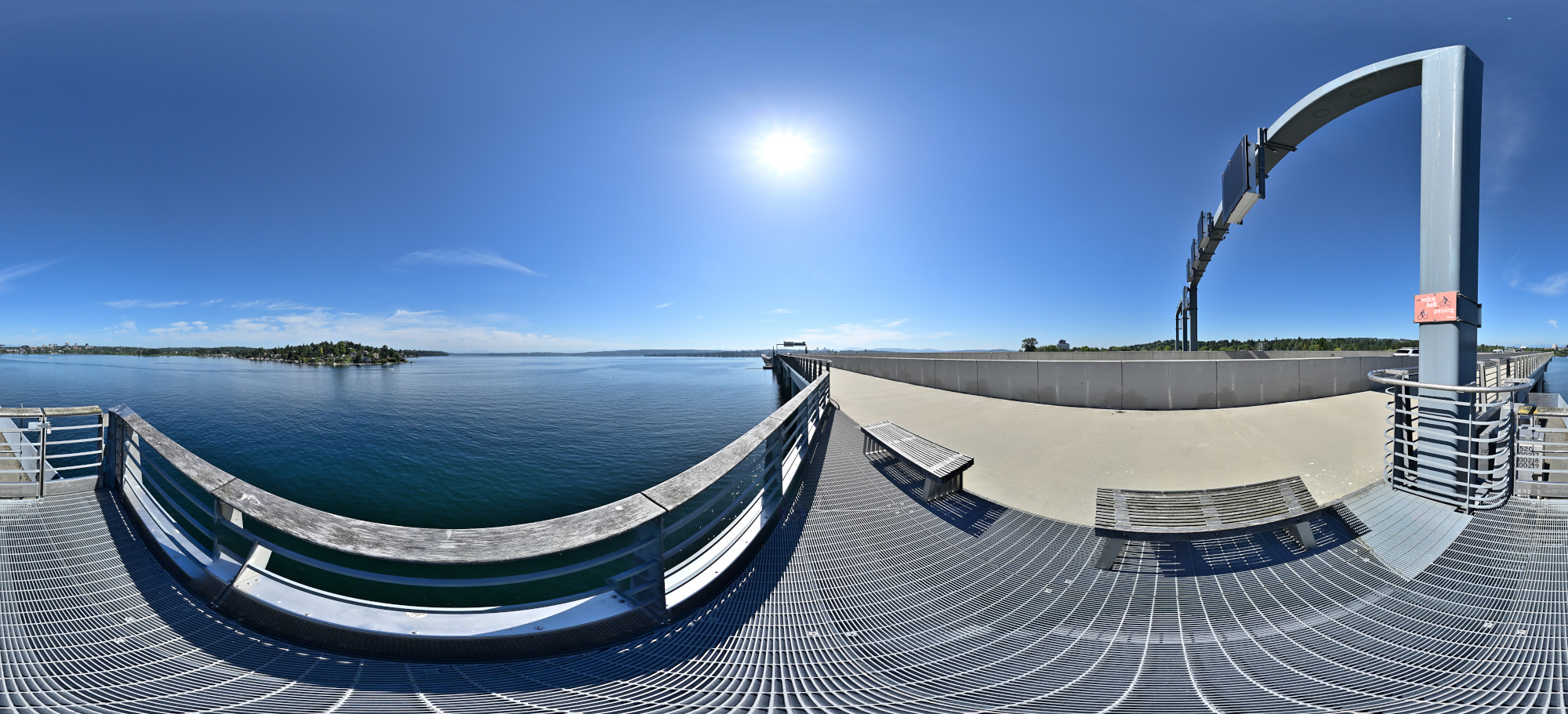
1/1000s f/5,6 ISO 100/21° f=7,5mm
If it weren't for the field of view limitation, this bridge sign would be poking out of your screen right now.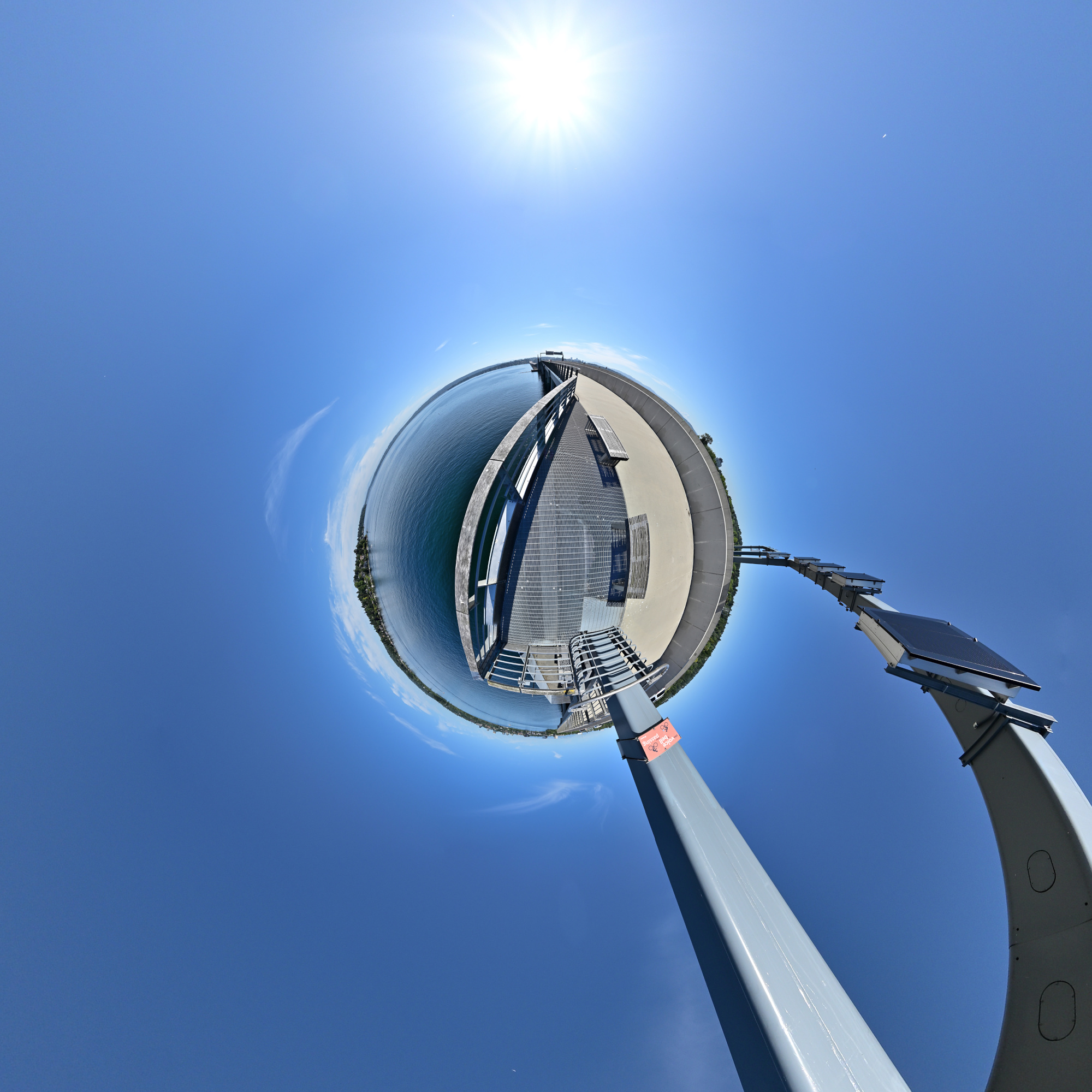
Viewpoint Foster Island
At the Washington Park Arboretum
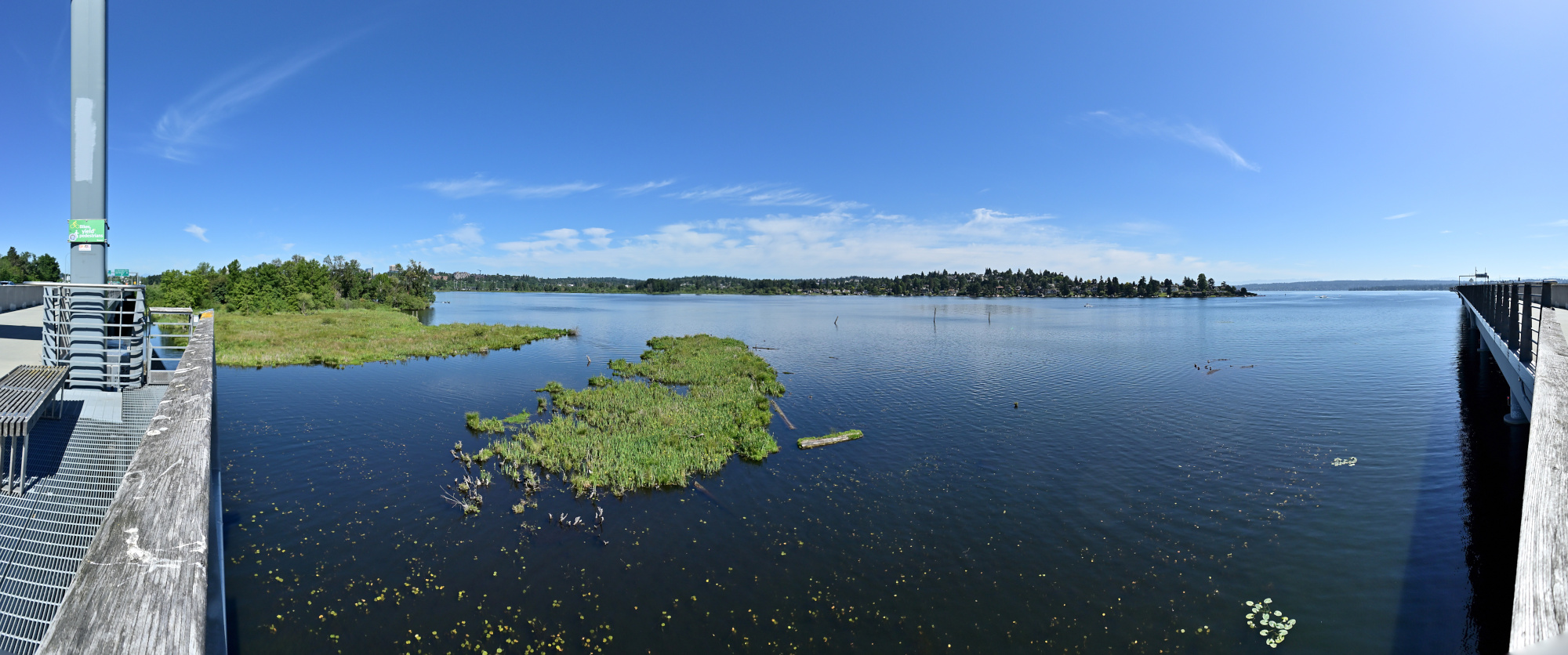
1/1000s f/5,6 ISO 100/21° f=7,5mm
Viewpoint Marsh Island
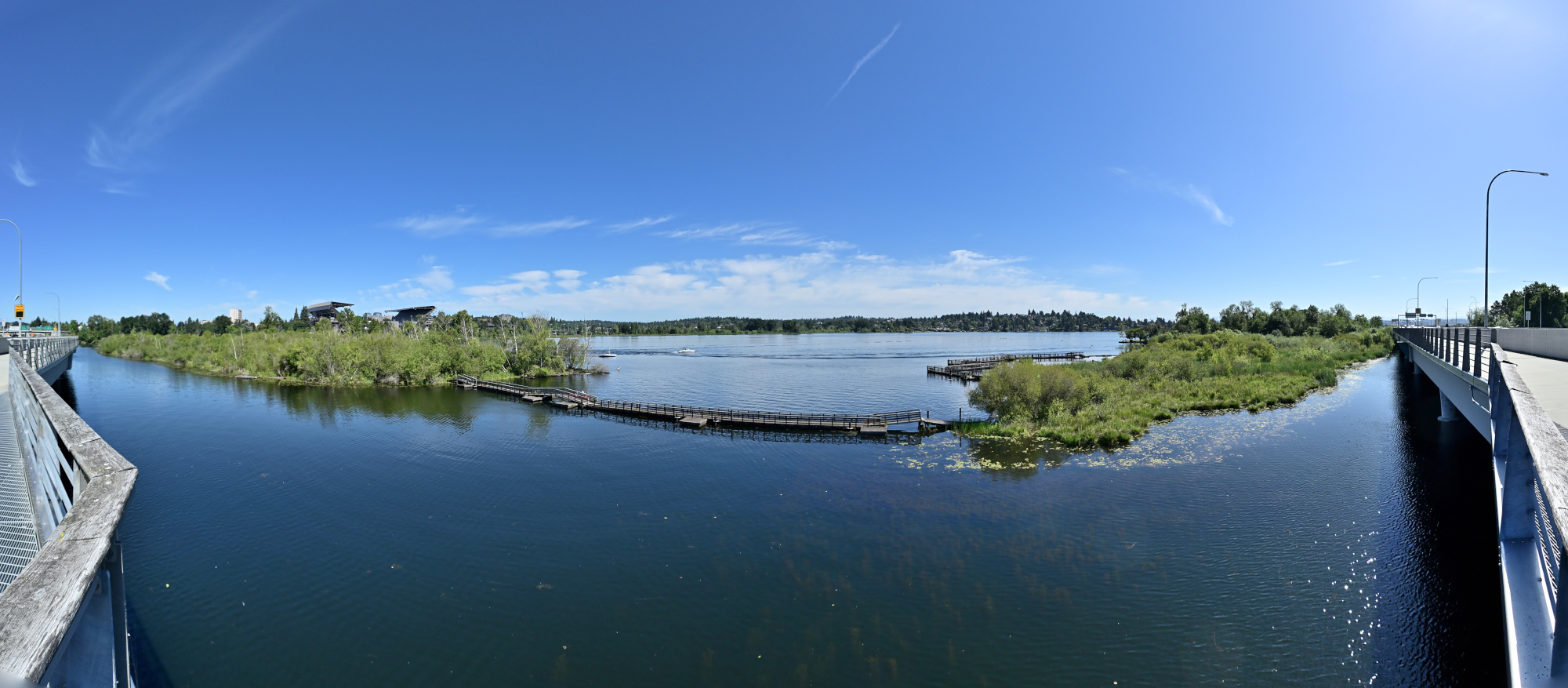
1/1000s f/5,6 ISO 100/21° f=7,5mm

1/1000s f/5,6 ISO 100/21° f=7,5mm
Viewpoint Bike and Pedestrian Bridge
Interactive Panorama Bike and Pedestrian Bridge

1/1000s f/5,6 ISO 100/21° f=7,5mm

At the Montlake Bridge: A Century of Connection
The Montlake Bridge, a historic drawbridge opened in June 1925, connects the University District with the Montlake neighborhood across the Montlake Cut.
Interactive Panorama Montlake Bridge
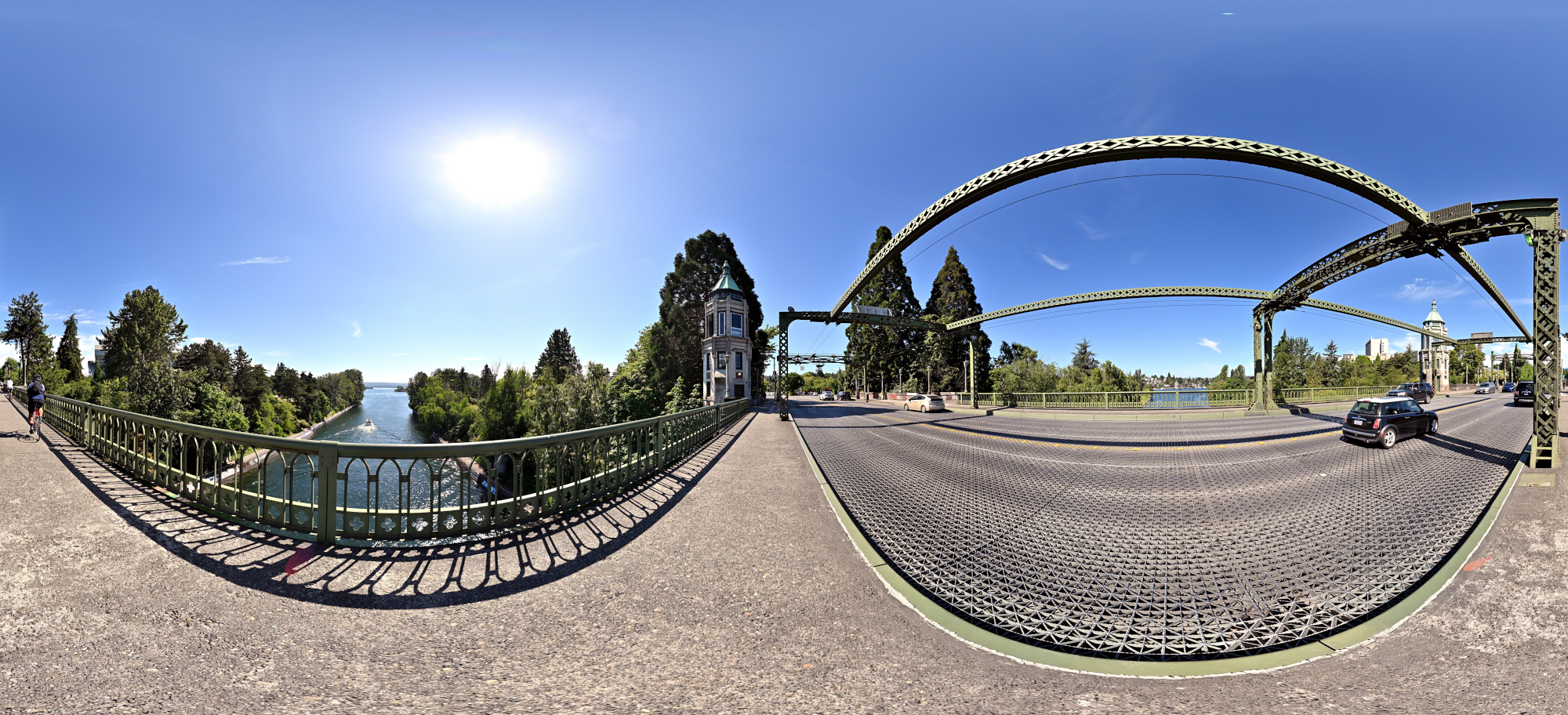
1/1000s f/5,6 ISO 100/21° f=7,5mm
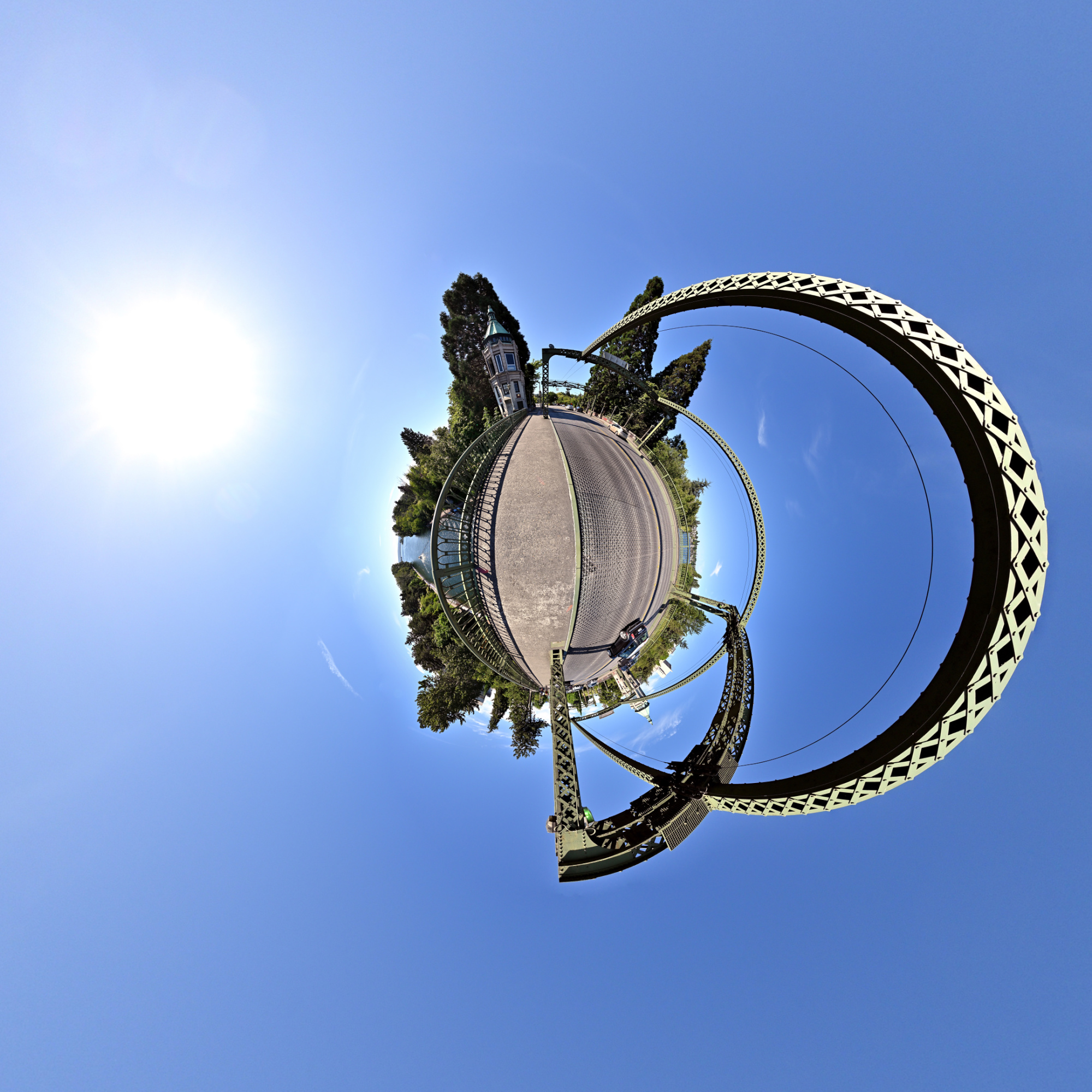
In moving traffic, it is always possible that vehicles are only partially captured. To prevent this, multiple shots were taken, which were also used to reduce the number of vehicles on the road. In this case, not all images are fully connected to each other via control points. Only the original images are.
The duplicate images are then linked only via control points. This makes everything much simpler.
View from the other side of the canal.
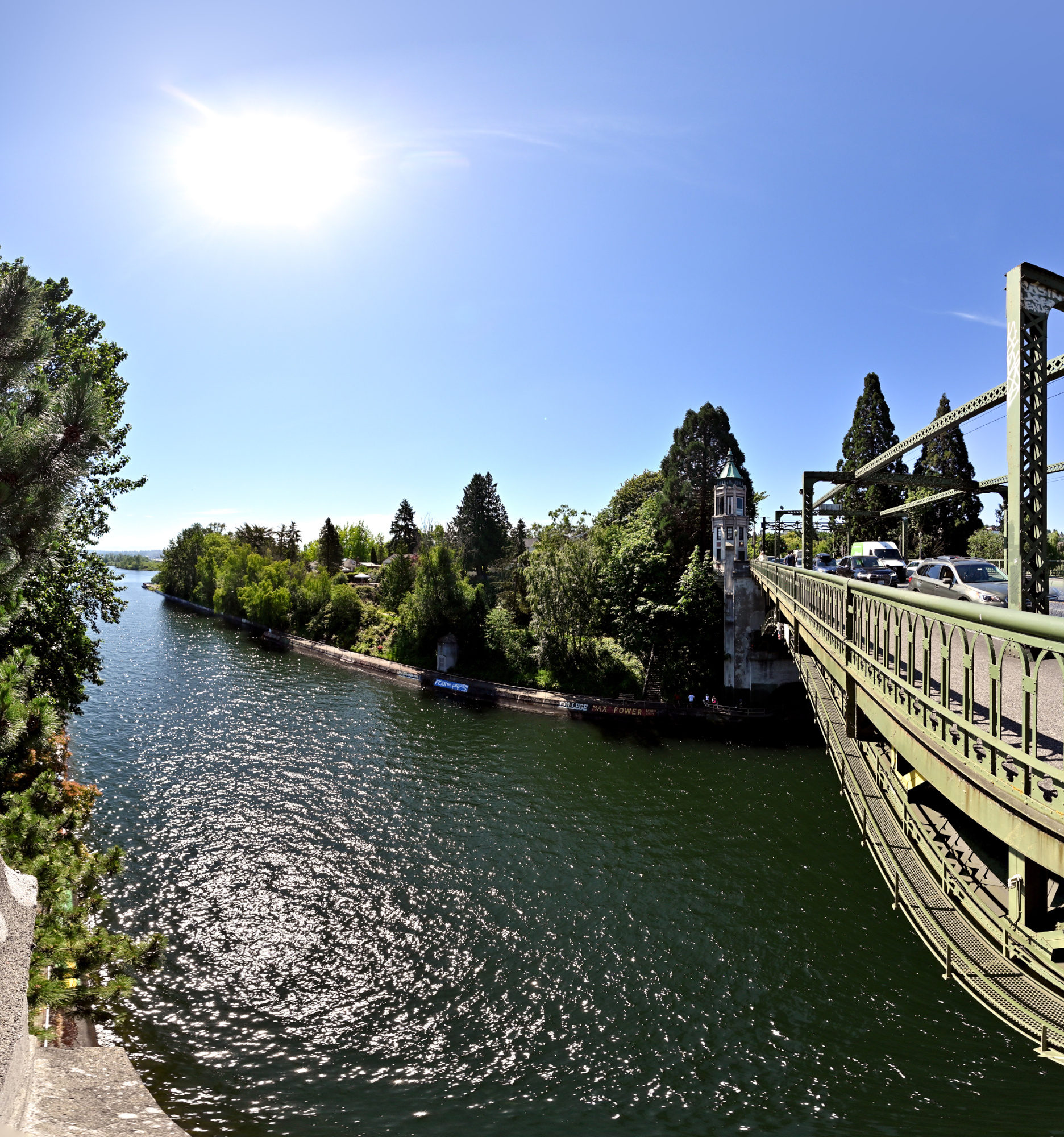
1/1000s f/5,6 ISO 100/21° f=7,5mm
GPS map
To create the GPS map in cPicture, select the pictures with GPS data and click the map icon in the toolbar.
To get all panoramic images with GPS, enter the following in the search box at the upper right:360x180.jpg %gps=1This search performs two functions:
360x180.jpgmatches all panorama images with filenames ending in this pattern. Adjust this part if a different naming convention is used%gps=1filters for images that contain GPS metadata
After the search completes, select all images from the search result to display on the map.
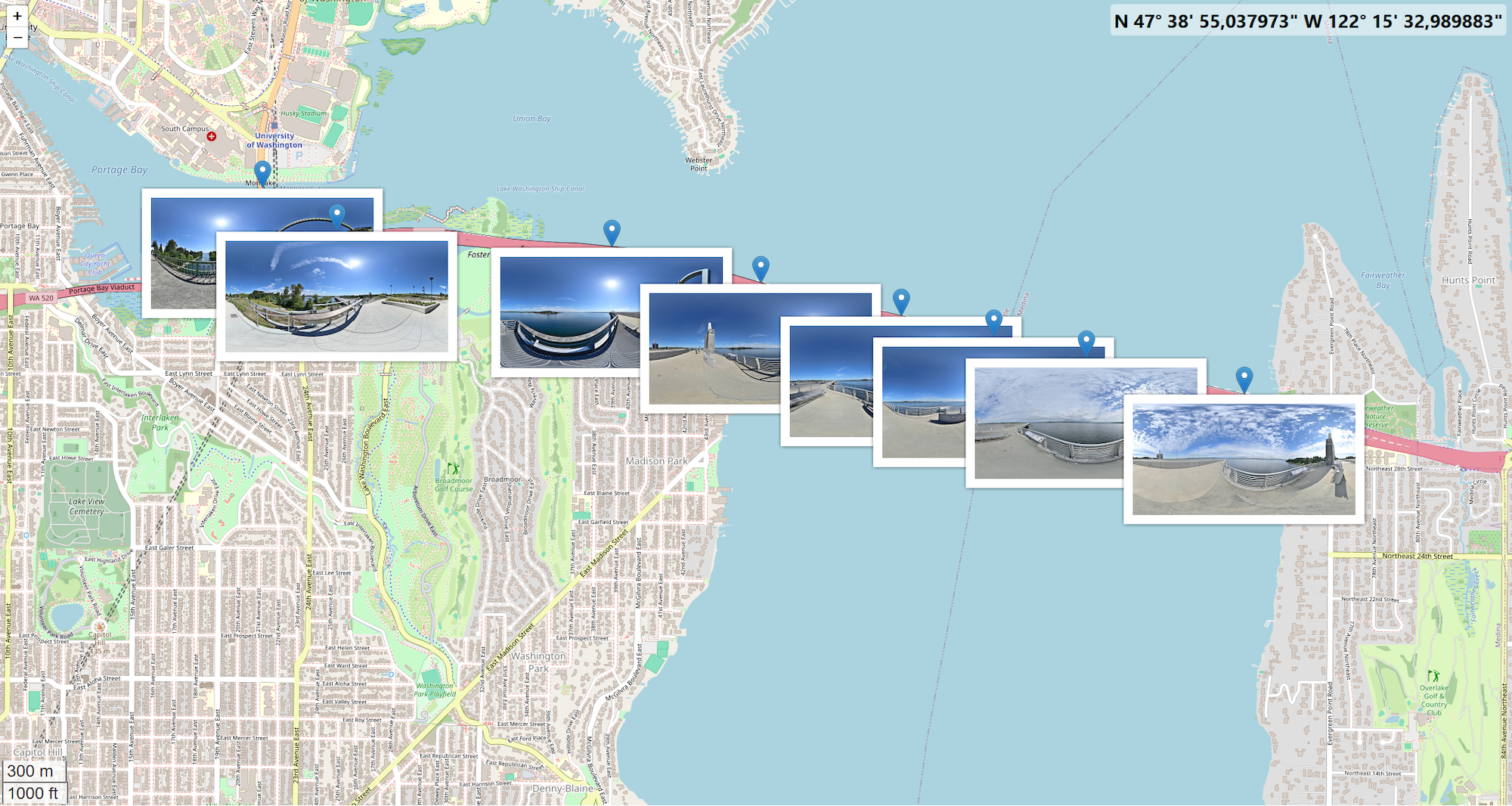
-
For landscape-style panoramas, a nodal adapter on a tripod is not necessary. However, with close objects like the guard rail, a nodal adapter is recommended. ↩
-
In panorama photography, the nadir is the point directly below the camera. PTGui's viewpoint correction makes handheld nadir pictures easy to stitch. ↩
-
Meydenbauer Bay Park
Sunny Sunday afternoon at the Meydenbauer Bay Park.
Interactive Panorama Meydenbauer Bay Park 1
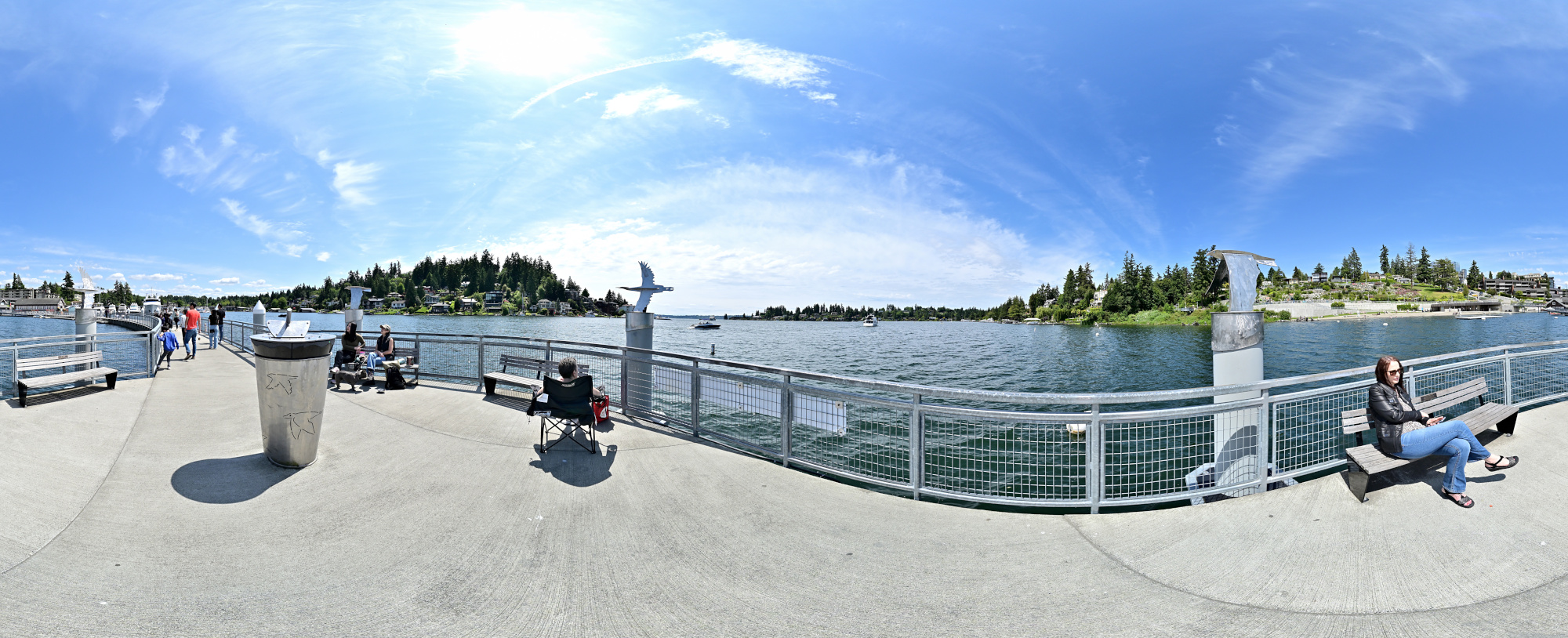
1/1000s f/5,6 ISO 100/21° f=7,5mm
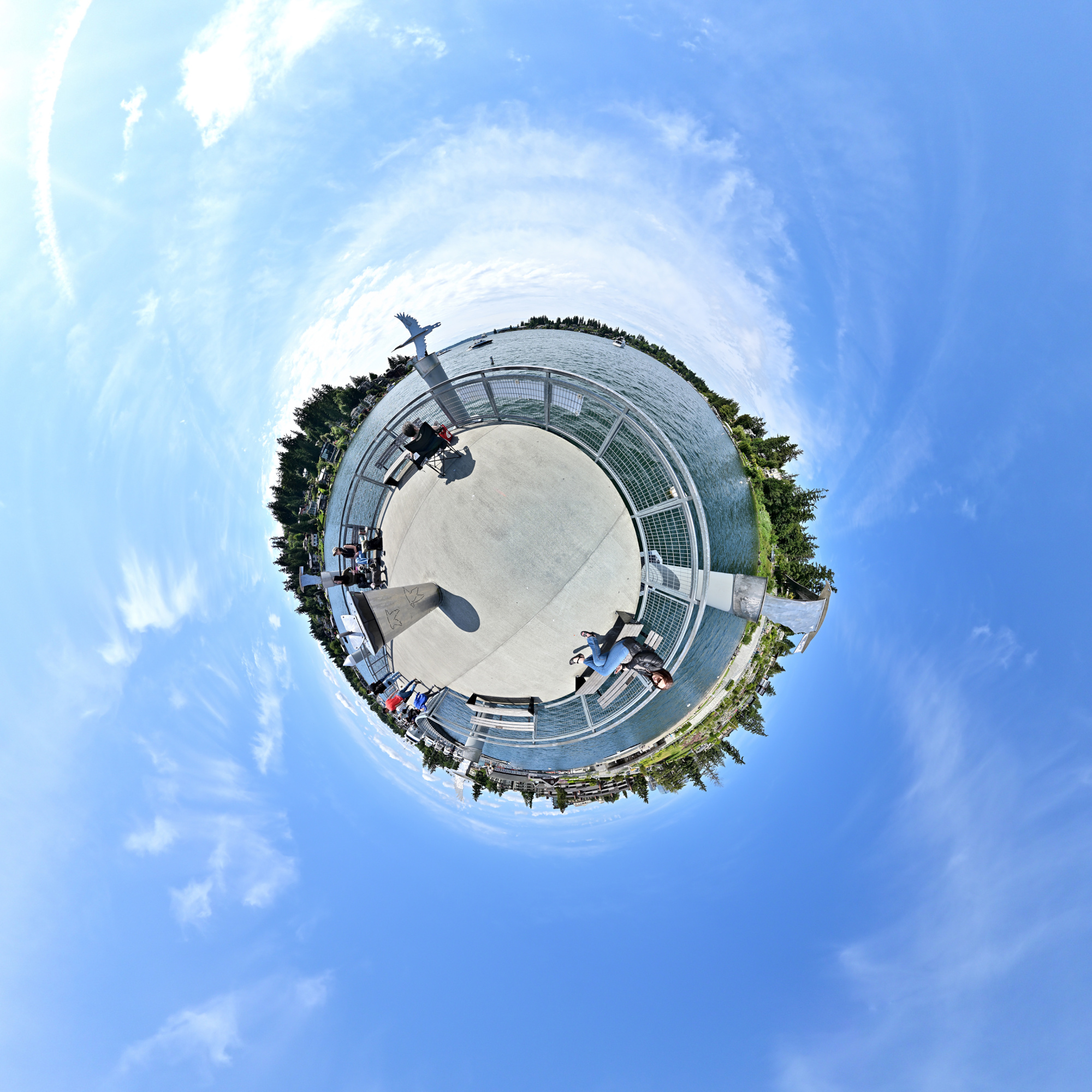
Interactive Panorama Meydenbauer Bay Park 2
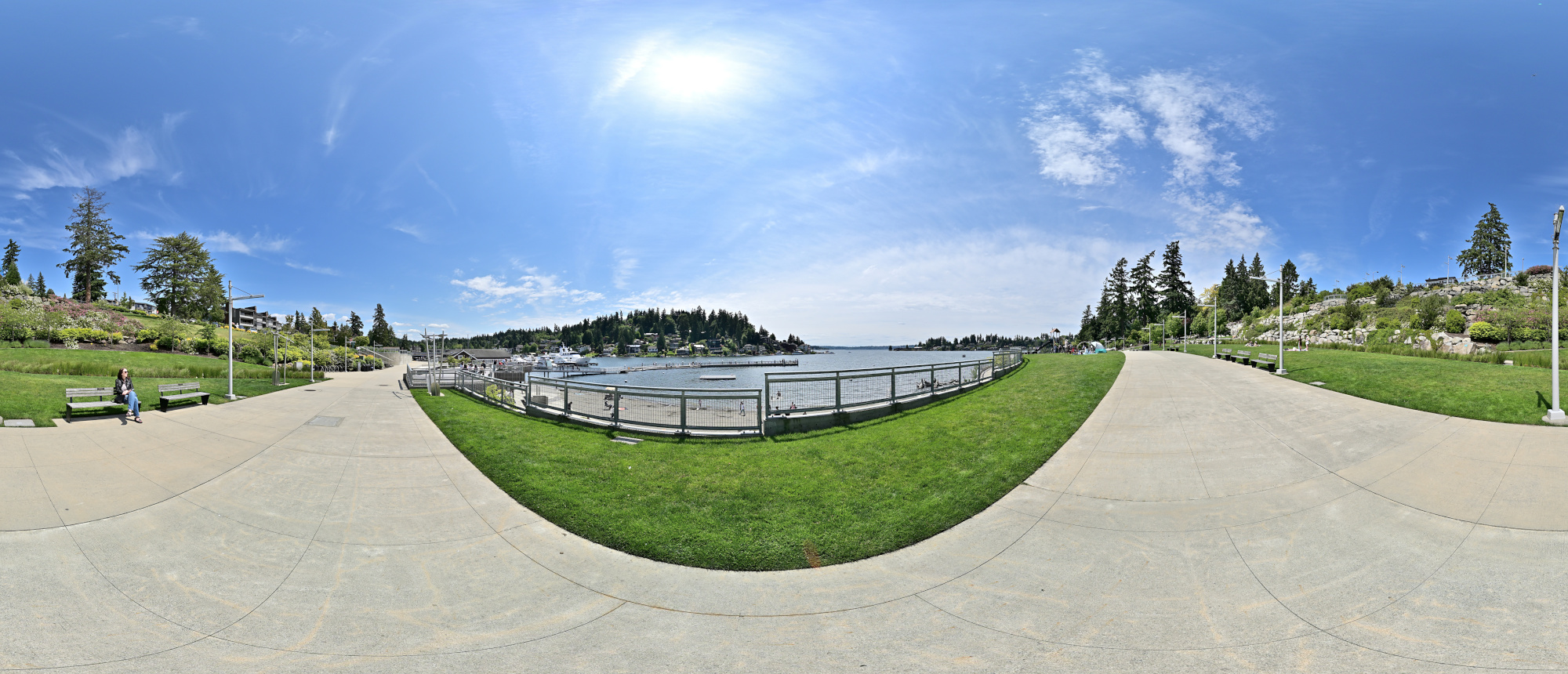
1/1000s f/5,6 ISO 100/21° f=7,5mm
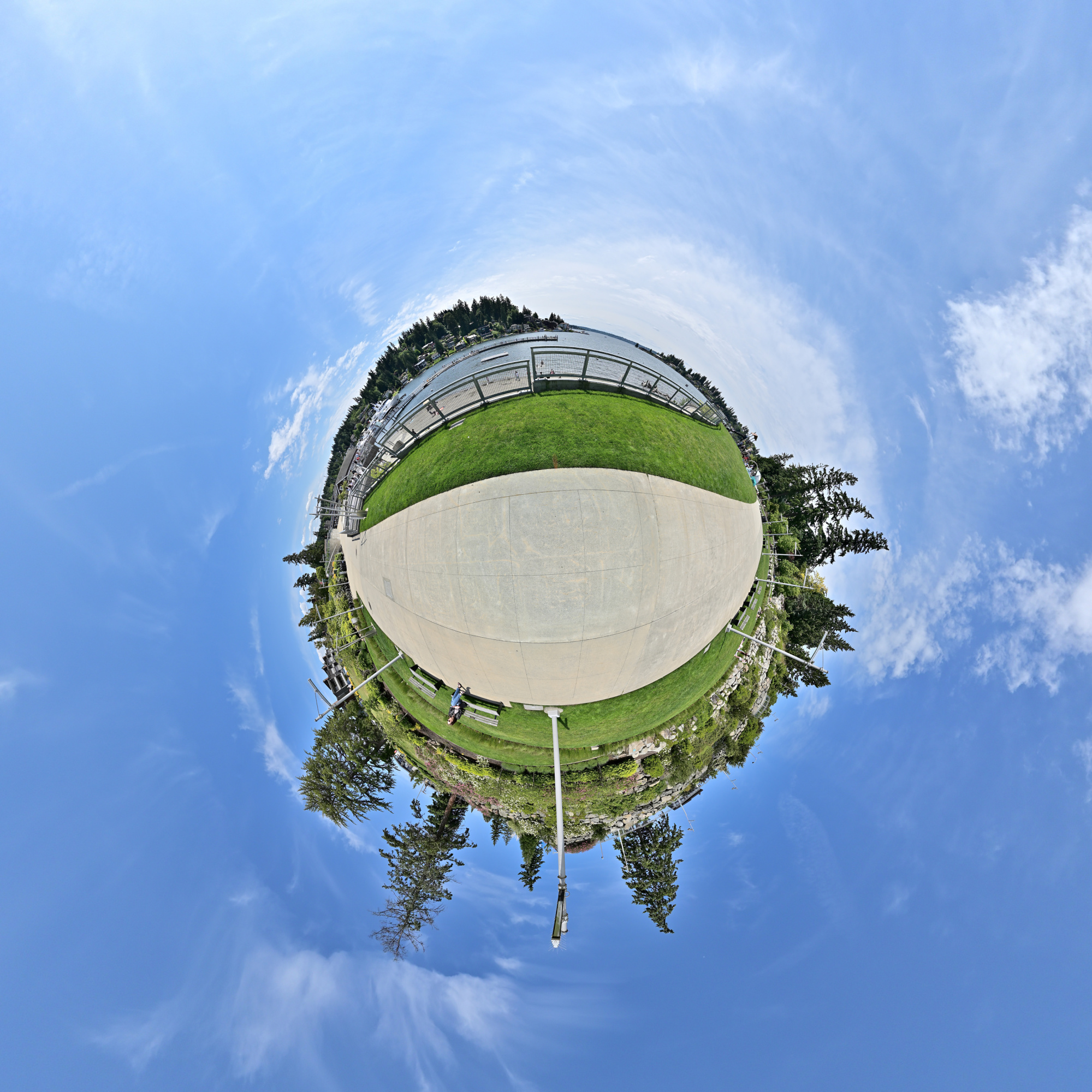
cPicture map
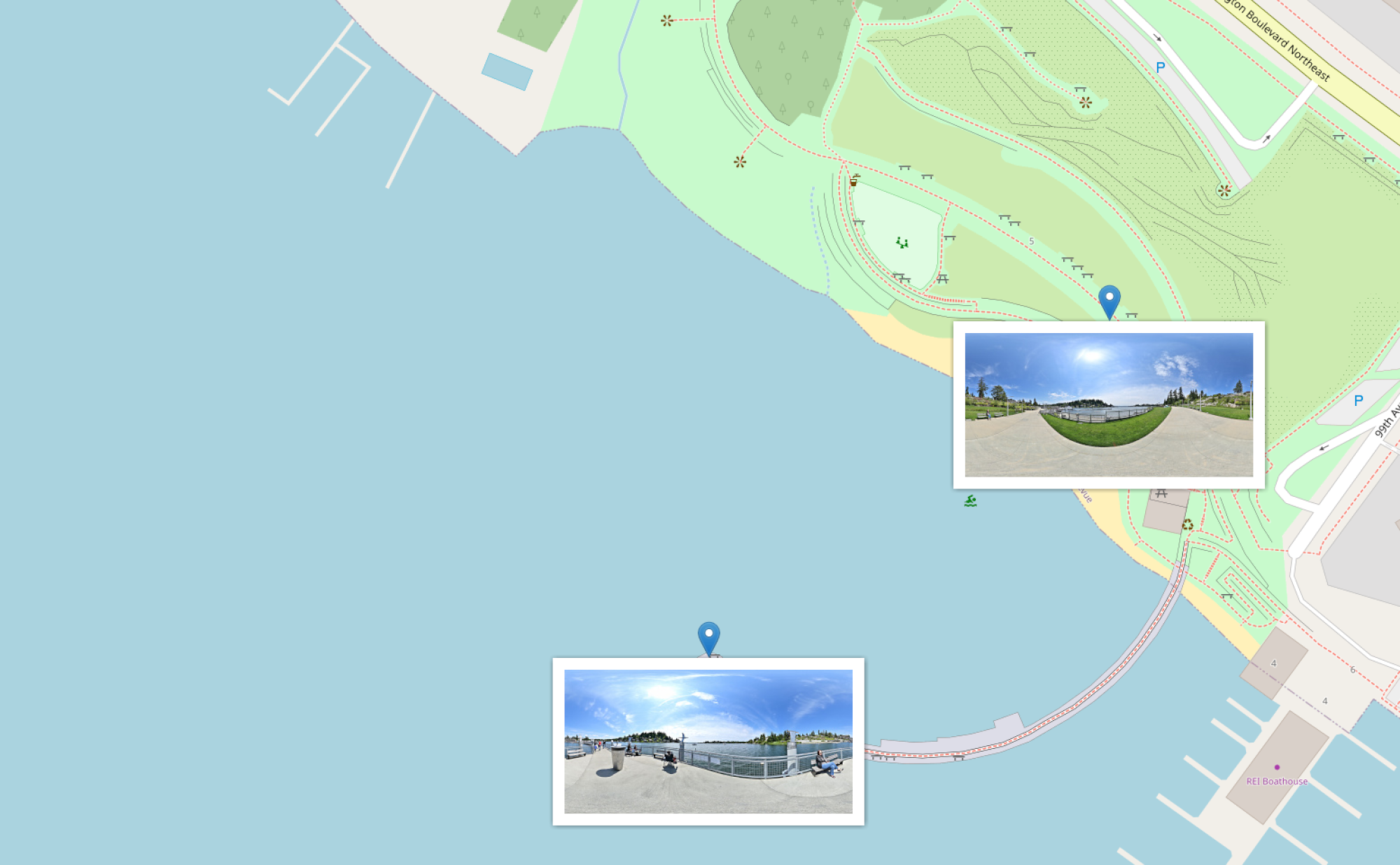

1/1000s f/5,6 ISO 100/21° f=7,5mm

This panorama was captured from 7 vantage points on the observation platform.
Almost like The Tower Panorama.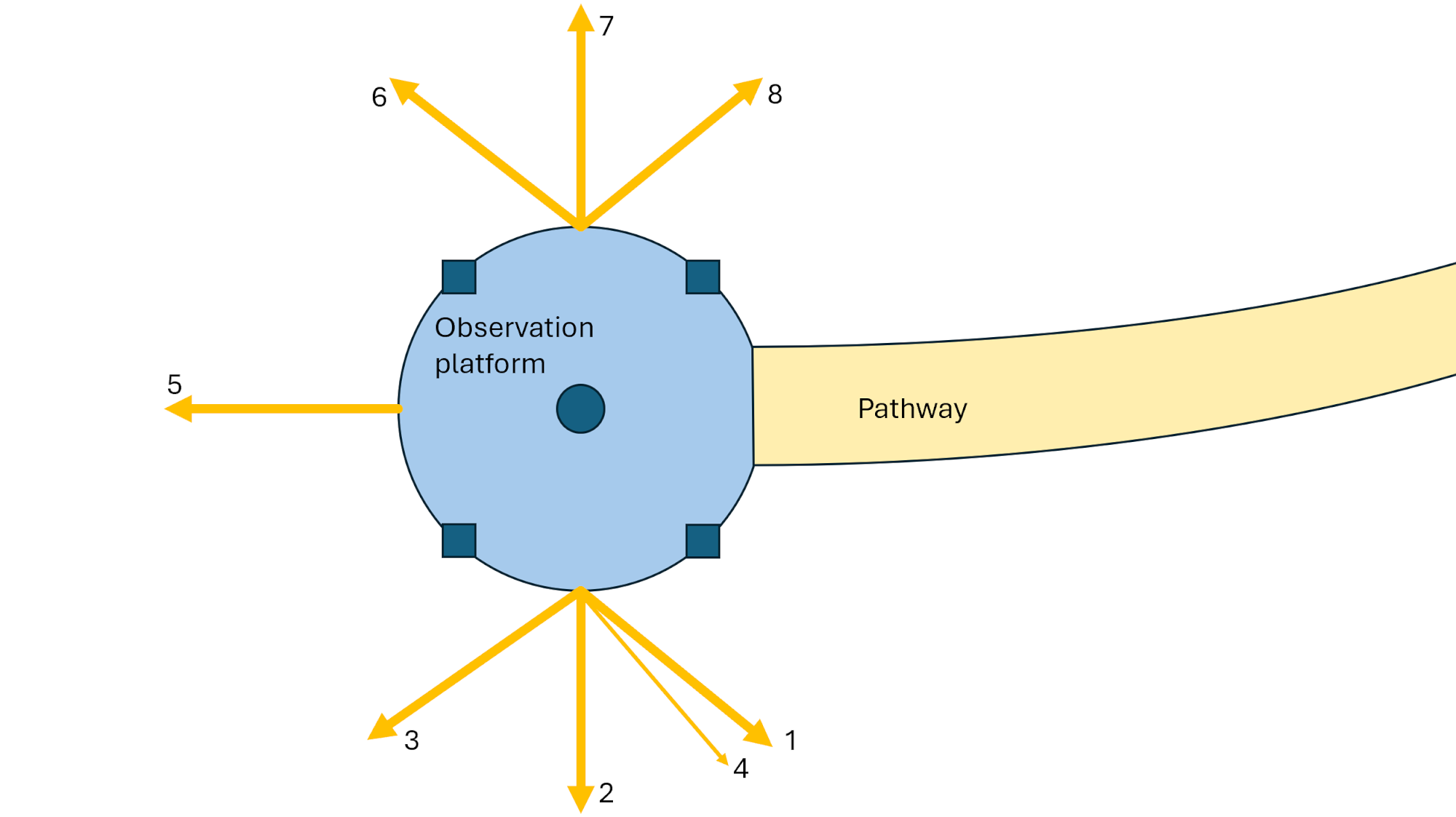
A total of eight images were used to create the panorama. One additional shot (#4) was taken moments later to capture a boat that had just entered the scene. Since this image was slightly out of alignment, it was registered to the first frame using control points and selectively masked to seamlessly integrate the boat into the final composition.
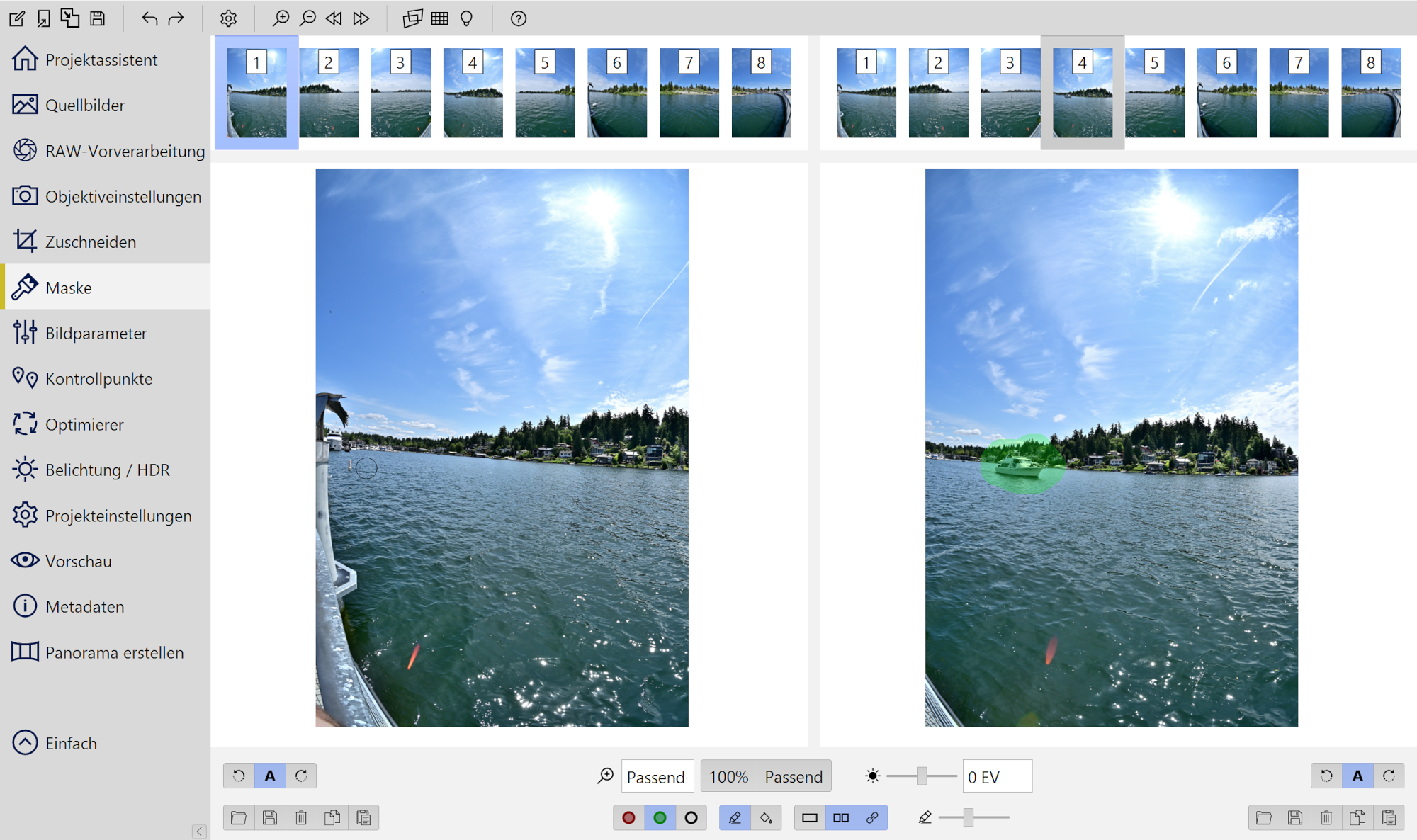
1/1000s f/5,6 ISO 100/21° f=7,5mm

